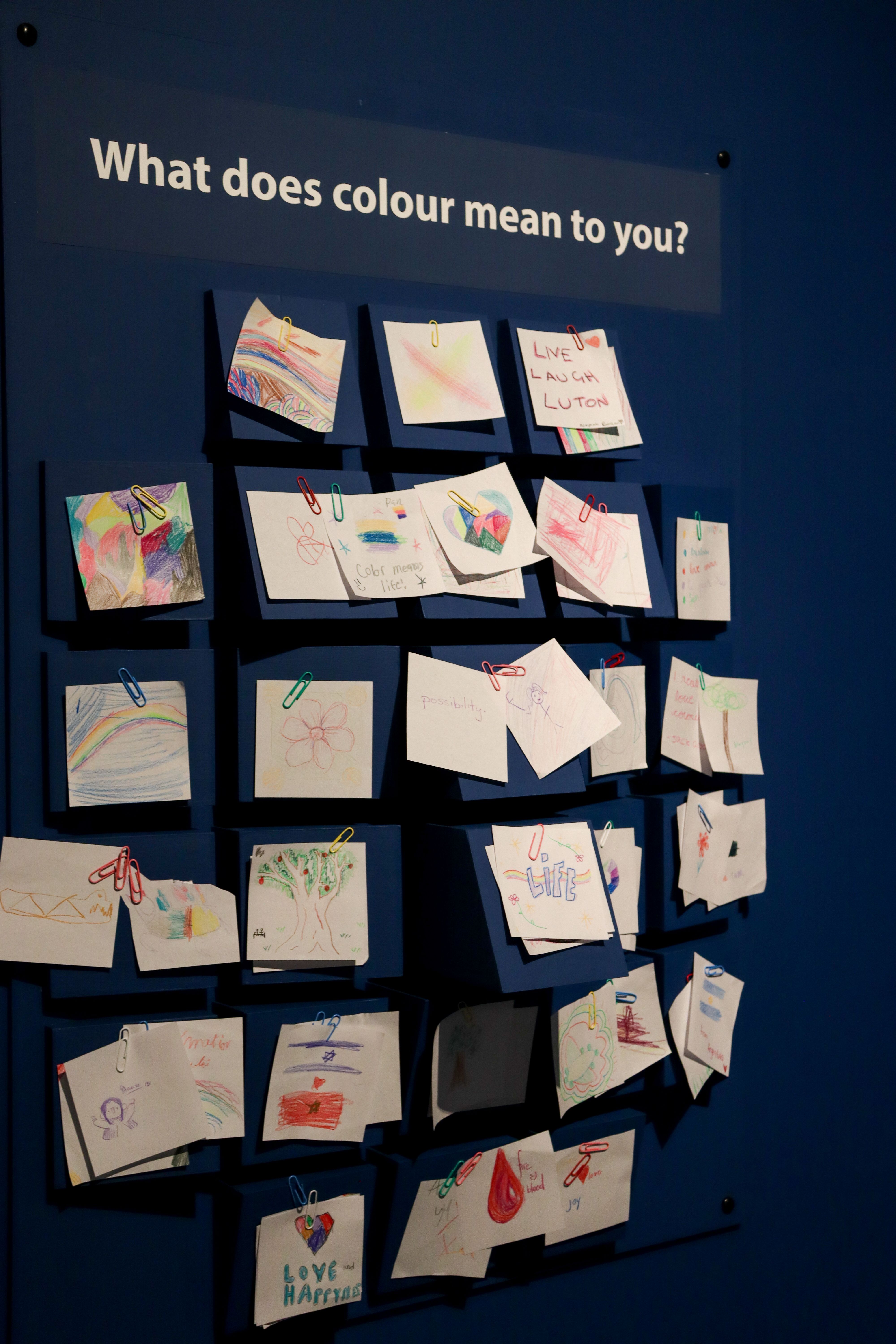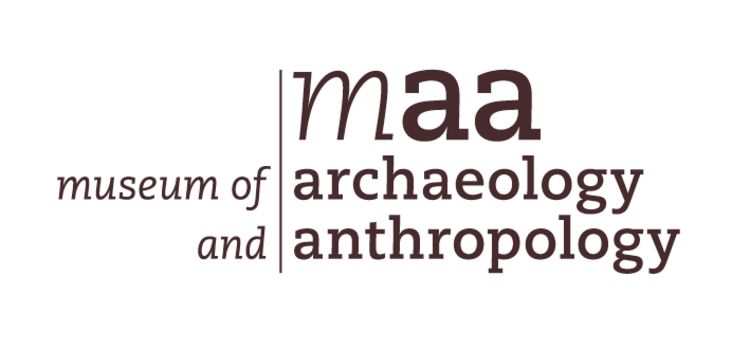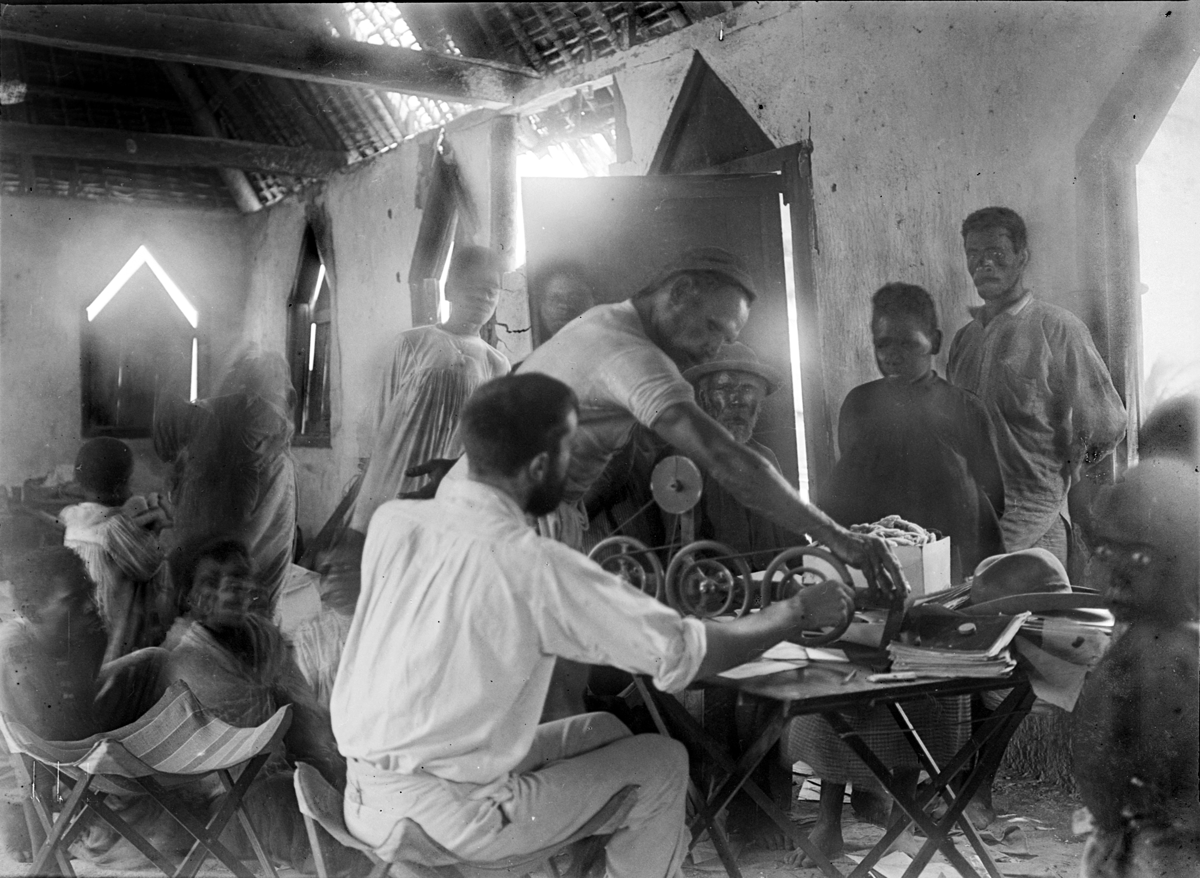Colour: Art, Science & Power
26 July 2022 - April 2023
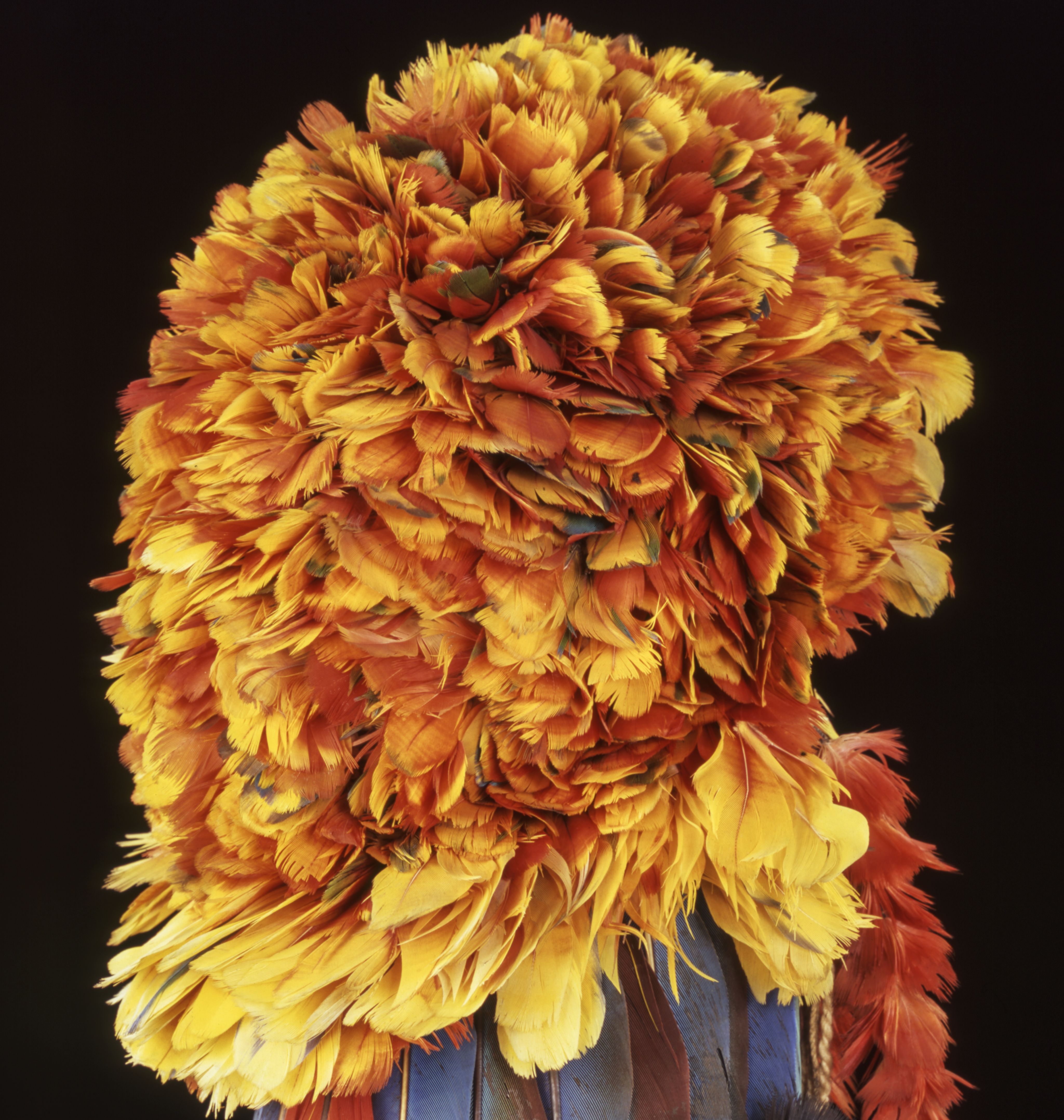
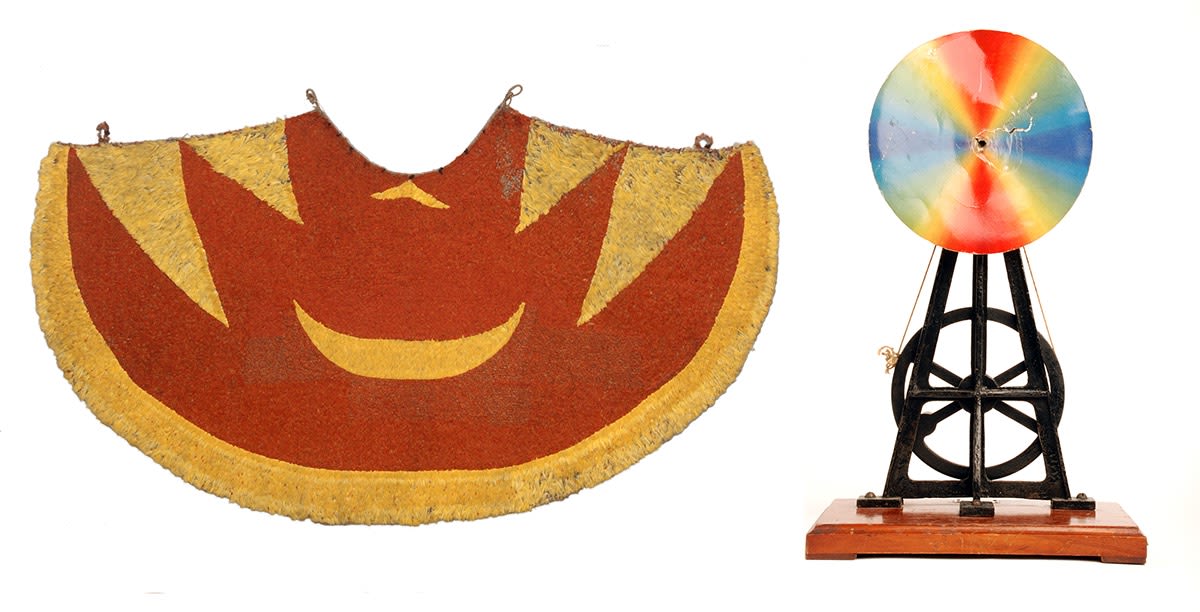
'Ahu 'ula, Royal Hawaiian Feather Cloak. MAA Z 6140; Colour Wheel. 19th century. Used to test colour perception. Whipple Museum of the History of Science 4421
'Ahu 'ula, Royal Hawaiian Feather Cloak. MAA Z 6140; Colour Wheel. 19th century. Used to test colour perception. Whipple Museum of the History of Science 4421
Colour is all around us. It reflects and influences our understanding of the world, our emotions, creativity and relations with others. This exhibition invites you to explore different ways that colours are perceived, experienced and given meaning.
COLOUR integrates insights from the arts, humanities and the sciences, bringing together extraordinary objects and artworks from different times and places.
This virtual exhibition is a condensed version of that on display at MAA from July 2022 - April 2023, showcasing remarkable and diverse collections from across the University of Cambridge museums, libraries and colleges. It is organised into sections, highlighting the experience of colour as well as perception, scientific measurement, artistic practice, desire, power, identity and global marketing.
This exhibition was developed in consultation with numerous specialists, including Indigenous colleagues from around the world and local community and student groups. Click here to see a full list of acknowledgements. We welcome your contributions, or thoughts about what colour means to you, using #MAAColour.

Experiencing Colour
Kaleidoscope, 2022
Cambridge Yarn Collective
Kaleidoscope was created by the Cambridge Yarn Collective (Hilary Butler, Clare Collier, Sophie Neville and Dorothy Singer) especially for this exhibition. It is an explosion of colour captured in crochet. The design is inspired by ideas about humans perceive colour, including scientific debates around which colours should be included in the colour wheel, and Seurat's notion that colours are mixed by the eye when placed next to each other.
Holi - 4 March 2020
India, Uttar Pradesh, Barsana
Shutterstock
Holi is one of the most vibrant and joyous celebrations in the Hindu calendar. This festival of colours ushers in the start of spring, and celebrates the triumph of good over evil.
There are distinct regional variations. In Barsana in Braj, the story of love between deities Krishna and Radha is celebrated. Watch a video below of the celebration in 2020.
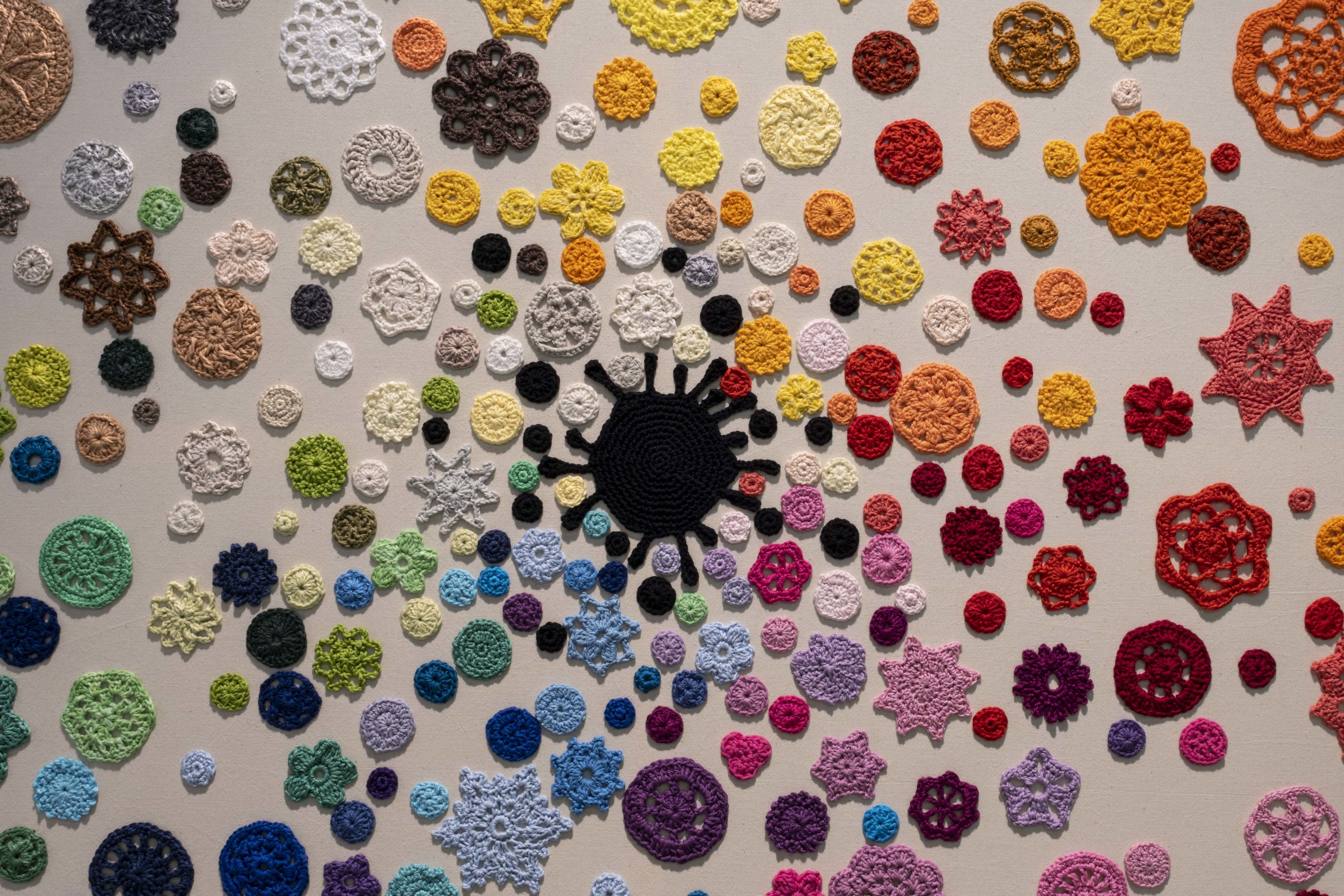
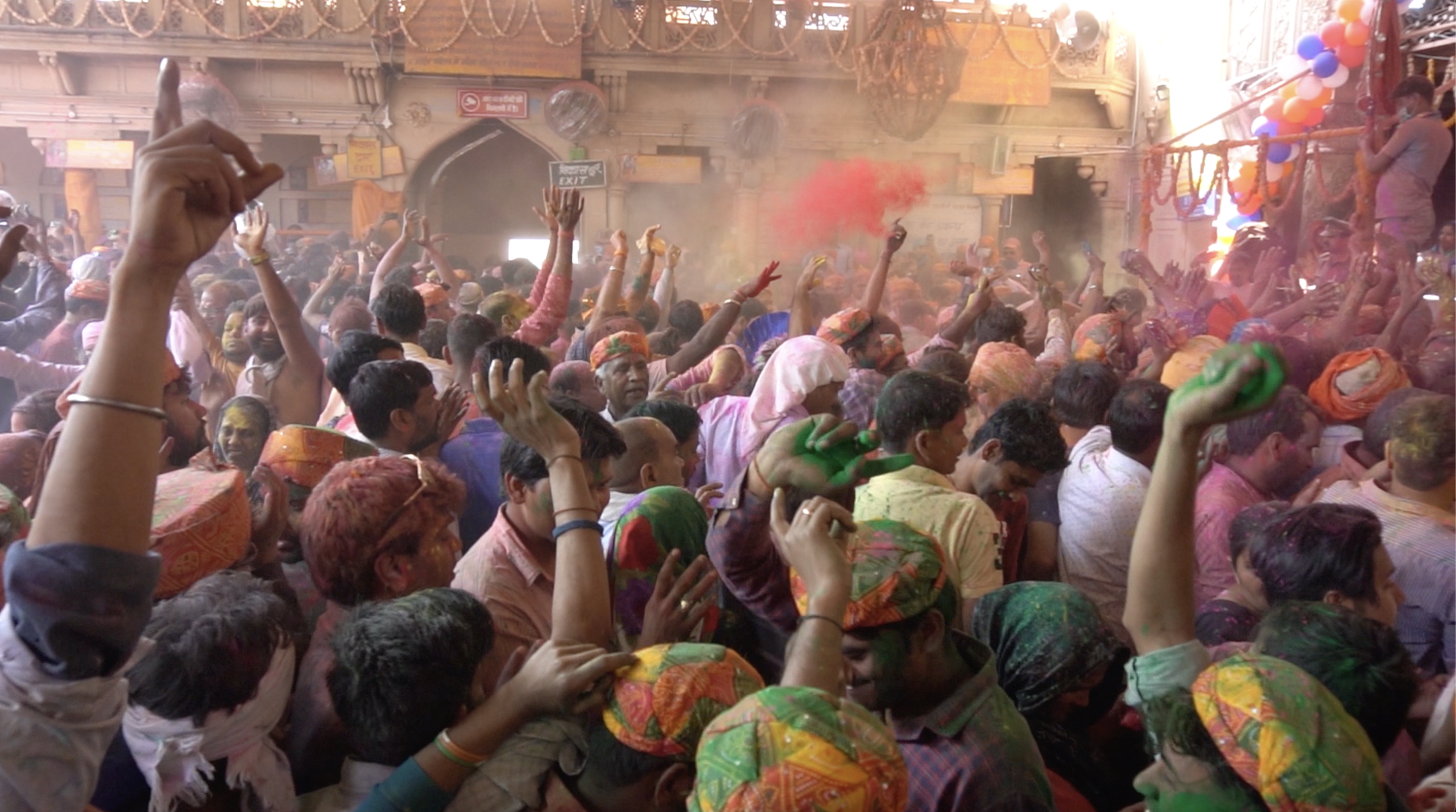
Covent Garden Study, 1984
Helen Frankenthaler (1928-2011)
Kettle's Yard, University of Cambridge
Helen Frankenthaler became one of the defining artists of American Abstract Expressionism, and experimented with different colour combinations throughout her career. From 1952 she developed a distinctive and influential style known as 'soak stain', where a thin layer of paint is absorbed directly into the canvas backing.
Covent Garden Study explores the bright hues created by overlapping pools of red, pink and orange. The brilliant coloured and flat background contrasts with the thick lines and blobs of paint which appear to float above the surface.
Mardayin Djang : Water Dreaming of my Father's Country, 1993
Roger Yilarama
Gunbalanya, Arnhem Land, Australia
MAA 1994.234
For many Aboriginal people in Australia there is an intrinsic connection between human being and their 'Country' or ancestral lands. Different coloured ochres reside in the land, absorbing the history of the earth and referencing the movements of the ancestral beings whose activities created the features of landscape.
This bark painting depicts the land or 'Country' of the artist's father and mother. It expresses the close relationship between place, kin and the substance of colour. The different shade of ochre and distinct styles of cross-hatching create a shimmering brilliance, which is identified with ancestral power and refers to clan rights over the land.
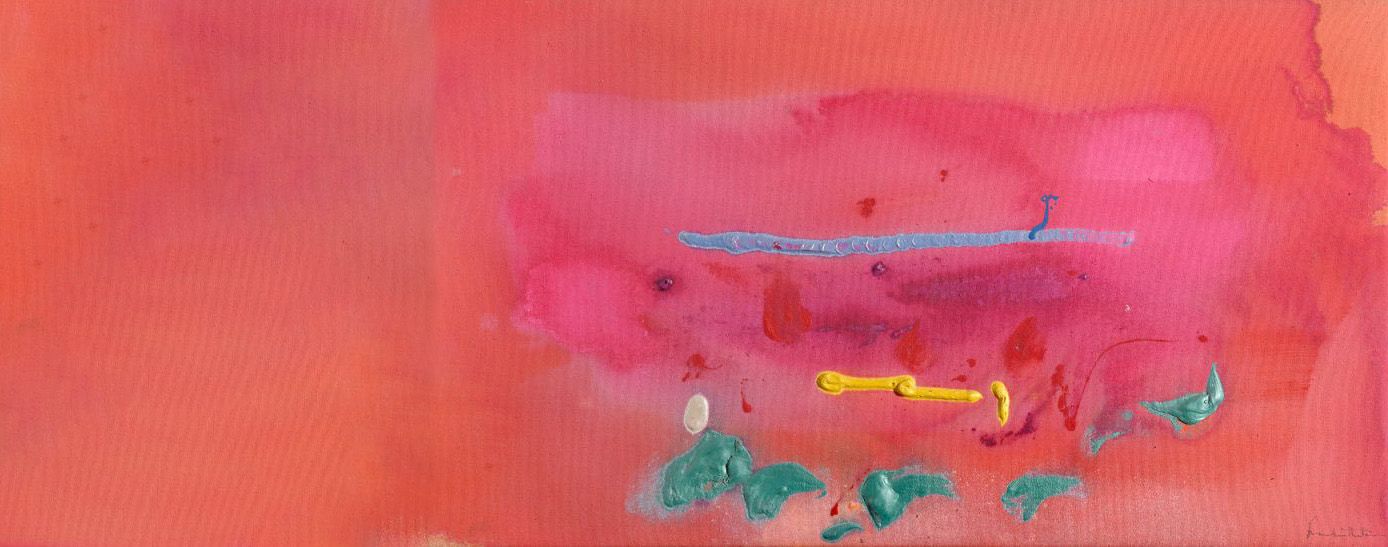
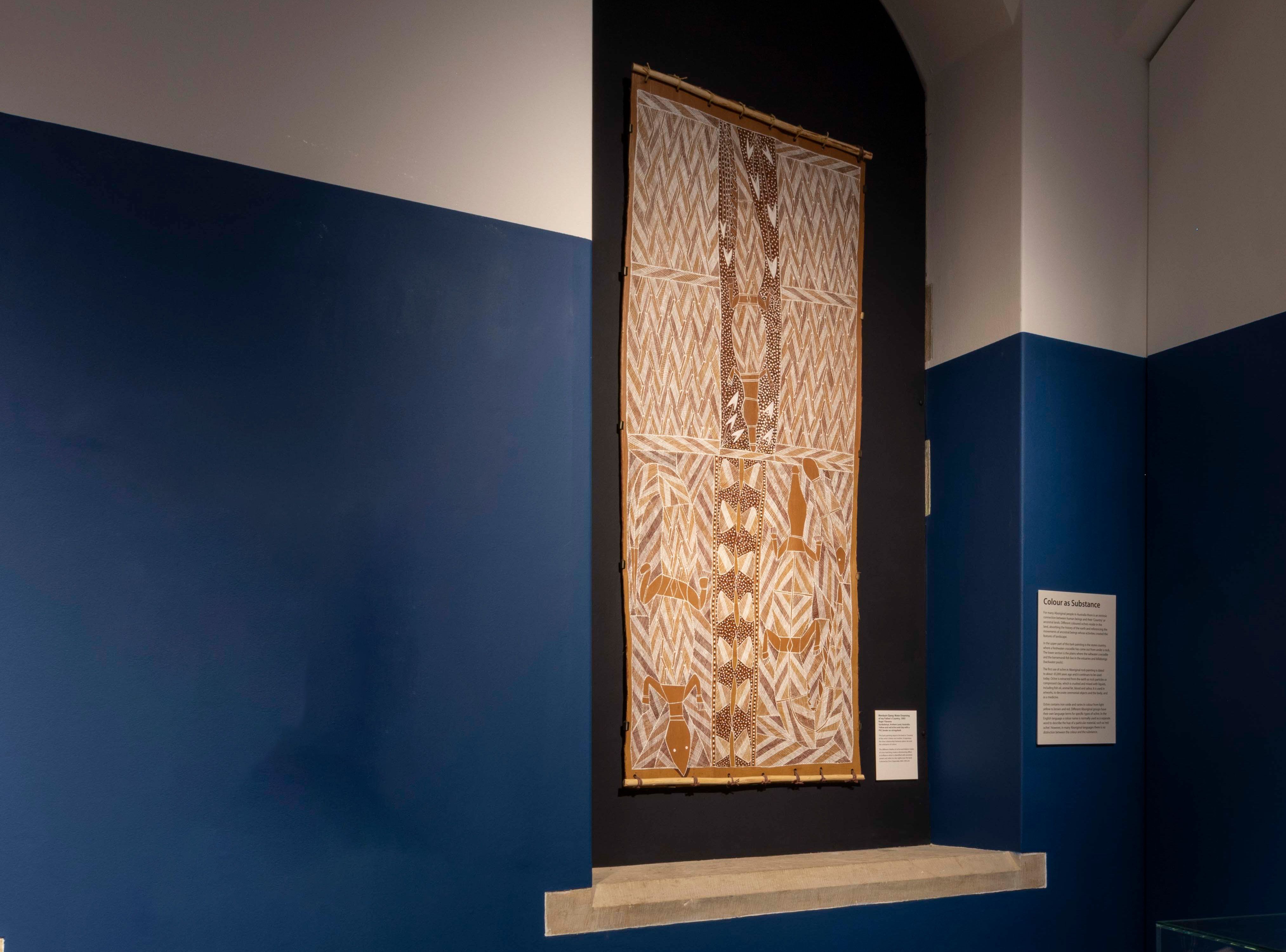
A Colour Symphony, 1921-1922
Arthur Bliss (1891-1975)
A Colour Symphony was inspired by the symbolism associated with different colours in heraldry. The symphony includes four colours; listen to Blue, the third movement, below.
The connotations of the colour blue which Bliss worked with include sapphires, deep water, skies, loyalty and melancholy. Bliss's symphony demonstrates just how closely colour is entwined with our perception of the world. Trying to describe a colour through music is reminiscent of the experiences of some people with synaesthesia, where colour can be heard, felt or even tasted.
2005, BBC National Orchestra of Wales, conducted by Richard Hickox. Reproduced with kind permission of Chandos Records. Published by Boosey & Hawkes Music Publishers Ltd.
Colour & Perception
What is colour?
Colour perception is understood scientifically as the result of interpretations by the human brain of different light wavelengths. Rays of light are focused by the lens in our eye and projected upside down on the back of the eye or retina, which contains a layer of colour-sensitive cells called rods and cones.
Visible light, the colours of the spectrum seen by humans, is a tiny proportion of the electromagnetic field that surrounds us. Other animals see differently. A higher proportion of rods enable some animals to see in the dark, whereas some birds can see ultra-violet and bats can see infrared.
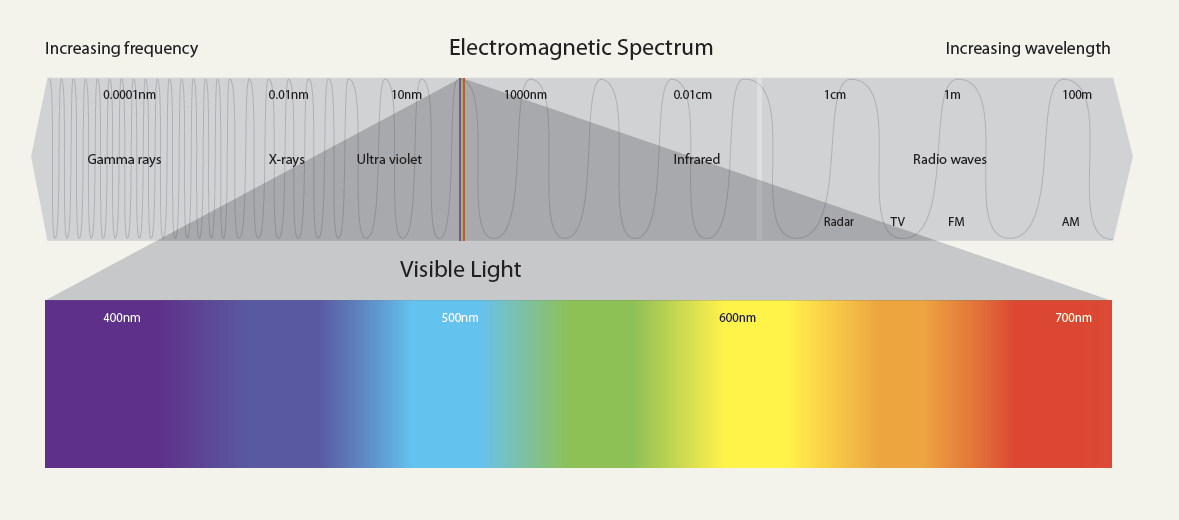
The colour perception quizzes along the gallery wall (seen below) reveal the extent to which colour is in the mind. Yet colours are also material substances that we experience and interact with in our daily lives.
Colour influences our emotions, activities and relations with others. People use colour to organise and make sense of the world around them. Colour has the power to enchant and transform people and things, as this section explores.
Isaac Newton's Prism Experiment
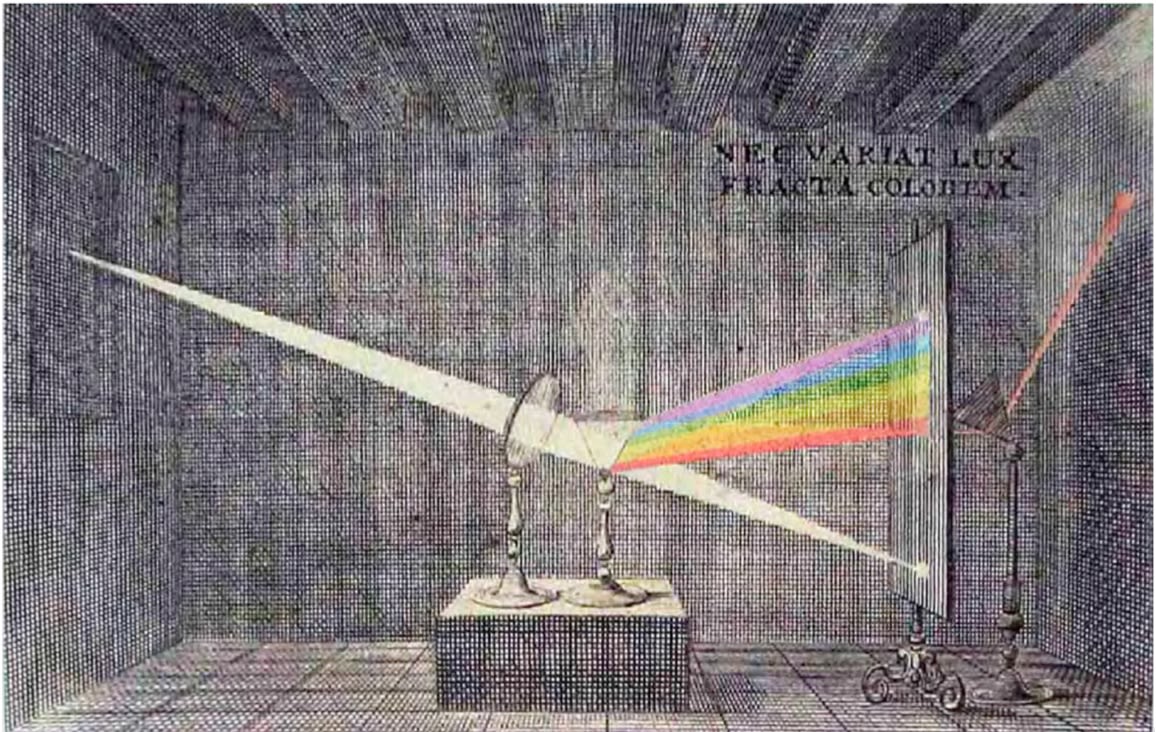
Engraving from Newton's drawing of his prism experiment. Published in a French edition of Newton's book Opticks. Traité d'optique (Paris: Montalent, 1722)
Engraving from Newton's drawing of his prism experiment. Published in a French edition of Newton's book Opticks. Traité d'optique (Paris: Montalent, 1722)
From 1664 Cambridge scholar Isaac Newton (1642-1726) conducted a series of famous experiments, where he directed a beam of sunlight to pass through a prism inside a darkened room. He drew on the idea that the eye is like a pinhole camera.
When the light passed through the prism it cast a rainbow on the opposite wall, which Newton called a 'spectrum'. The experiment revealed that white light was composed of different colour-making rays that bend at different angles.
Newton judged that the spectrum was composed of seven colours - violet, indigo, blue, green, yellow, orange, and red. He thought there was an analogy between the optical spectrum and the seven notes of the musical scale.
Newton's claims were not universally accepted at the time, and they were debated over the next 200 years by experimenters, instrument makers and artists.
Johann Wolfgang von Goethe
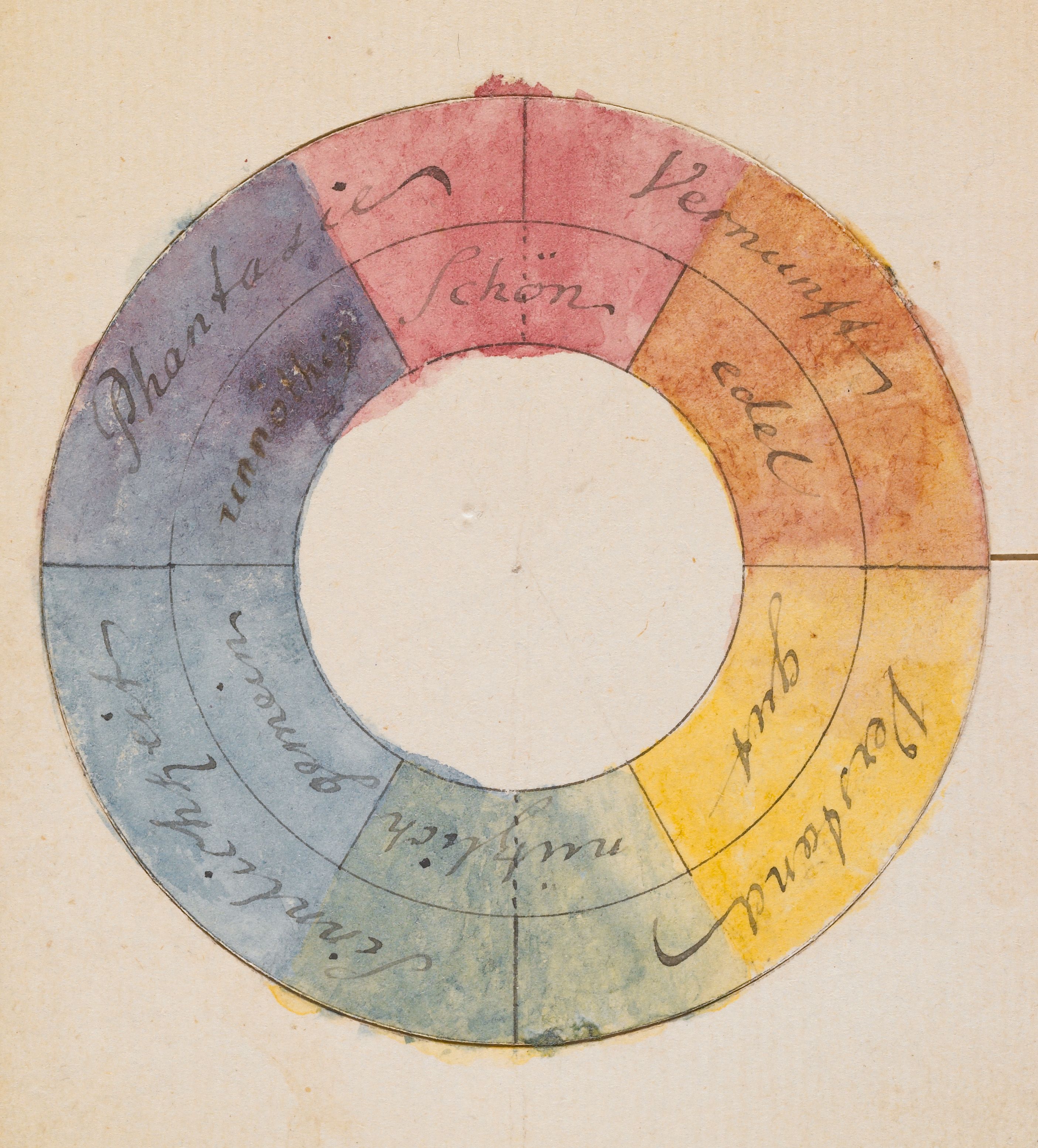
Goethe's watercolour of the colour wheel depicting the powers of the soul, 1809. Photograph by David Hall © Freies Deutsches Hochhstift / Frankfurter Goethe-Museum. Inv. Nr. III-14047
Goethe's watercolour of the colour wheel depicting the powers of the soul, 1809. Photograph by David Hall © Freies Deutsches Hochhstift / Frankfurter Goethe-Museum. Inv. Nr. III-14047
One of the best known and most vigorous critics of Newton's ideas about colour, was the poet, philosopher and statesman Goethe (1749-1832). He disagreed with Newton's idea that white light was composed of exactly seven colours, arguing that colours were the result of combinations of light and dark seen through different media. His experiments showed how colours can appear at the edges where black and white meet.
For Goethe, Newton's dark room was a kind of prison for the imagination. In contrast, Goethe studied the eye's changing responses and highlighted the association between colour and emotion.
Although Goethe's work was dismissed by many physicists, it was taken seriously by many artists and philosophers, such as Turner and Kandinsky, Schopenhauer and Wittgenstein.
Werner's Nomenclature of Colours, Patrick Syme
Filled with vivid colour samples and curious examples of objects from nature, Werner's Nomenclature of Colours is a rare but highly influential publication, published in two distinct editions in 1814 and 1821. The book was named for the geologist Abraham Werner and was based on his list of common mineral colours, published in 1774. Four decades later the Edinburgh artist and naturalist Patrick Syme transformed Werner's list into a field guide to the hues of the natural world.
Its purpose was to provide a standard colour vocabulary, which could be communicated across distances and between disciplines. The classification of over 100 colours according to animal, vegetable and mineral is reminiscent of collector's cabinets; similarities between different types of things were believed to provide clues to the natural order.
The compact size of Werner's Nomenclature made it particularly useful to those studying and illustrating plants and animals in the wild. The naturalist John Richardson used the book to describe the flora and fauna encountered during Edward Parry's 1821 Arctic voyage. Charles Darwin regularly consulted his own copy as he crossed the globe aboard HMS Beagle between 1831 and 1836.
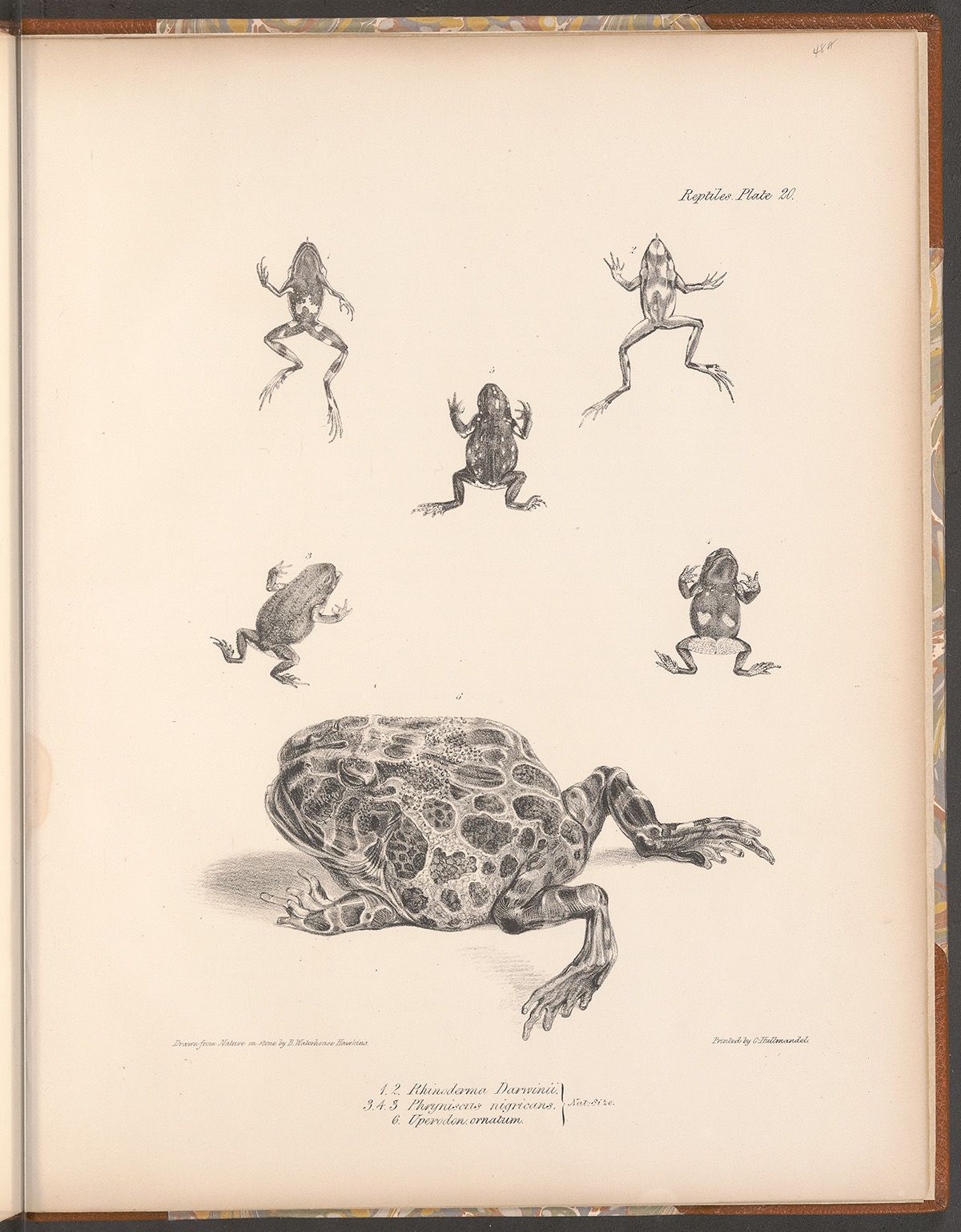
Encountering a large toad in the plains of Argentina, Charles Darwin wrote to his Cambridge colleague John Stevens Henslow that its colours were 'ink black, Vermillion red and buff orange'. The Zoology of the Voyage of HMS Beagle (1842), Part 4, Plate 20. Biodiversity Heritage Library
Encountering a large toad in the plains of Argentina, Charles Darwin wrote to his Cambridge colleague John Stevens Henslow that its colours were 'ink black, Vermillion red and buff orange'. The Zoology of the Voyage of HMS Beagle (1842), Part 4, Plate 20. Biodiversity Heritage Library
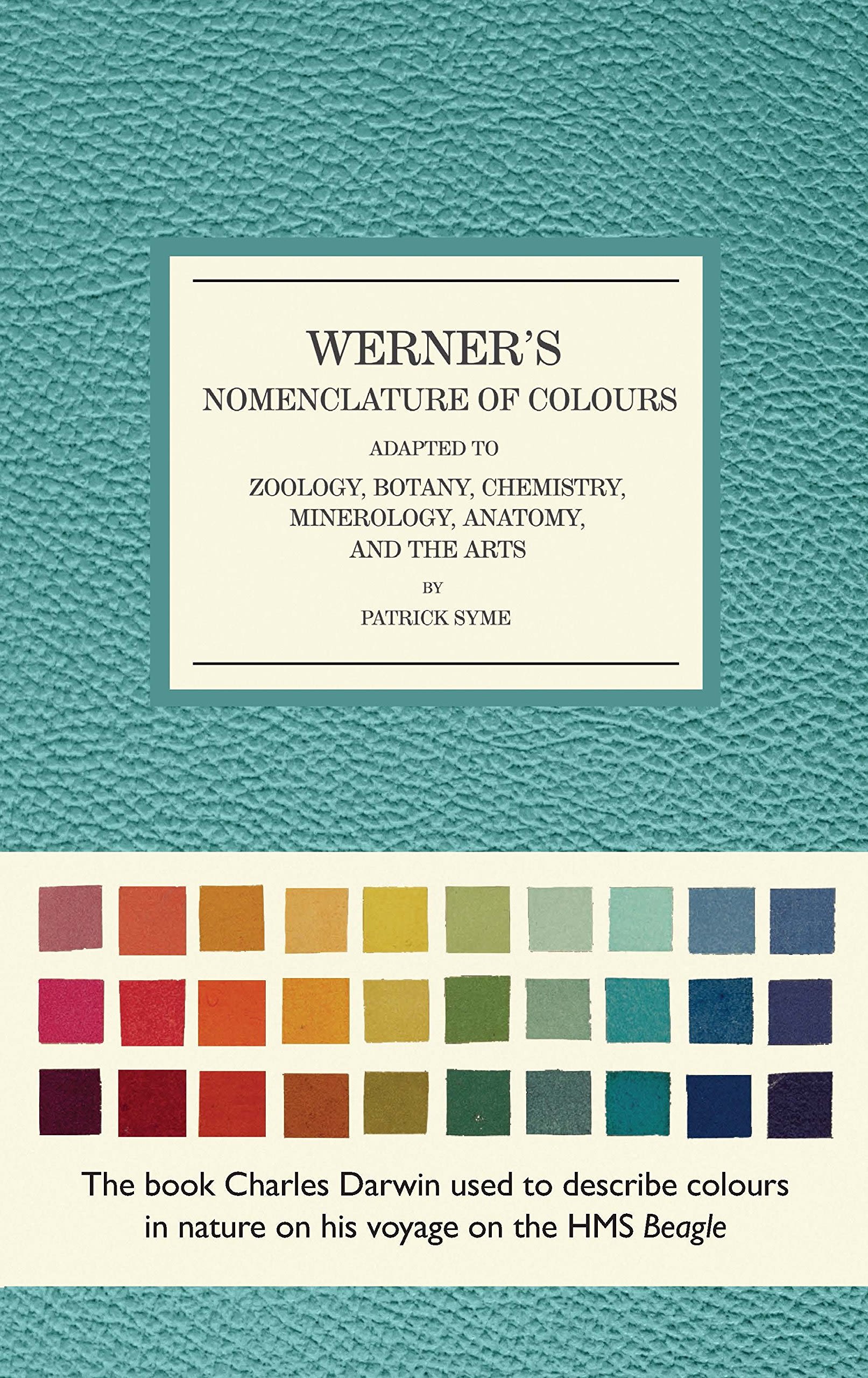
Book cover. Modern facsimile based on the original on display.
Book cover. Modern facsimile based on the original on display.
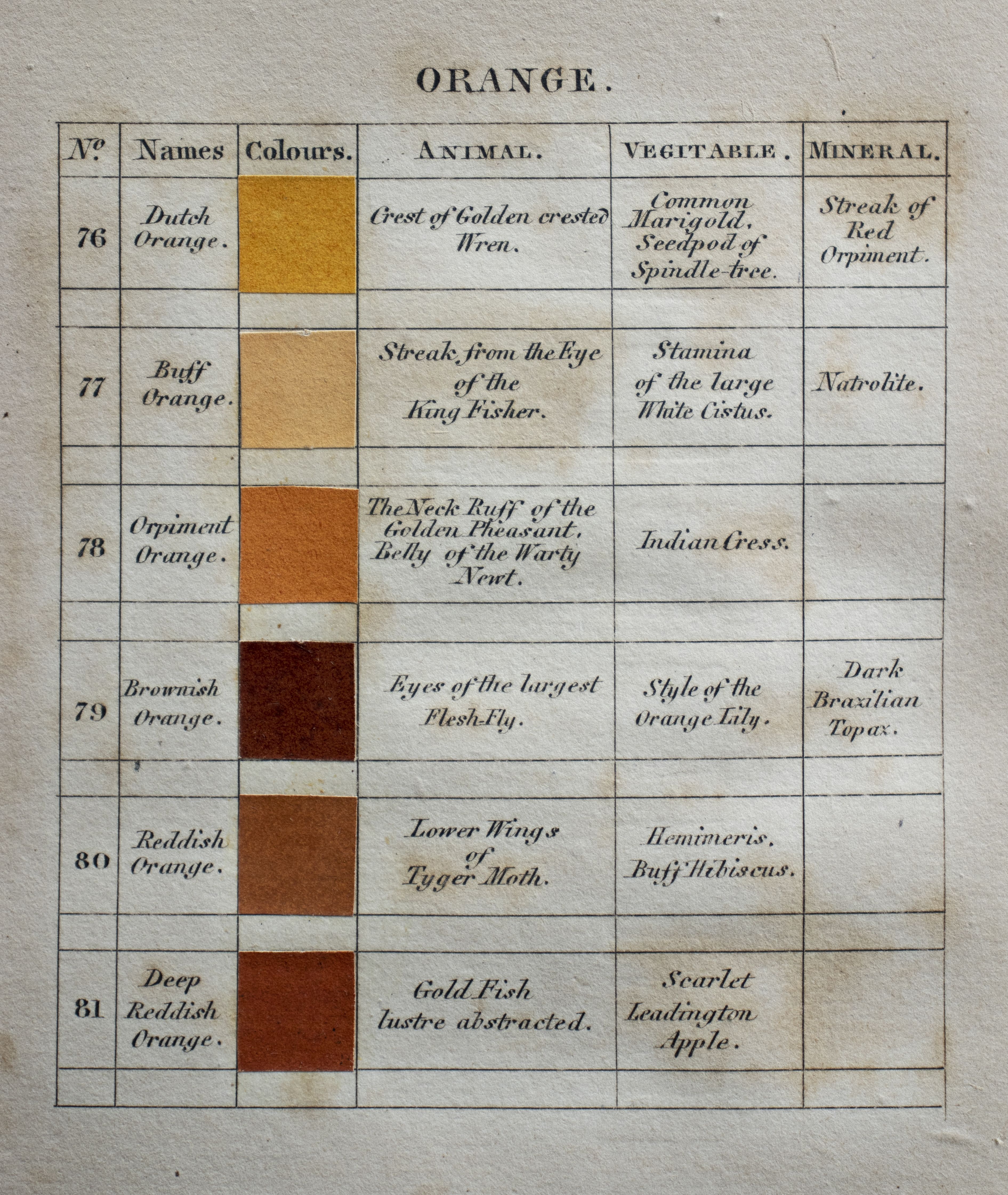
Detail of Werner's classification of orange. Individual squares, cut from painted sheets of paper, were pasted onto the page to ensure colour consistency between books. Balfour & Newton Libraries, Department of Zoology
Detail of Werner's classification of orange. Individual squares, cut from painted sheets of paper, were pasted onto the page to ensure colour consistency between books. Balfour & Newton Libraries, Department of Zoology
Colour Blindness
Can you see the numbers inside the circles pictured here, on the right? Approximately 1 in 12 men and 1 in 200 women have some form of colour blindness.
Colour & Measurement
In the nineteenth century scientists developed numerous devices to measure colour. Maxwell’s colour wheel demonstrated that if the elements of all the primary colours are included in equal proportions, when spun quickly the viewer would see white. A solar spectroscope attached to a telescope provided insights into the chemical composition of the sun and other stars. Lovibond’s tintometer, devised to measure and compare the colour of substances, was originally used to estimate the quality of different beers. Homgren’s wools of various hues were used to determine different types of colour blindness. Instruments used to measure colour were also used to test people’s colour discrimination.
Whipple Museum 4421, 1063, 4521, 6746.
Art & Science
Throughout the nineteenth century scientists explored how humans perceived colour. When mixing and separating colours, a clear distinction was made between 'additive colours' or colours in light and 'subtractive colours' or colours in pigment. The combination of the colours of the spectrum in light rays produces white, whereas mixing different paint colours ultimately results in a muddy brown.
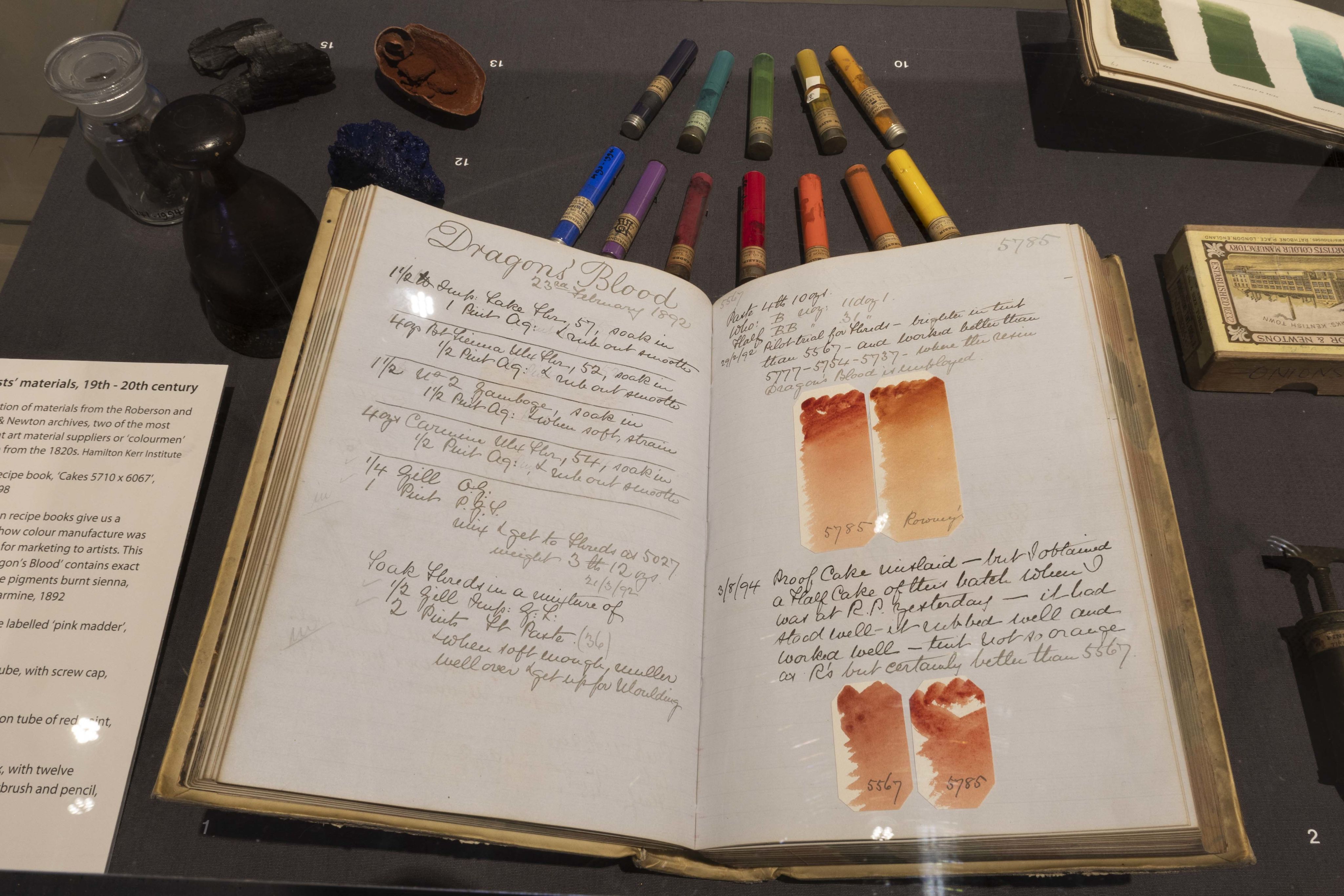
Artists' materials, 19th - 20th century. A selection of materials from the Roberson and Winsor & Newton archives, two of the most important art material suppliers or 'colour men' in London from the 1820s. Hamilton Kerr Institute
Artists' materials, 19th - 20th century. A selection of materials from the Roberson and Winsor & Newton archives, two of the most important art material suppliers or 'colour men' in London from the 1820s. Hamilton Kerr Institute
Edward Wilson
"We talk about people who have perfect pitch, he seemed to have perfect colour recall."
David Wilson, great-nephew of Edward Wilson, 2012
Edward Wilson (1872 - 1912) was a medical doctor, zoologist and polar explorer. He also had an amazing gift for painting colours from memory. He was a member of Captain Scott's two expeditions to Antarctica (1901 - 1904 and 1910 - 1913).
Wilson was extraordinarily curious. He painted everything from the plumage of birds to atmospheric conditions. It was too cold for him to paint outside as the watercolours would freeze. Instead, he made preparatory pencil sketches annotating them with notes about colour. Then, back in the warmth of the expedition base, he created his paintings.
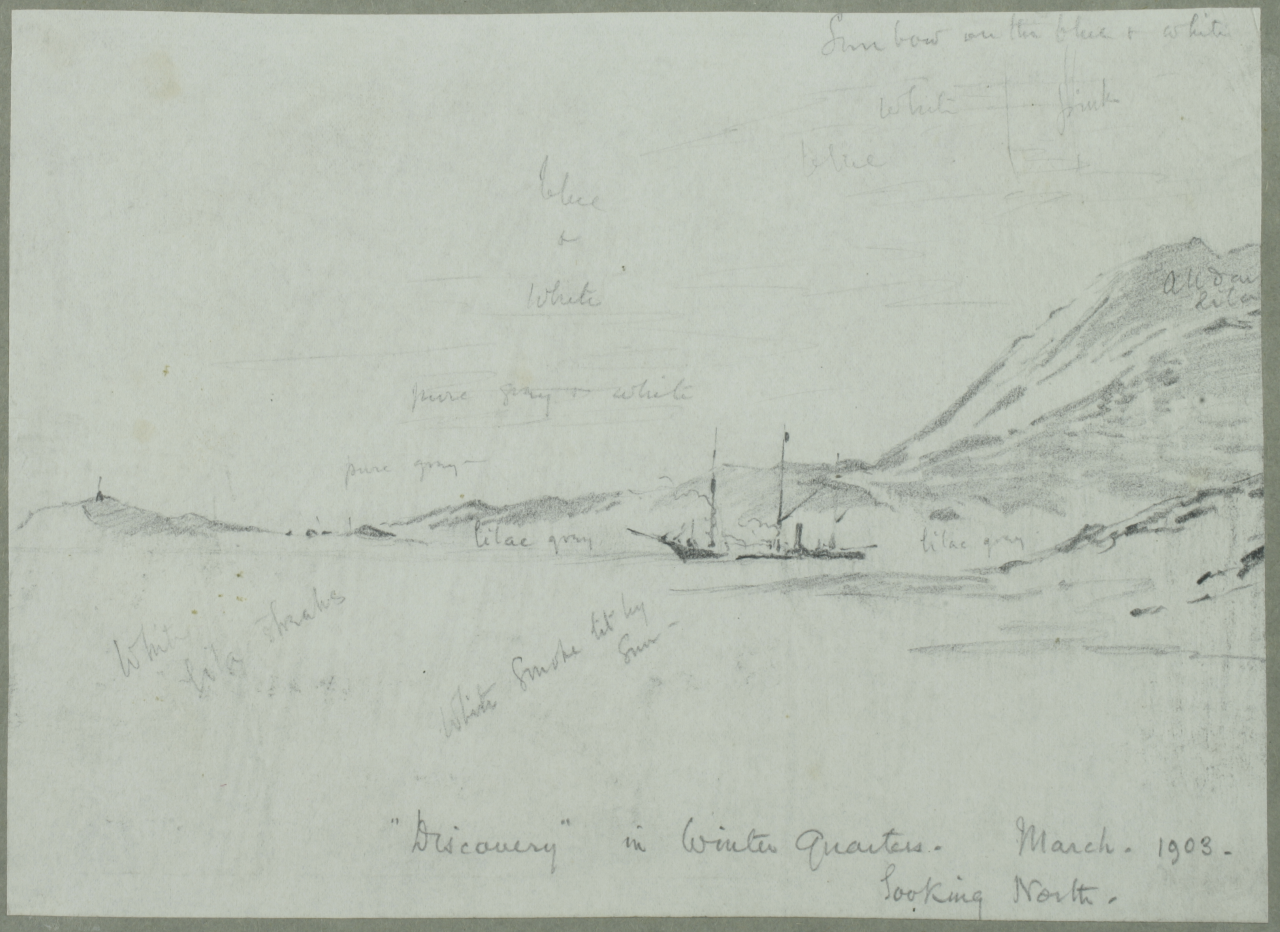
Graphite sketch with notes about colour. Scott Polar Research Institute N: 1803/80
Graphite sketch with notes about colour. Scott Polar Research Institute N: 1803/80
These watercolours show the expedition ship, the Discovery, frozen in pack ice. Wilson made the paintings from the same spot, around a month apart. He recorded the view at noon, the lightest time of the day. Outside he only used pencil. The paintings were made indoors under the light of an acetylene gas lamp.
Watercolours, 1903
Edward Wilson (1872 - 1912)
Antarctica
Scott Polar Research Institute, N: 1240, N: 1242, N: 1243, N: 1245
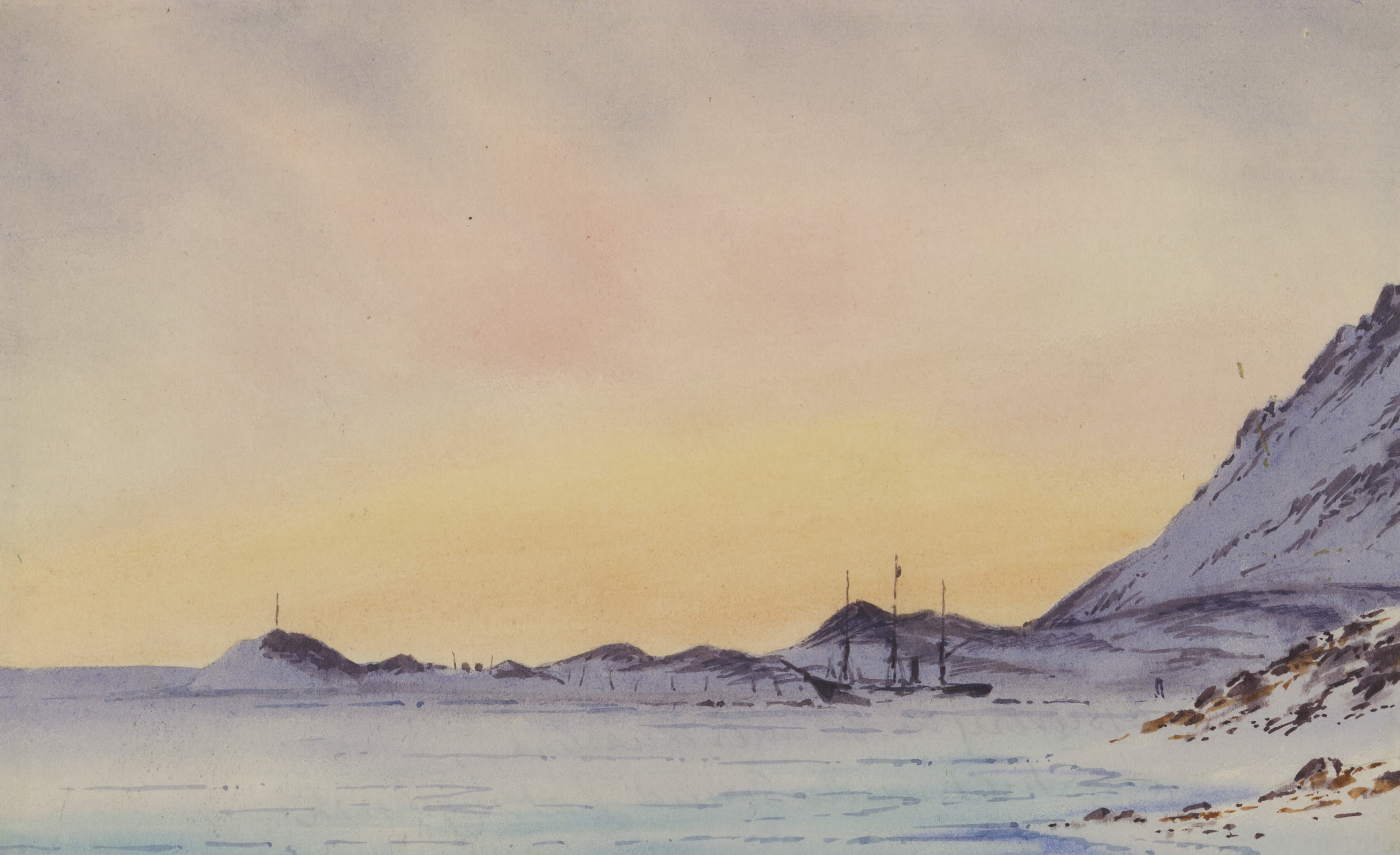
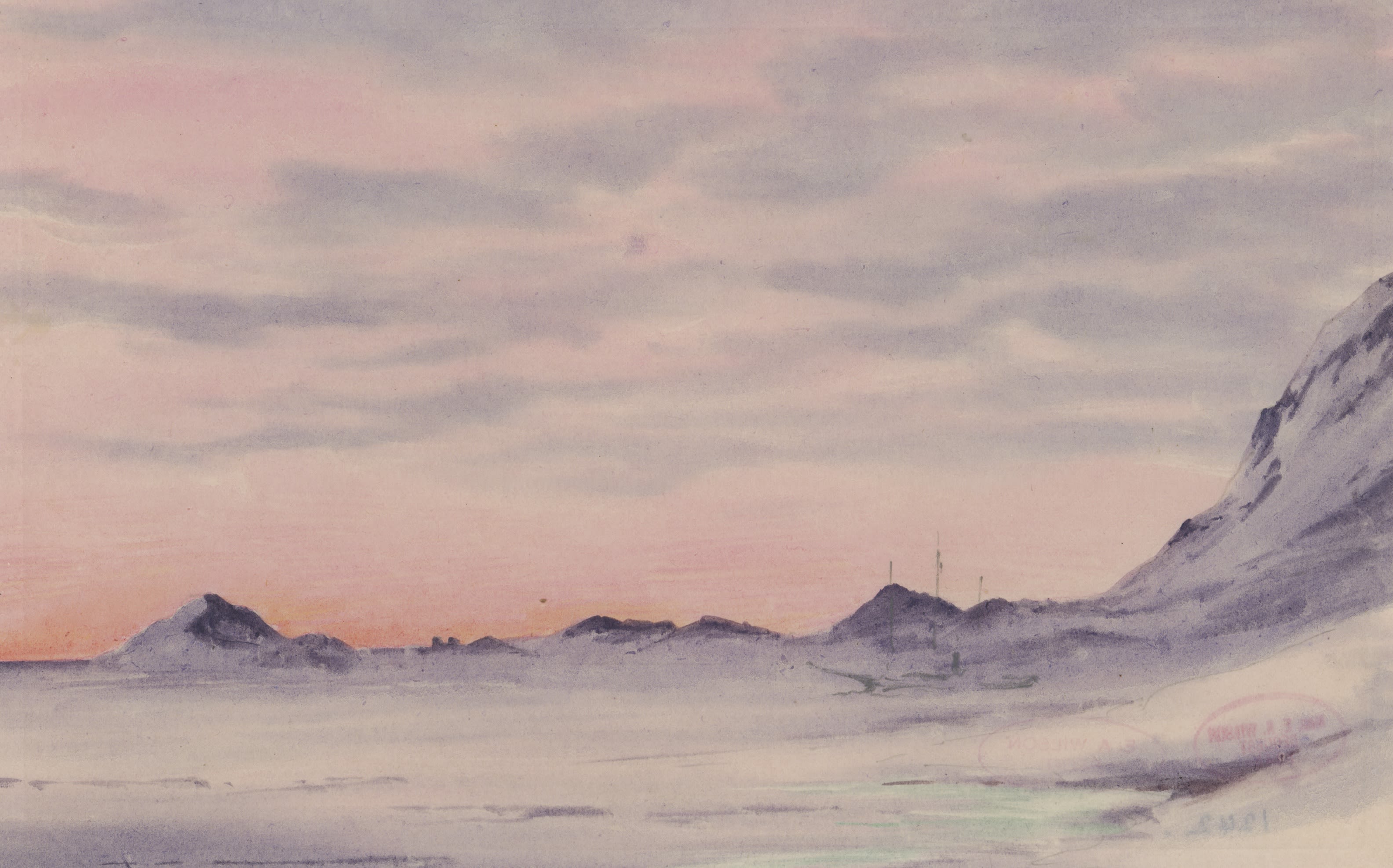
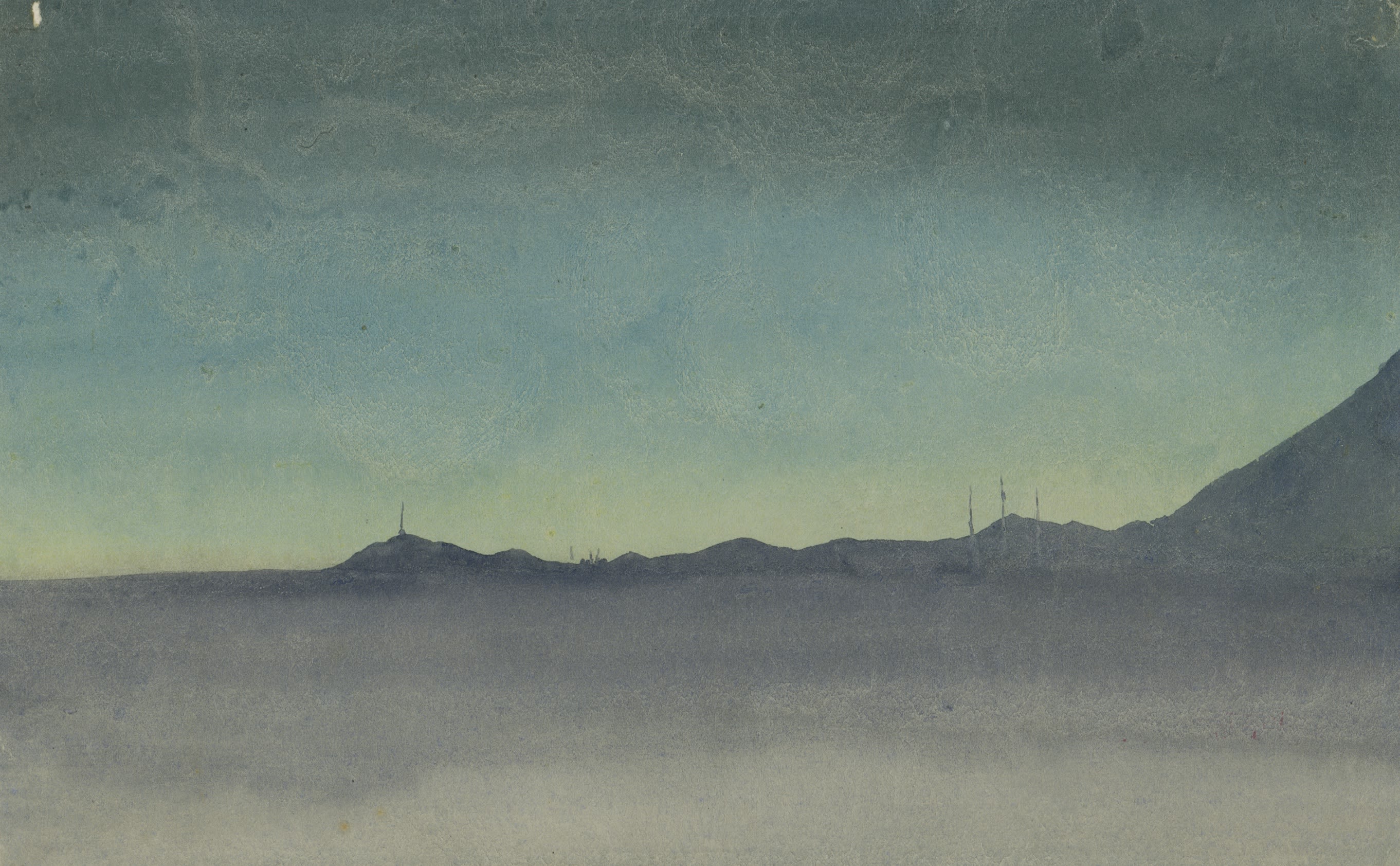
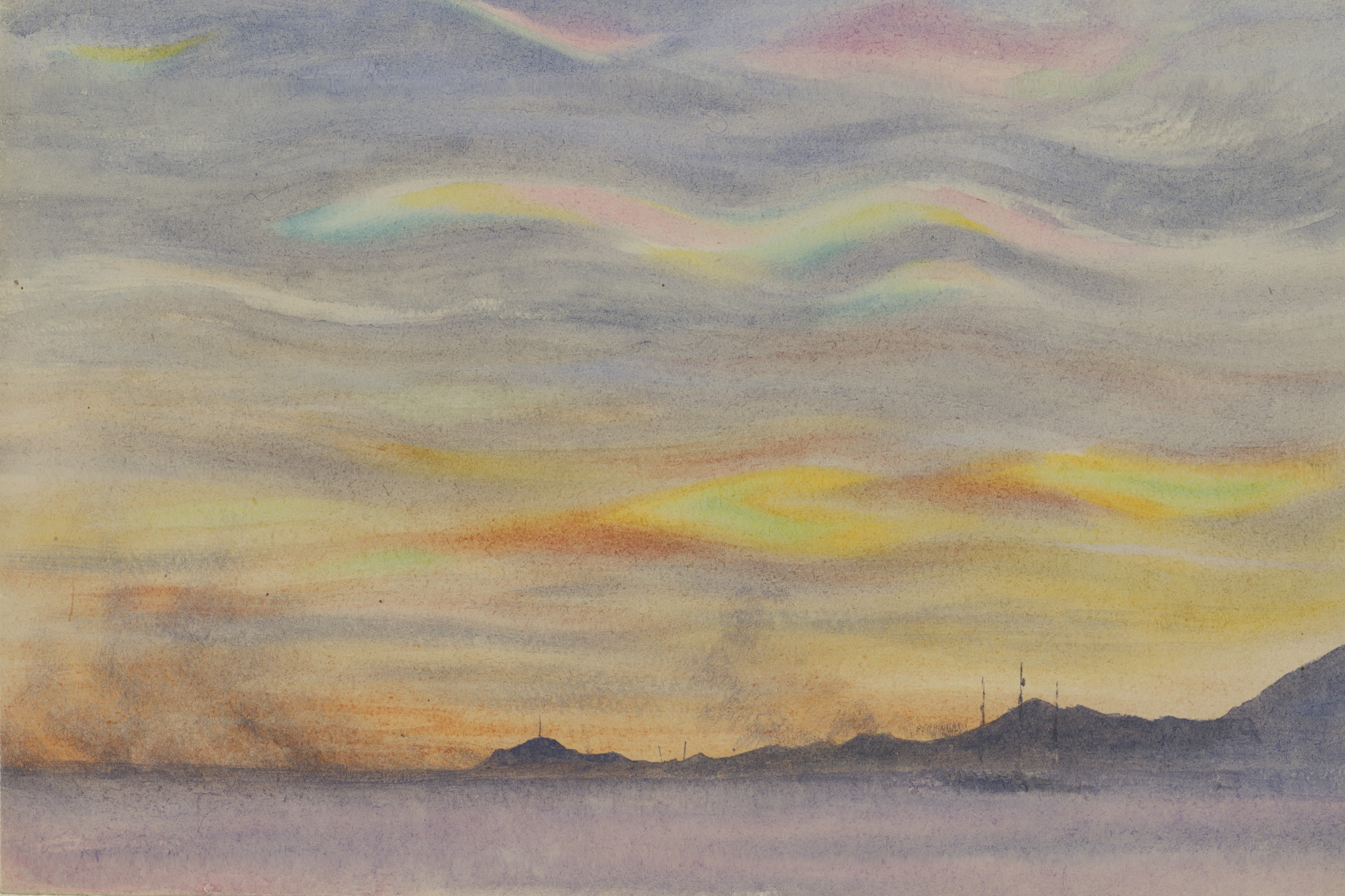
Study for A Sunday on the Island of la Grande Jatte, circa 1884 - 1885
Georges-Pierre Seurat (1859 - 1891)
France, Oil on canvas with conté crayon
European artists such as Georges-Pierre Seurat were strongly influenced by contemporary scientific views on colour perception. This study depicting bourgeois Parisians at leisure is composed of distinct colours placed side-by-side which were intended to mix in the eye of the viewer. This technique, which Seurat initially called Divisionism, became known as Pointillism.
This study uses small touches instead of tight dot-like dabs of paint as in the final painting. When the finished painting was publicly exhibited at the last Impressionist exhibition in Paris in 1886, it earned Seurat instant notoriety. It is now considered a founding work of the Neo-Impressionist movement.
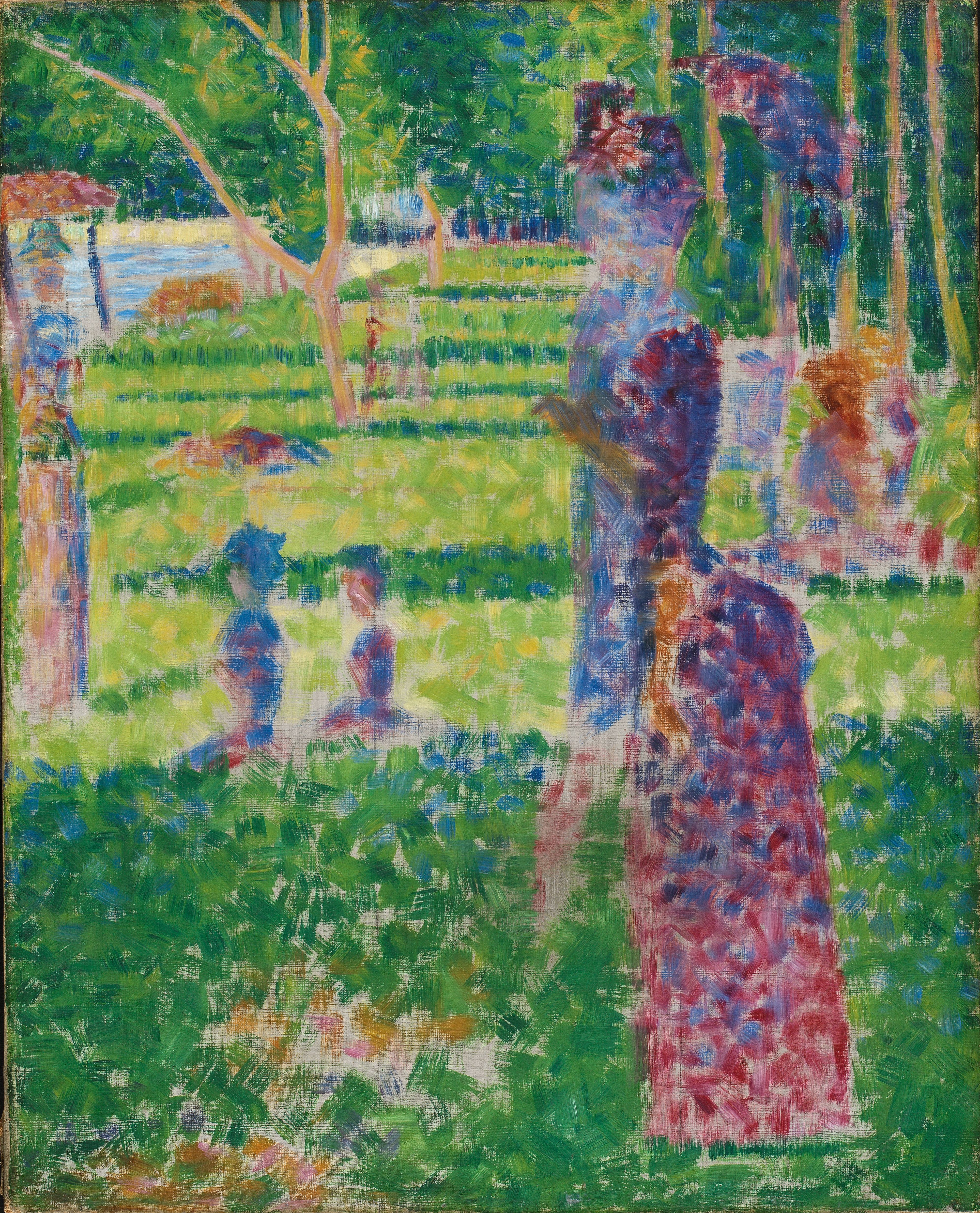
The Provost and Fellows of King's College, Keynes Collection PCF24
The Provost and Fellows of King's College, Keynes Collection PCF24
Colour & Desire
Over millennia people have put enormous effort into producing and obtaining particular colours. The processes involved are often highly skilled, smelly and sometimes dangerous. Colour travelled great distances along the trade routes of empire and commerce, and the allure of specific colours has resulted in intense labour, fierce competition and soaring prices, at times leading to piracy and warfare.
Every colour has its own history. This section focuses on two particularly potent examples – the rich ultramarine blue extracted from lapis lazuli and the brilliant cochineal red derived from the bodies of scale insects.
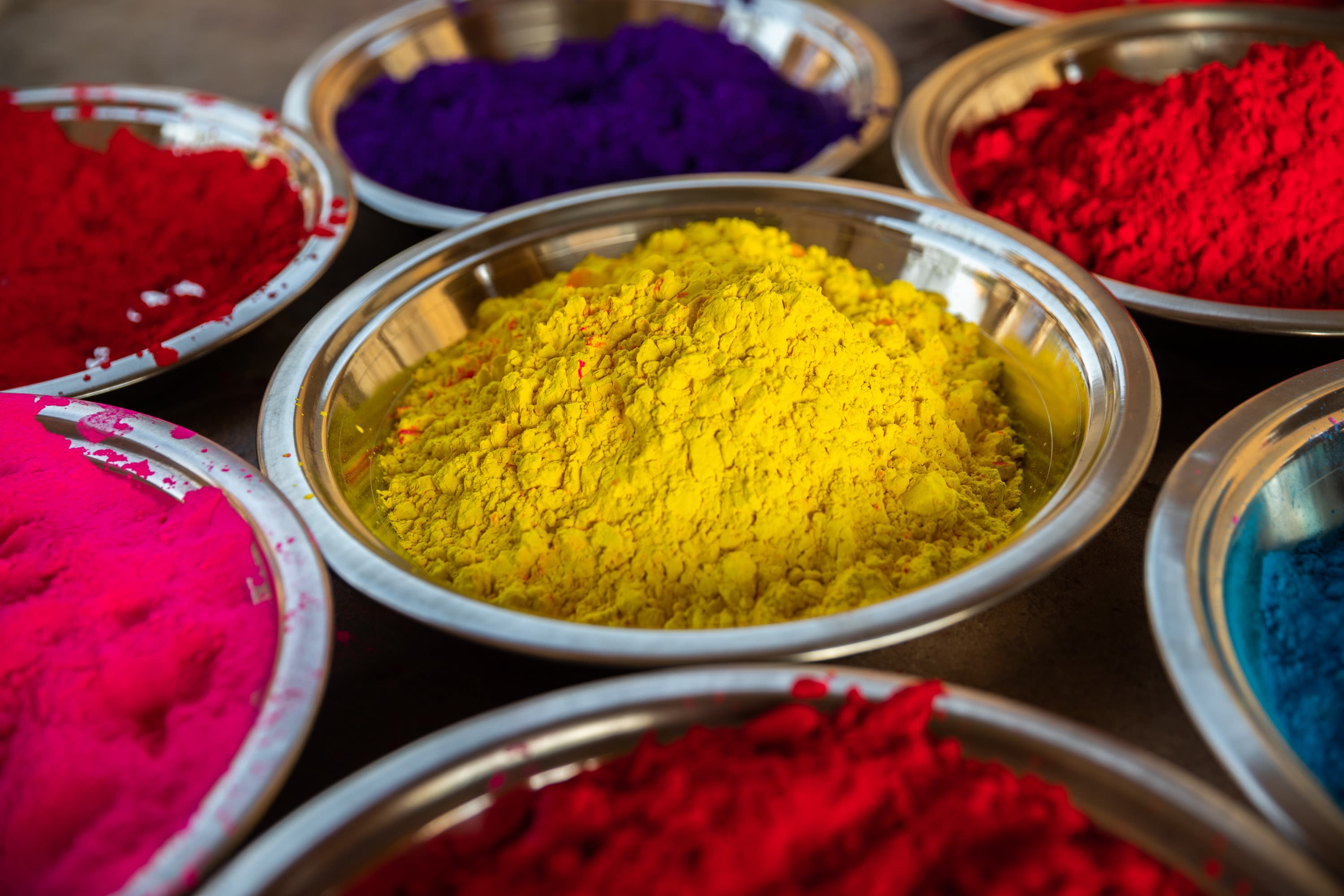
Lapis Lazuli
The richest solid blue found on earth has been highly prized since antiquity. Laboriously extracted from mines in north-eastern Afghanistan, stone nuggets travelled along distant trade routes into China, the Middle East and Egypt.
Arriving in Europe via Venice, the pigment extracted from lapis lazuli was known as ultramarine from the Latin for ‘over the sea’. It became the most highly valued pigment in Europe, comparable to gold and up to 100 times the price of common pigments. Used in illuminated manuscripts from the 9th century, ultramarine became the favoured colour for Christian paintings’ most significant features, such as the Virgin’s robes. The exact amount used in a painting was often specified in artists’ contracts.
The Renaissance painter Cennino Cennini’s recipe for purifying ultramarine from lapis was based on the medieval cosmology of four elements. According to this holistic view, the world was made of nested spheres, from solid earth through water and air to all-consuming fire. Each substance was a compound of these elements. The blue in lapis (lazurite) had white streaks like clouds (calcite) and golden stars (pyrite). Cennini’s recipe for purification involved grinding the rock and making a paste ball with sympathetic substances which, when placed in an alkaline solution of lye, would encourage the ultramarine to be released.
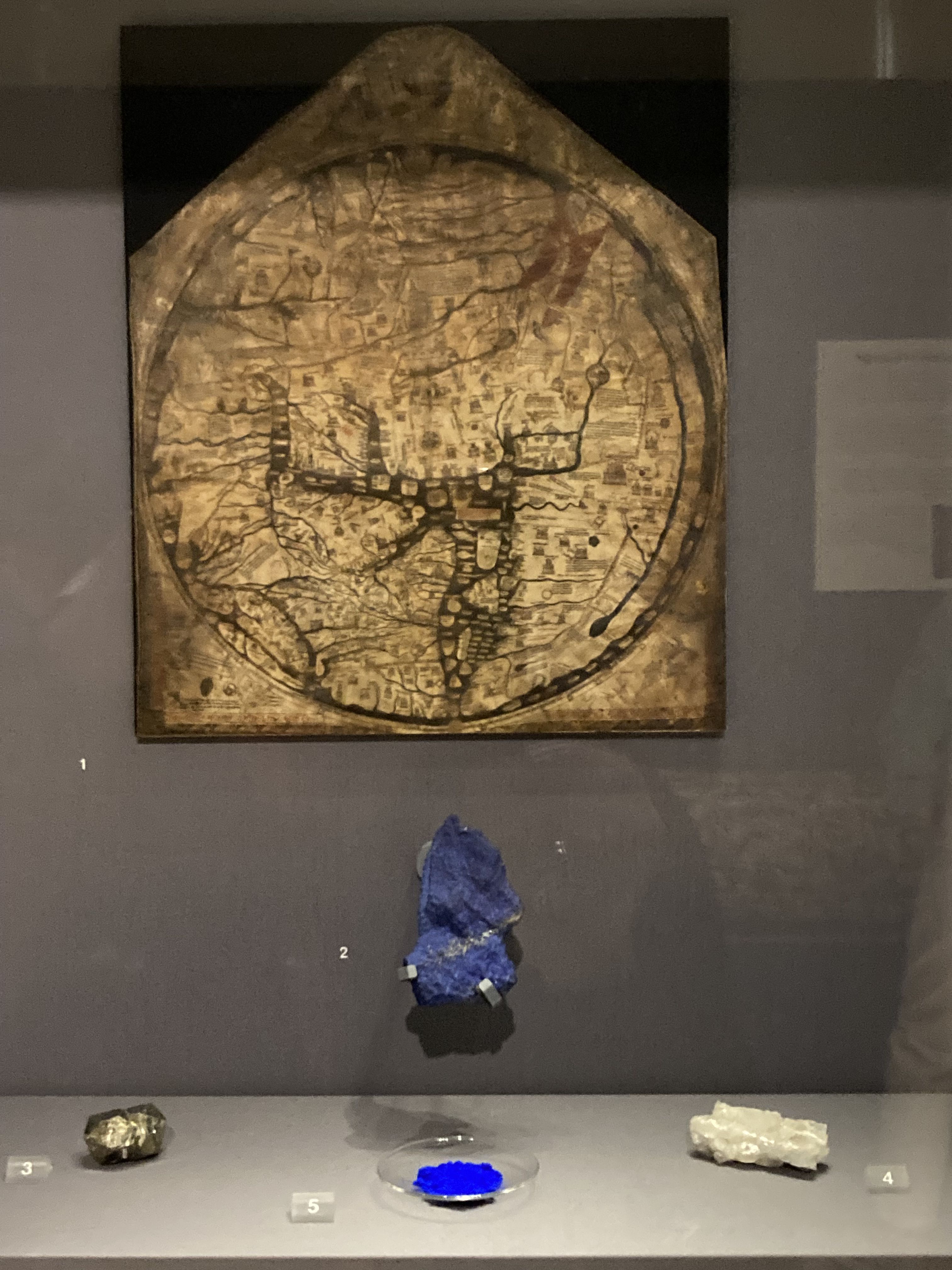
Ultramarine is purified from lapis lazuli (top centre) by extracting pyrite (left) and calcite (right). Behind is a reproduction of the Mappa Mundi in Hereford Cathedral (circa 1300) with east at the top. Afghanistan, the source of lapis, is in the direction of paradise. Loans from Spike Bucklow and the Sedgwick Museum.
Ultramarine is purified from lapis lazuli (top centre) by extracting pyrite (left) and calcite (right). Behind is a reproduction of the Mappa Mundi in Hereford Cathedral (circa 1300) with east at the top. Afghanistan, the source of lapis, is in the direction of paradise. Loans from Spike Bucklow and the Sedgwick Museum.
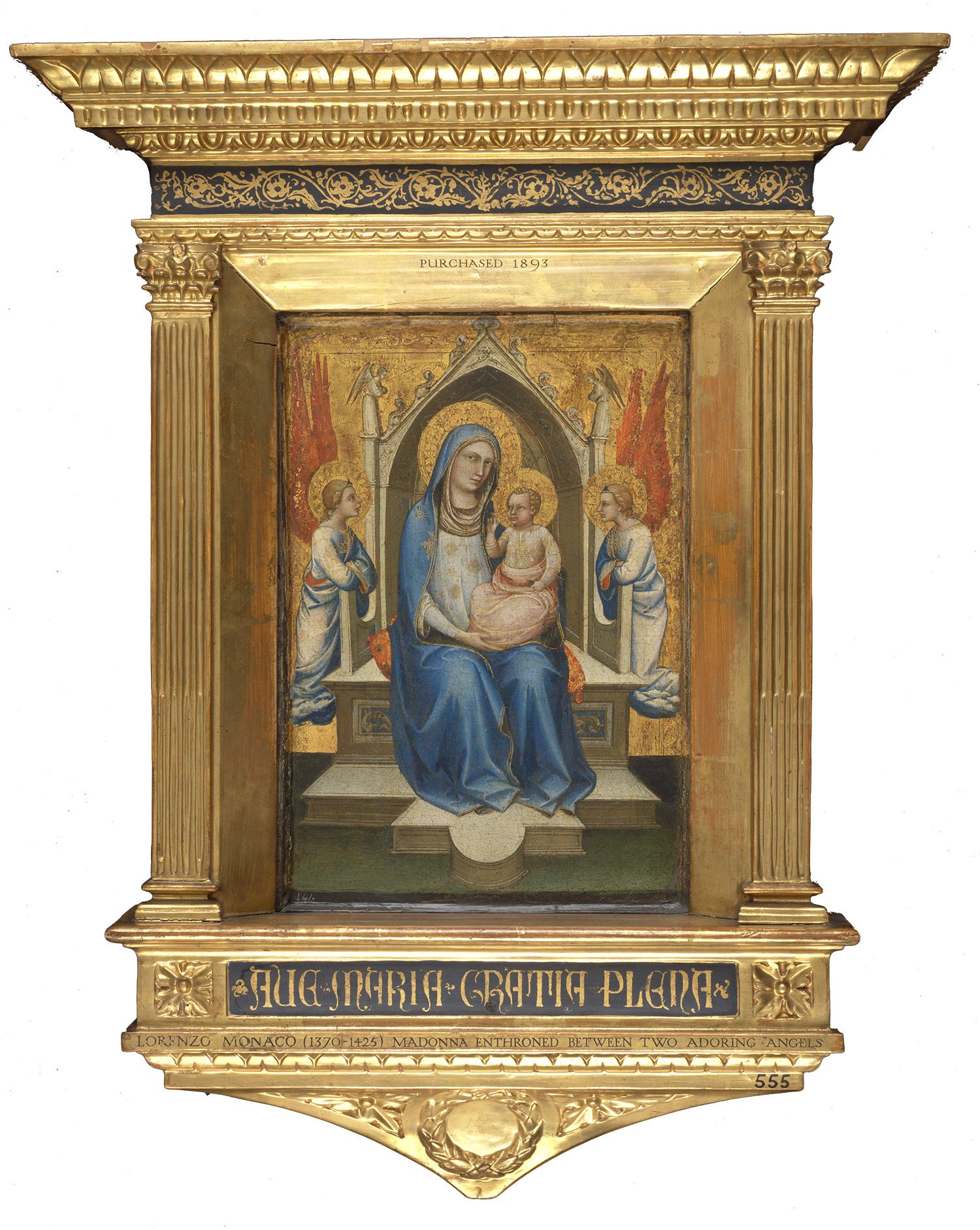
The sumptuous painting combines the two most valuable substances - ultramarine and gold. Virgin and Child Enthroned with Two Attendants, 1400-1403. Lorenzo Monaco (1370 - 1425), Italy, Tempera on panel. Purchased by Charles Butler in Florence in 1883. Fitzwilliam Museum 555
The sumptuous painting combines the two most valuable substances - ultramarine and gold. Virgin and Child Enthroned with Two Attendants, 1400-1403. Lorenzo Monaco (1370 - 1425), Italy, Tempera on panel. Purchased by Charles Butler in Florence in 1883. Fitzwilliam Museum 555
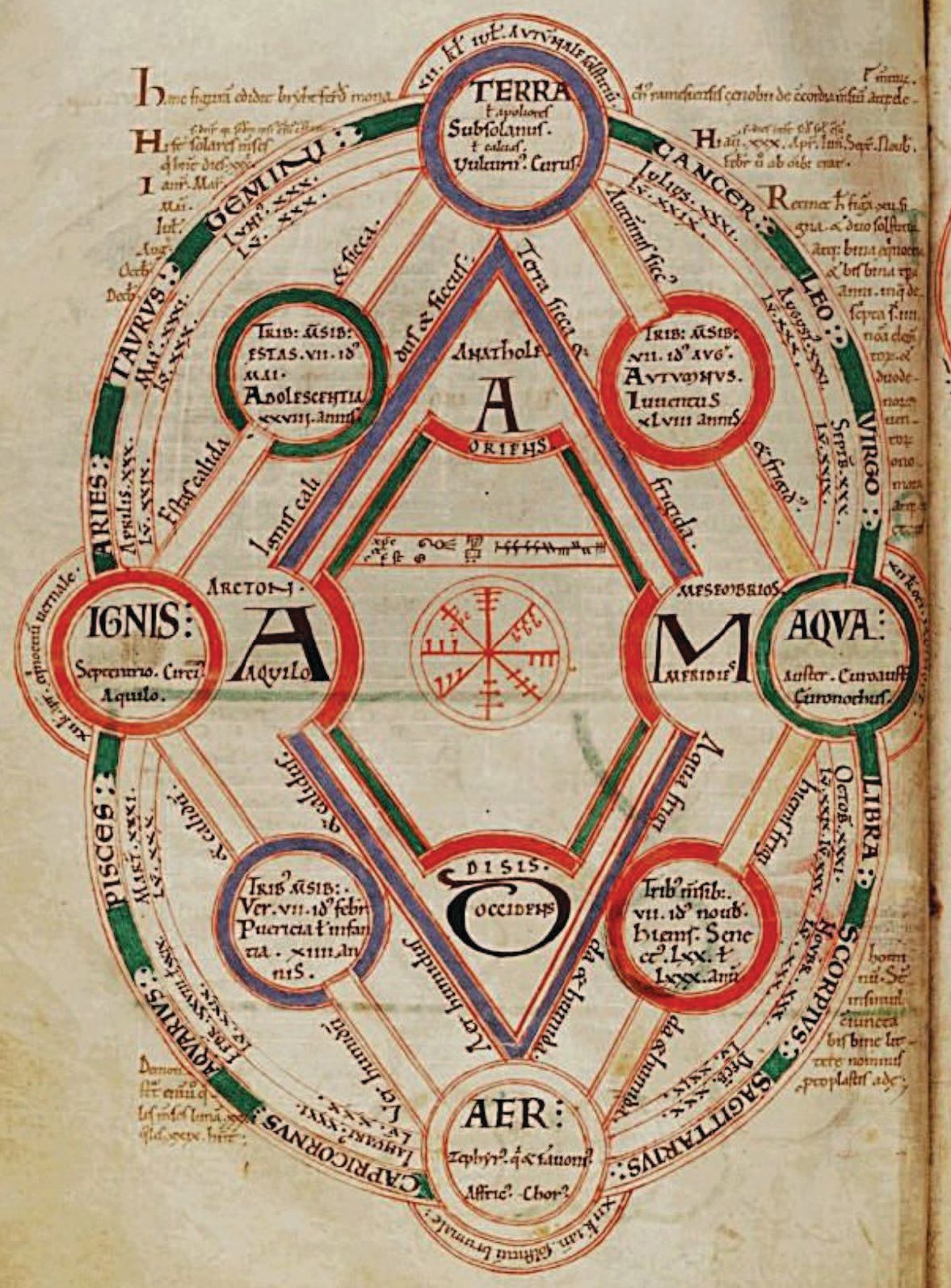
A holistic world view: Byrhferth's diagram showing the four elements - Terra (earth), Aqua (water), Are (air) and Ignis (fire), along with the seasons, solstices, equinoxes, signs of the zodiac and ages of man. Detail from an English medieval manuscript from Ramsey, Cambridgeshire, 17, folium 7 verso, circa 1000 AD. St John's College Oxford
A holistic world view: Byrhferth's diagram showing the four elements - Terra (earth), Aqua (water), Are (air) and Ignis (fire), along with the seasons, solstices, equinoxes, signs of the zodiac and ages of man. Detail from an English medieval manuscript from Ramsey, Cambridgeshire, 17, folium 7 verso, circa 1000 AD. St John's College Oxford
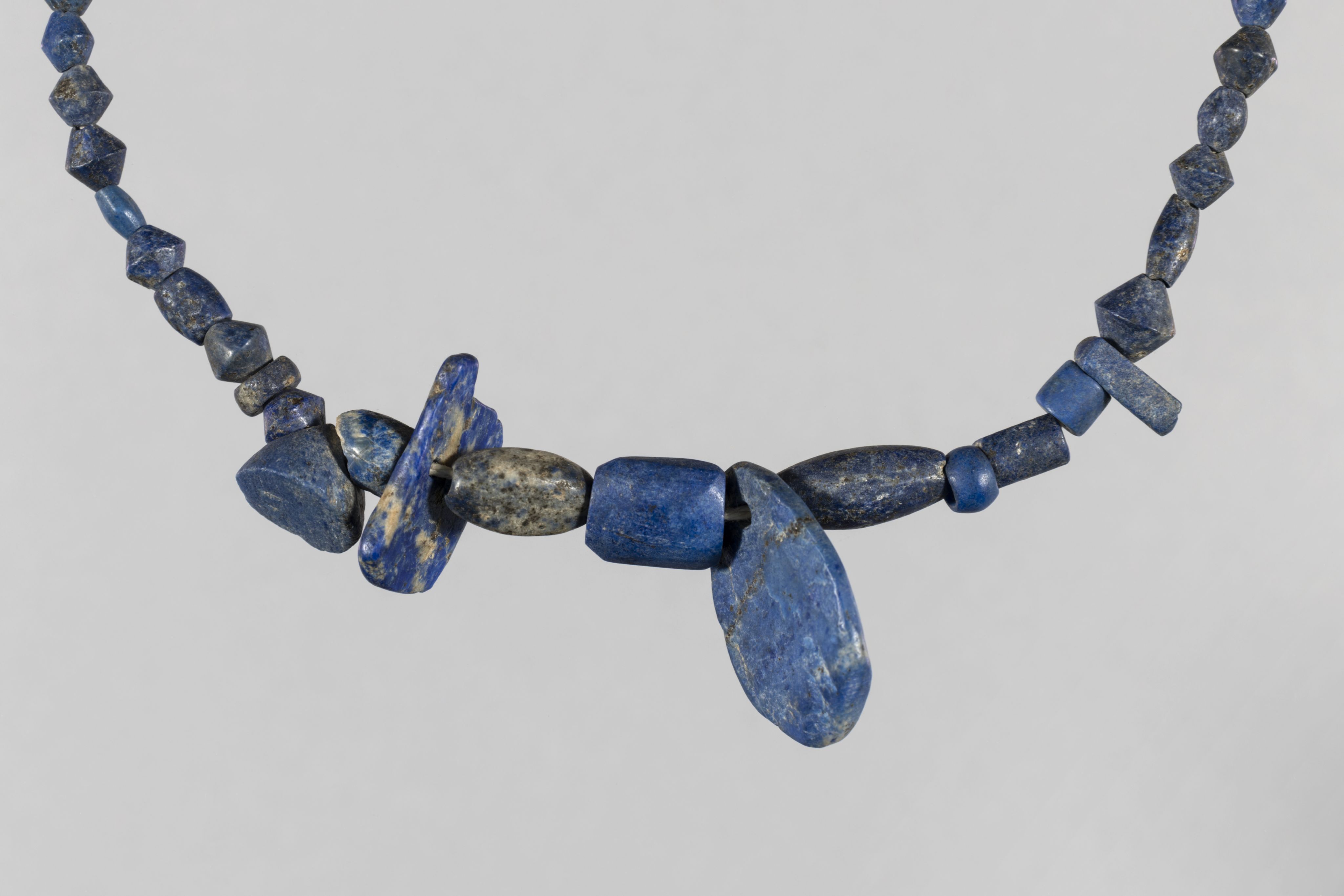
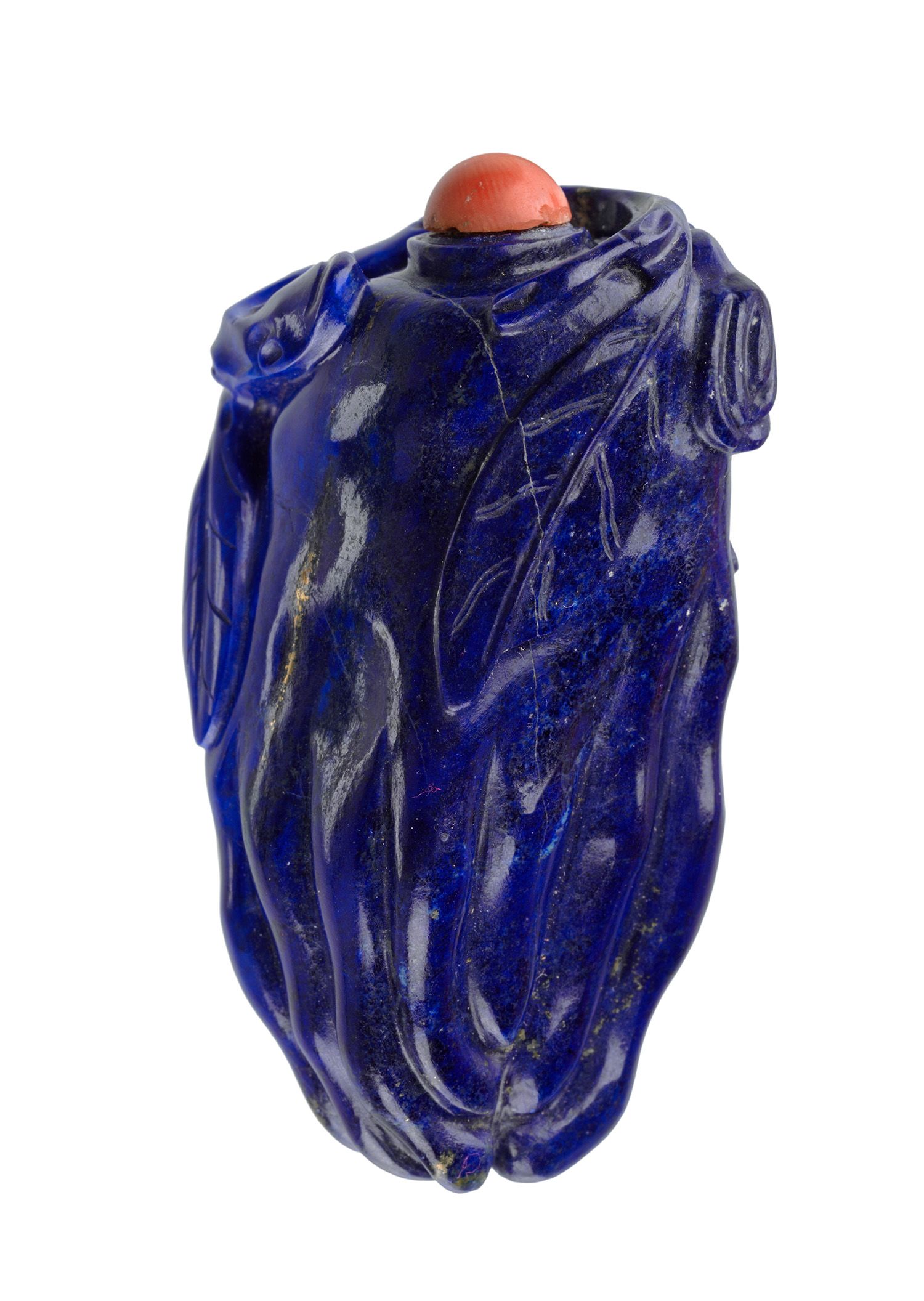
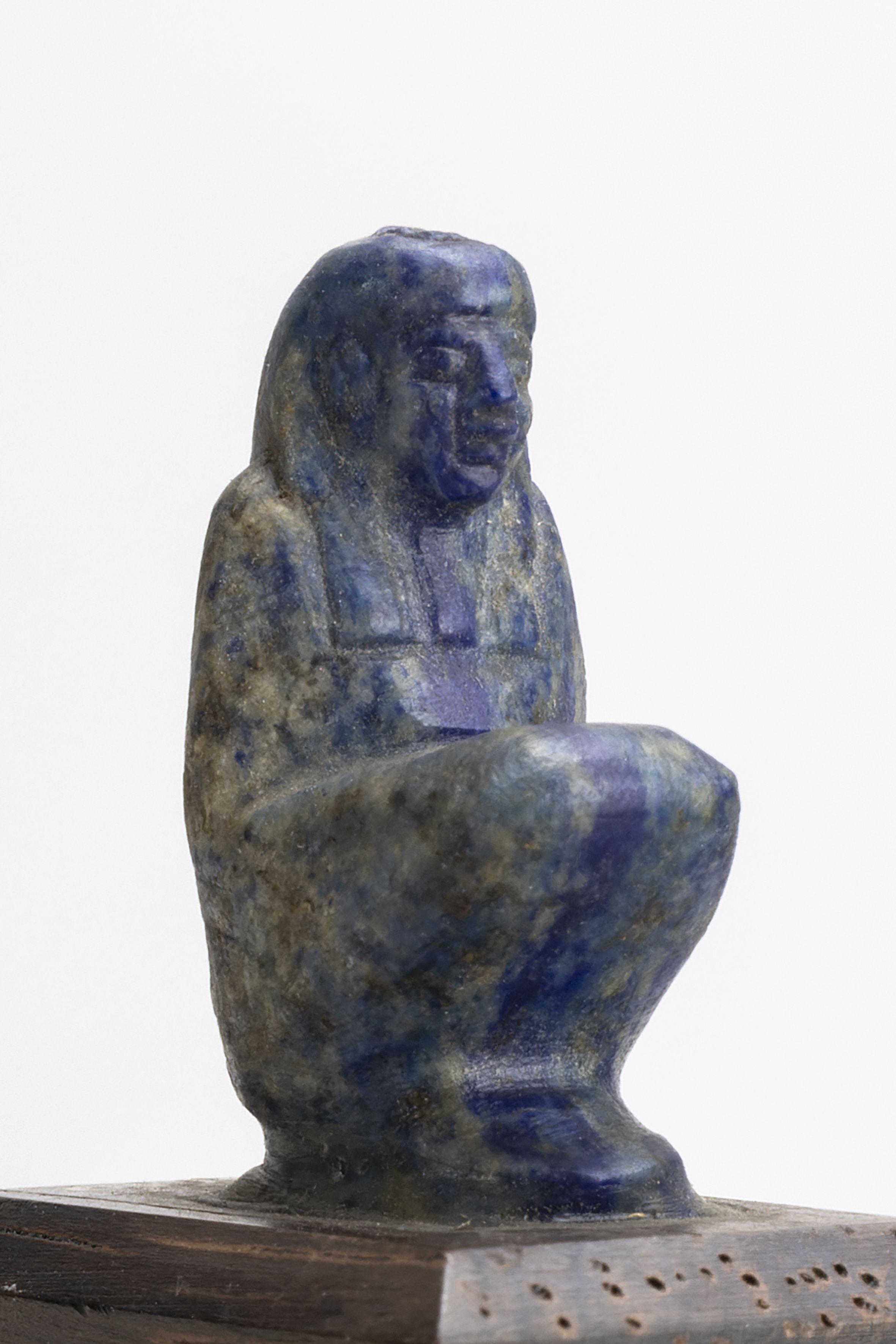

Necklace, Mesopotamia, Ur, circa 3000 BCE. Composed of irregularly shaped beads made from lapis lazuli, re-strung on a modern cord. Horace Beck Collection. MAA 1947.2079
Necklace, Mesopotamia, Ur, circa 3000 BCE. Composed of irregularly shaped beads made from lapis lazuli, re-strung on a modern cord. Horace Beck Collection. MAA 1947.2079

Snuff bottle, China, 19th century. Carved from a solid piece of lapis in the shape of a buddha's hand fruit, with leaves in relief. Polished red coral stopper attached to a small bone spoon. C.B. Marlay bequest. Fitzwilliam Museum MAR.0.281
Snuff bottle, China, 19th century. Carved from a solid piece of lapis in the shape of a buddha's hand fruit, with leaves in relief. Polished red coral stopper attached to a small bone spoon. C.B. Marlay bequest. Fitzwilliam Museum MAR.0.281

Small amulets made of lapis lazuli were associated with various Egyptian deities, and used to provide protection against harm. This is an Amulet of the goddess Maat. Egypt, 1550 BCE - 641 CE. Photographed by Jos Dudding. MAA 1948.2730
Small amulets made of lapis lazuli were associated with various Egyptian deities, and used to provide protection against harm. This is an Amulet of the goddess Maat. Egypt, 1550 BCE - 641 CE. Photographed by Jos Dudding. MAA 1948.2730
Reckitt's Blue
In 1828 French chemist Jean-Baptiste Guimet discovered a means of preparing synthetic lazurite by heating together china clay, soda, charcoal, quartz and sulphur. The new pigment became known as French ultramarine. It was a fraction of the cost of the original. By the 1870s French ultramarine was the standard, despite artists complaining that it lacked the depth of blue derived from lapis lazuli.
Synthetic ultramarine was later used as an ingredient in laundry soap, to enhance the optical properties of white. A tiny amount of blue offsets the yellowing that occurs from repeated washing and makes white fabric look brighter. Laundry blue, marketed as Reckitt's Blue in England, was taken to the colonies where European notions of 'cleanliness' and domestic service were imposed on local populations.
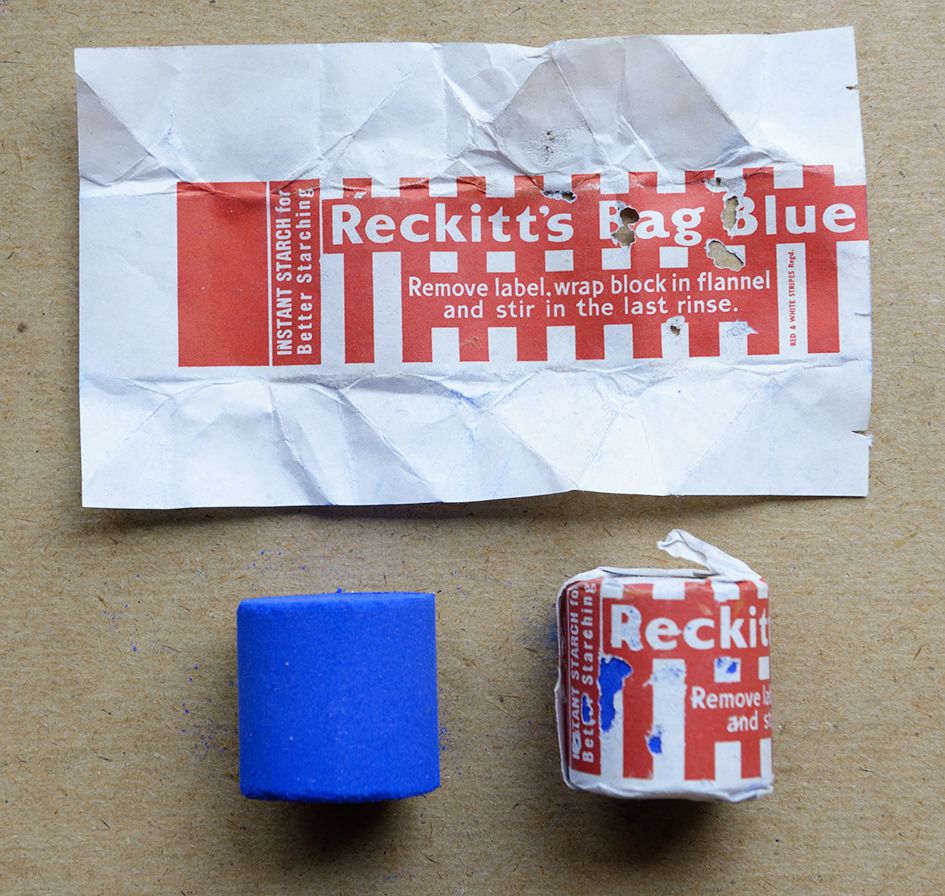
The soap powder was subverted and transformed. The highly desired ultramarine colour produced by Reckitt's Blue was used by Indigenous artists across Africa, the Americas and the Pacific to decorate a wide variety of special items.
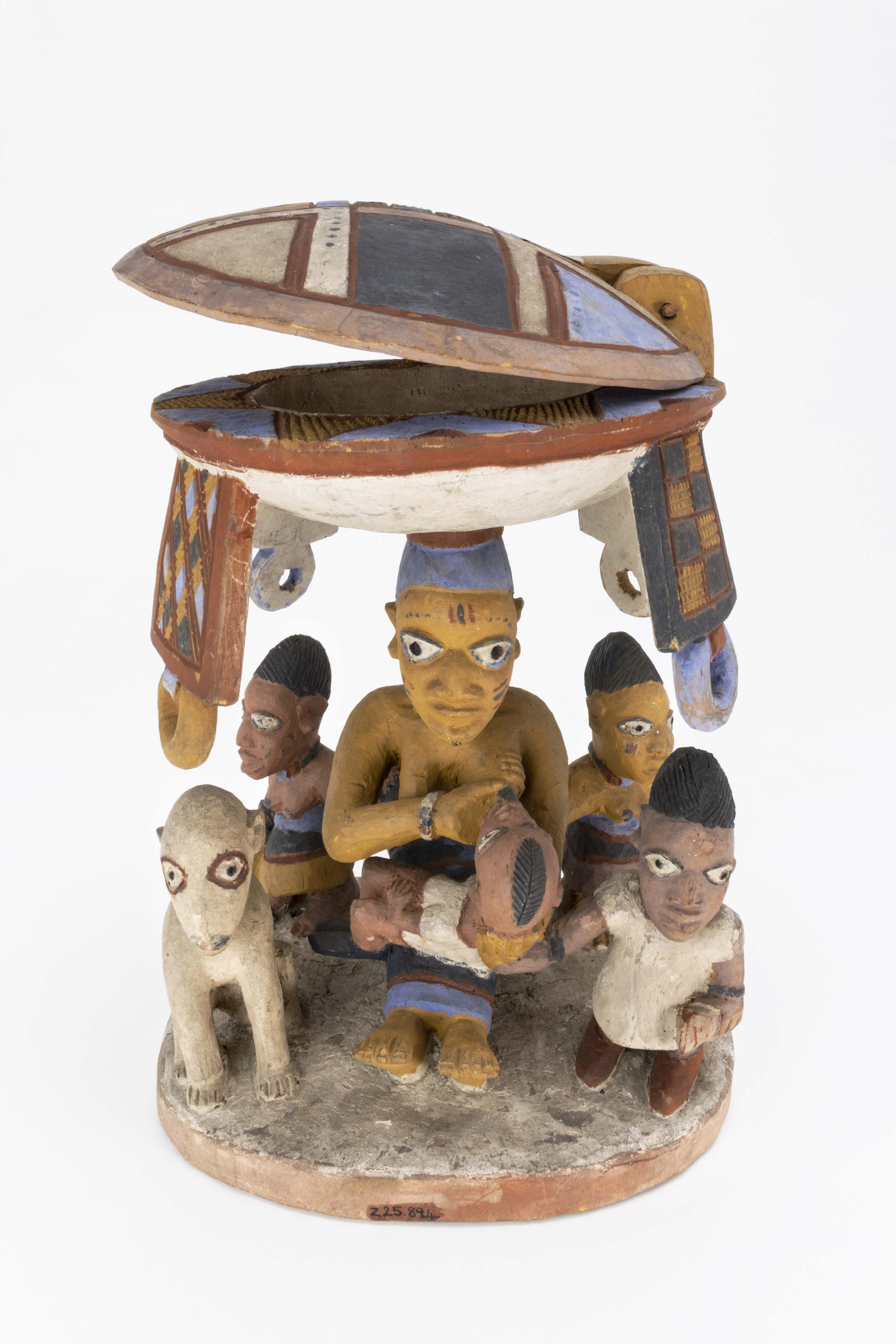
Agere Ifa. Carved wooden container for storing the sacred ikin (palm or kola nuts) used in Yoruba divination. The poise and high forehead of the seated woman indicates her elevated status. Sections are painted with ultramarine from laundry blue. MAA 1886.54
Agere Ifa. Carved wooden container for storing the sacred ikin (palm or kola nuts) used in Yoruba divination. The poise and high forehead of the seated woman indicates her elevated status. Sections are painted with ultramarine from laundry blue. MAA 1886.54
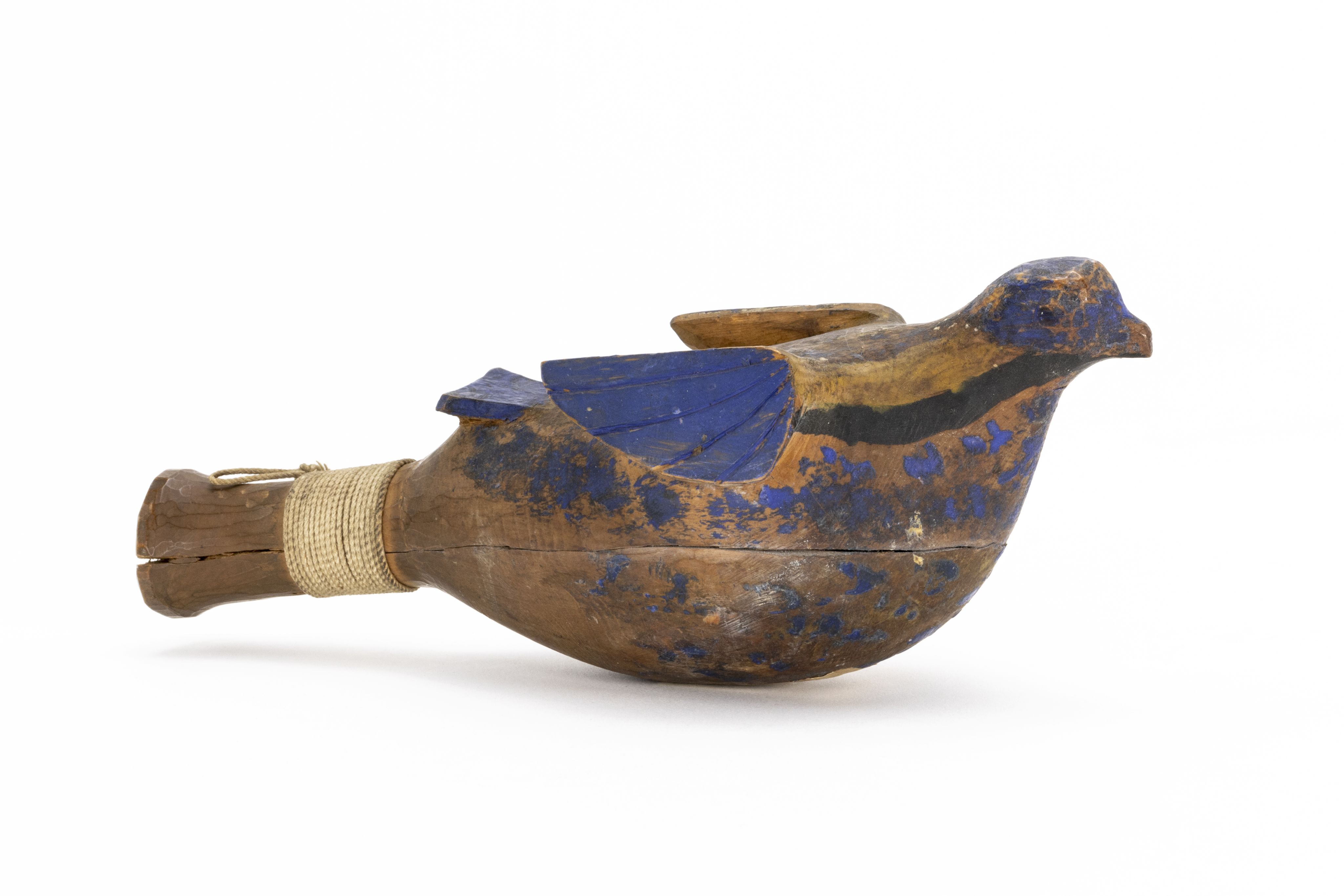
Ceremonial wooden rattle carved in the form of a bird. The head, wings and dots of plumage are painted with ultramarine. Small objects, probably stones, can be heard inside. MAA E 1910.16
Ceremonial wooden rattle carved in the form of a bird. The head, wings and dots of plumage are painted with ultramarine. Small objects, probably stones, can be heard inside. MAA E 1910.16
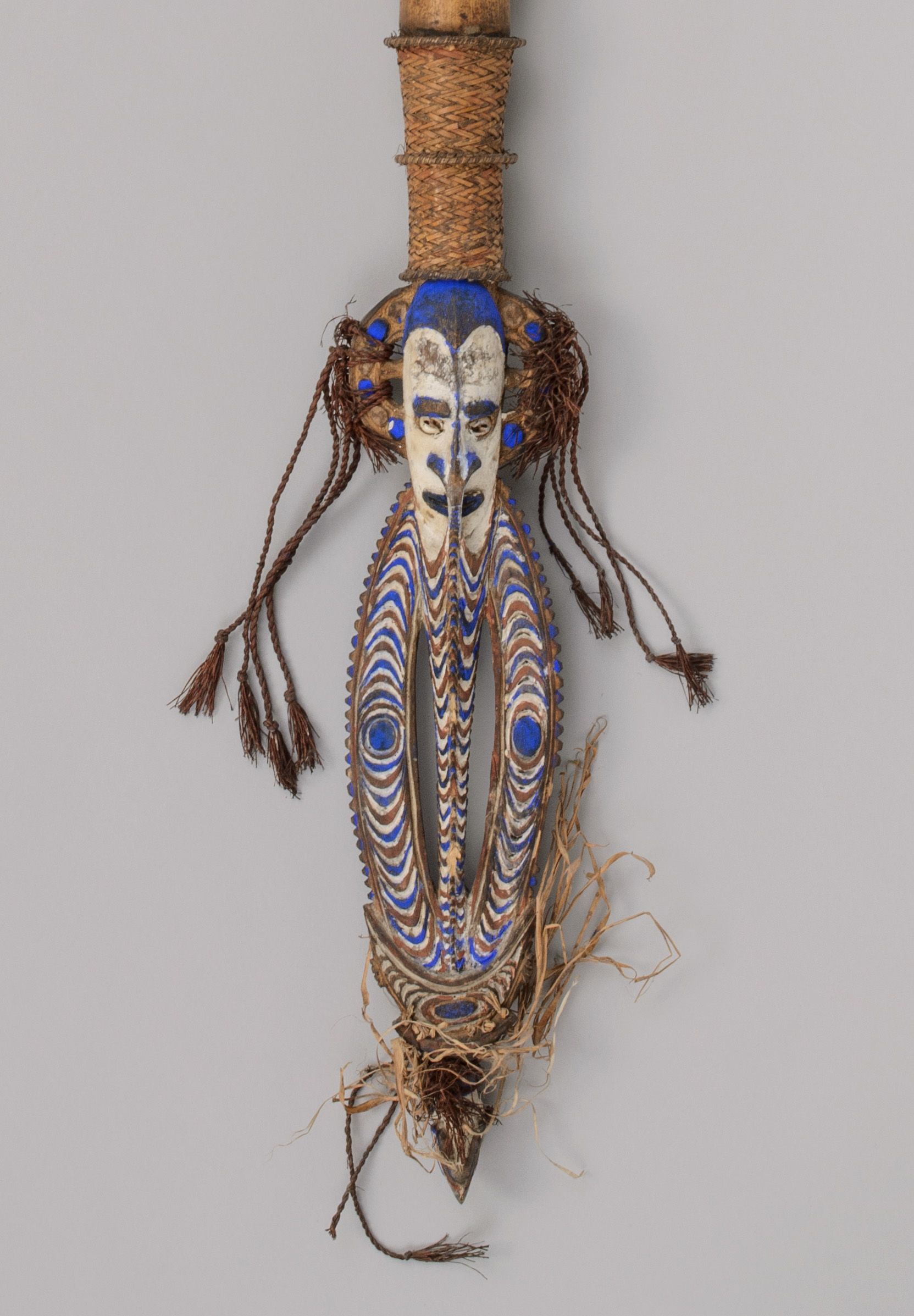
Bamboo lime container. The elaborately carved finial has a two-faced figure with a bird motif at the bottom, highlighted with ultramarine and white lime. Given to a male novice at the end of initiation. MAA 1935.17 B
Bamboo lime container. The elaborately carved finial has a two-faced figure with a bird motif at the bottom, highlighted with ultramarine and white lime. Given to a male novice at the end of initiation. MAA 1935.17 B
Egyptian Blue
The ancient Egyptians used lapis lazuli for amulets, jewellery and decorative inlay. However, instead of using the stone to make ultramarine, they manufactured a rich and versatile pigment known from Roman times as Egyptian blue. The local word has been translated as iryt (artificial) habd (lapis lazuli).
The earliest known manufactured pigment, it was used from at least the Fourth Dynasty (about 2640 - 2505 BCE).
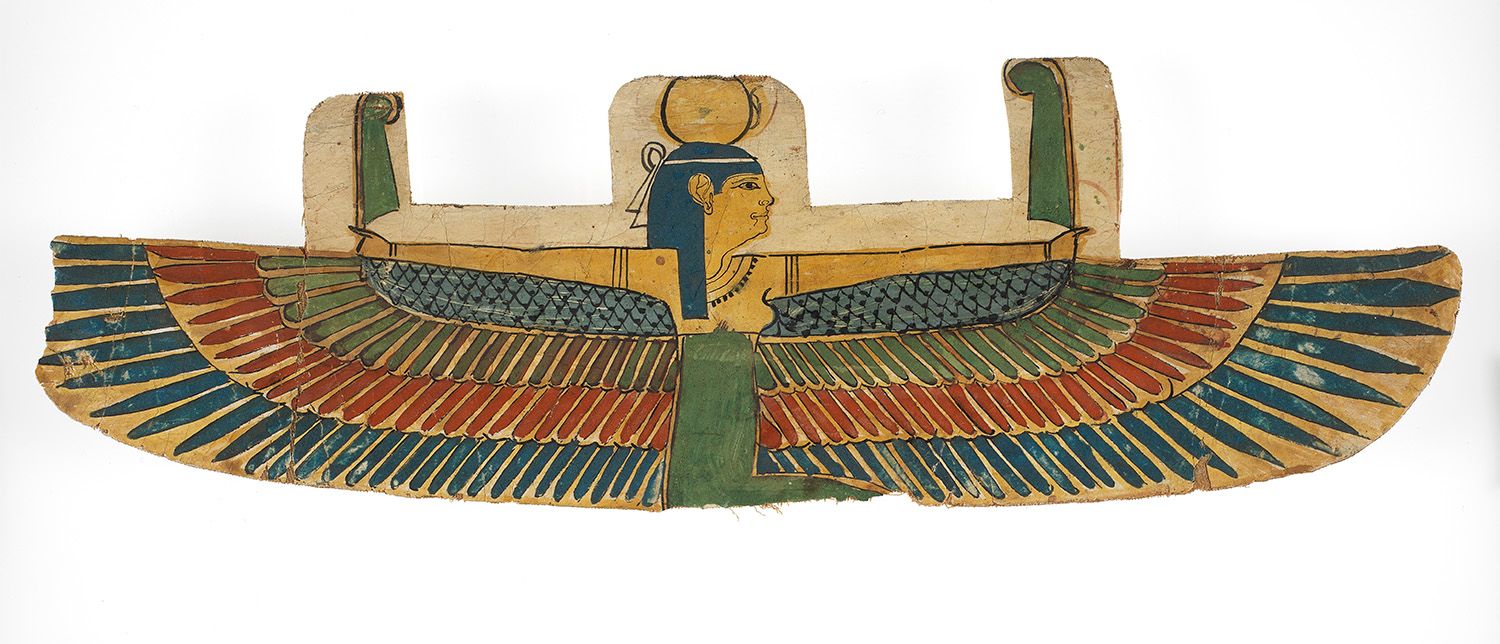
Cartonnage fragment from a mummy case showing the sky goddess Nut in the form of a winged female figure. Her skin is painted in yellow orpiment, the feathers are Egyptian blue and green, the light blue is a combination of Egyptian blue and lead white, and the red is cinnabar. Bequeathed by R.G. Gayer-Anderson. Fitzwilliam Museum E.GA.291.1949
Cartonnage fragment from a mummy case showing the sky goddess Nut in the form of a winged female figure. Her skin is painted in yellow orpiment, the feathers are Egyptian blue and green, the light blue is a combination of Egyptian blue and lead white, and the red is cinnabar. Bequeathed by R.G. Gayer-Anderson. Fitzwilliam Museum E.GA.291.1949
Insect Reds & Cactus Blood
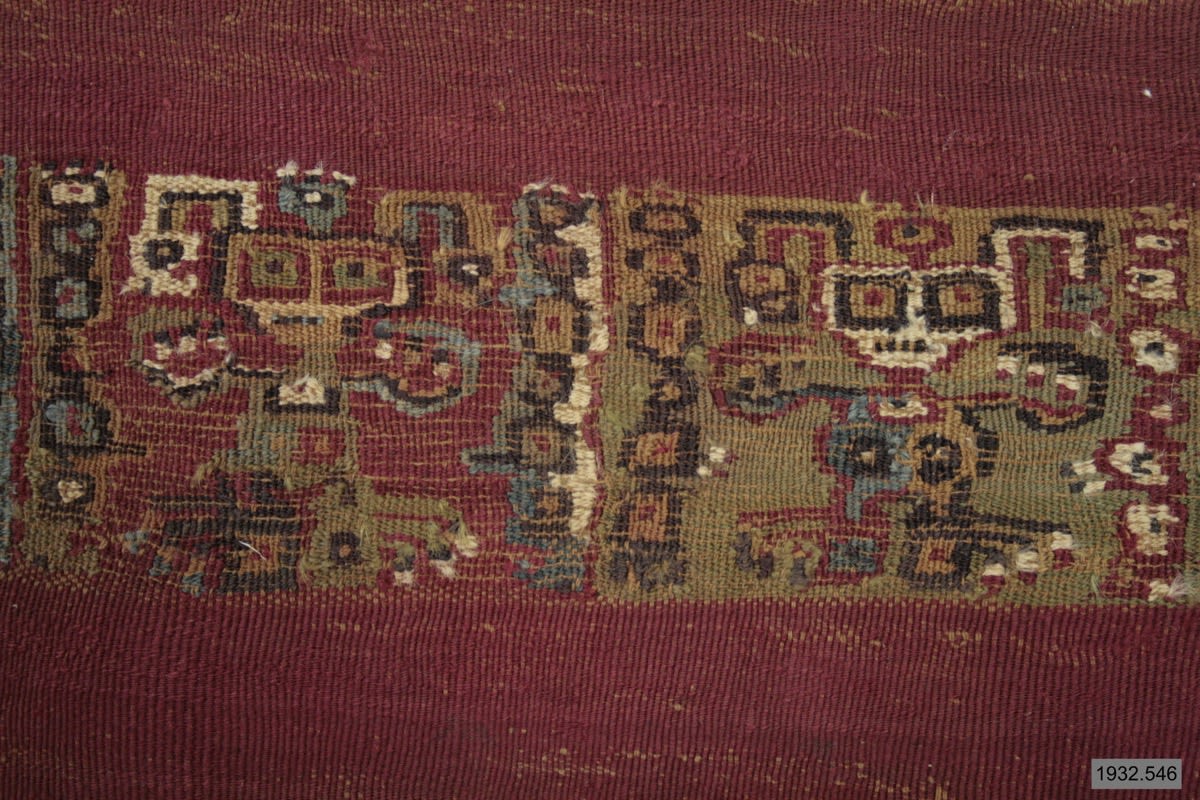
Textile fragment, Peru, c.600-1000CE. Long before the Inca empire, the Wari people were using insect red dyes in elaborate woven and embroidered textiles. Red was a crucian sign of status in life and in death. MAA 1932.546
Textile fragment, Peru, c.600-1000CE. Long before the Inca empire, the Wari people were using insect red dyes in elaborate woven and embroidered textiles. Red was a crucian sign of status in life and in death. MAA 1932.546
The remains of female scale insects produced the most vibrant and versatile range of red colours, prized throughout the Americas and Europe for over a millennium. Both Mesoamerican and Andean empires had perfected the cultivation of insect-based red dye long before the Spanish arrived in the Americas at the end of the fifteenth century.
In Nuahuatl, the Aztec language, the insects are called 'cactus blood' (nocheztli). The Spanish had little regard for Indigenous attributions. They called the insect and the dye 'cochinilla' (cochineal) and exploited the Indigenous production of this highly desired red, which became a major international commodity.
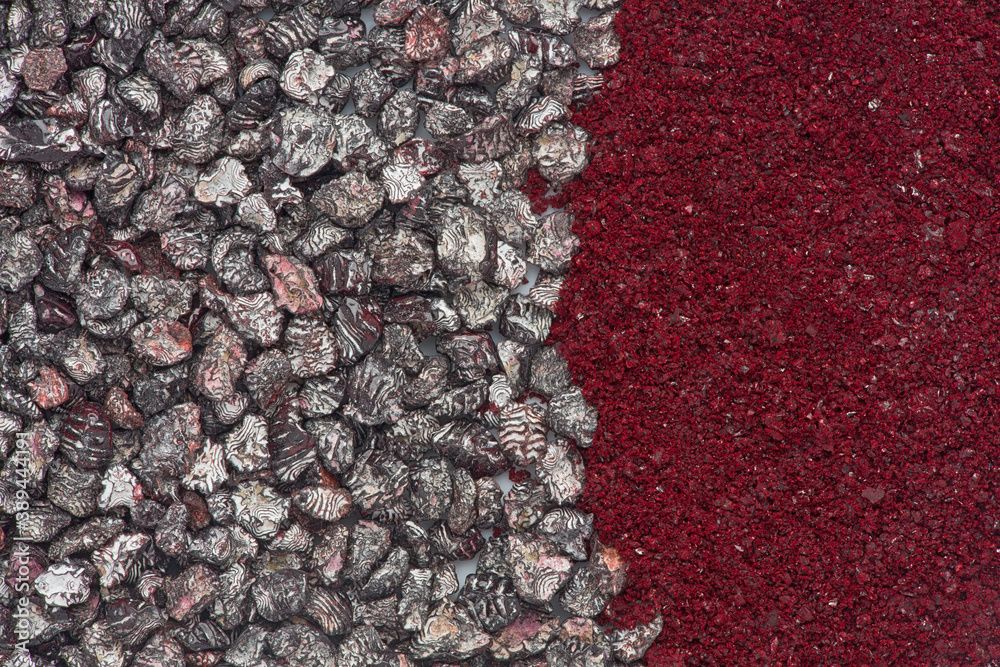
Dried and crushed cochineal insects.
Dried and crushed cochineal insects.
Cochineal in Europe
From the 16th century, millions of dried insects or 'grains' were exported from Peru and Mexico annually, with 72 tons shipped from Peru to Spain in 1578.
The European desire for cochineal was intense. English pirates seeking the dyestuff preyed upon Spanish galleons. The availability of large quantities of insect red changed the traditional dyeing practices across Europe and had a significant impact on the production of textiles worldwide.
Pillow Cover
England, late 16th century
Woven tapestry depicting three scenes from the biblical story of Tobias and the Angel. It was likely one of a set of six or more tapestries, each portraying a different episode from the story.
At least twenty-two different coloured wools were used. The scarlet threads were dyed with insect red, probably cochineal sourced from the Americas.
This tapestry was likely woven in one of the London workshops set up by Flemish émigré weavers fleeing religious conflict and looking for stable markets.
Purchased from R. Ellis Lyons. Fitzwilliam Museum T.1-1953
Sampler, 1767
Ann Smith, England
Canvas sampler embroidered with polychrome silks. The scarlet threads were dyed with insect red, which was commonly available by the 18th century.
The central panel shows the temptation of Adam and Eve in the Garden of Eden, prayer inscriptions, the creator's name and the date. Samplers illuminate the lives of girls and women and provide insights into their social and religious background. They were also an opportunity to develop and demonstrate needlework skills.
H.A. Longman Bequest. Fitzwilliam Museum T.37-1938
The Power of Colour
The materials and effects of colour underlie its power, as explored in this section. From the deep rich blue of ultramarine to the glitter of gold and the coloured flashes seen in iridescence, colour influences our emotions and behaviours. It helps us to understand and structure the world around us. It also has profound and far-reaching political implications.
The classification of colour is central to scientific analysis, philosophical traditions, fashion trends and global marketing.
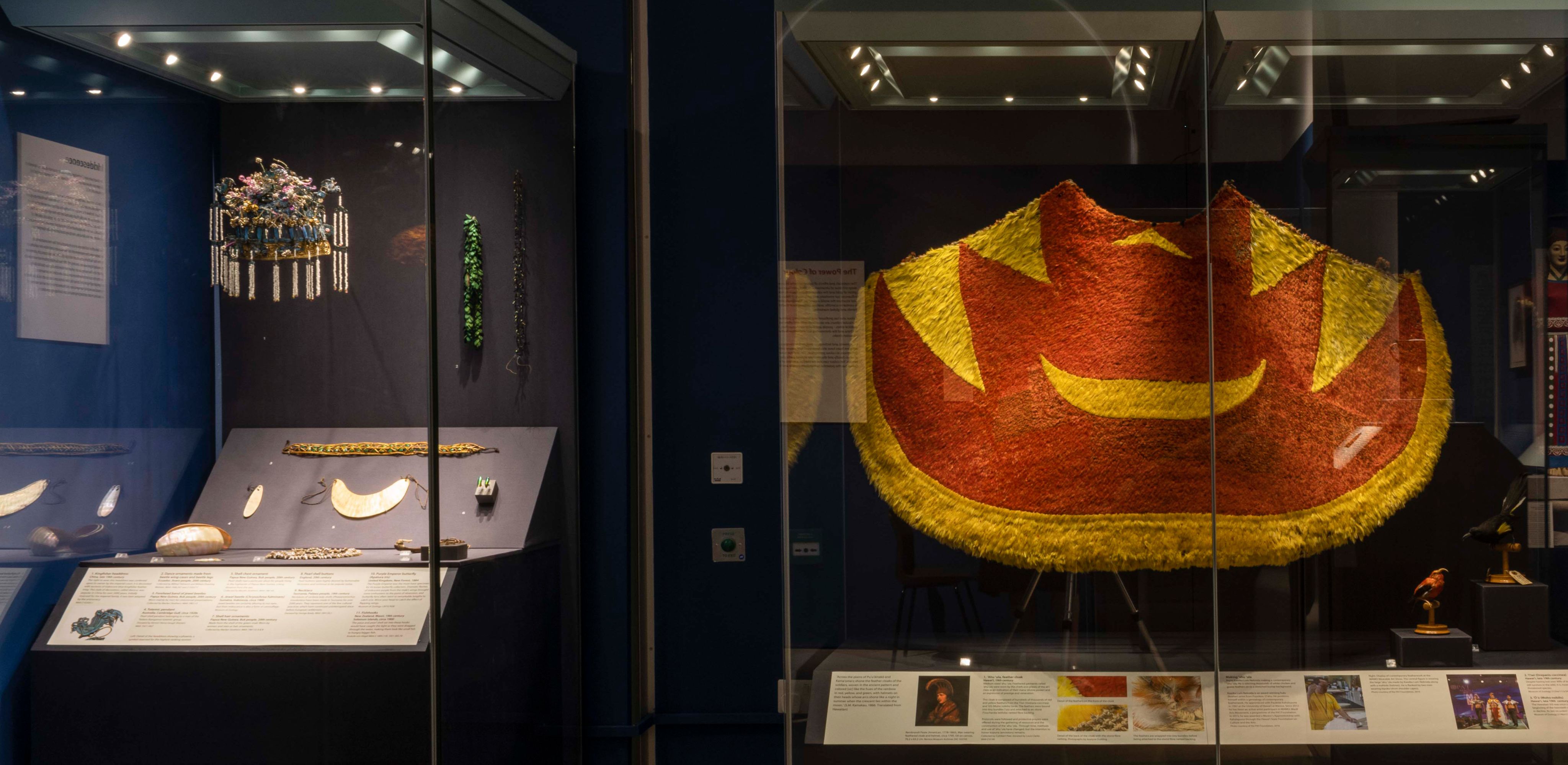
Instruments and techniques designed to compare and categorise different hues have also been used to measure people. Differences in colour perception, skin and eye tones have been used to classify and discriminate against particular groups of people.
William Rivers and Noboa demonstrating the use of the colour wheel for testing visual acuity inside the 'anthropological laboratory' set up in the old mission house on Mabuiag Island. On the table is a box containing Holmgren's wools. Torres Strait, Australia, 1898. MAA N.23037.ACH2
William Rivers and Noboa demonstrating the use of the colour wheel for testing visual acuity inside the 'anthropological laboratory' set up in the old mission house on Mabuiag Island. On the table is a box containing Holmgren's wools. Torres Strait, Australia, 1898. MAA N.23037.ACH2
Imperial Colour
Colour has often been associated with and restricted to rulers and members of the elite. Tyrian purple has long been a symbol of power and royalty. Produced from the glands of sea snails, it was traded across the Mediterranean from the first millennium BCE by Phonecians from Tyre, in present day Lebanon. 250,000 molluscs were needed to make an ounce of dye. It was a laborious and smelly process, with the sea snail liquid fermented in vats of urine. Tyrian purple is still made today - a gram costs about £2,000.
Born in the Purple
Purple became associated with the imperial classes of Rome, Byzantium, Egypt and Persia. In England, Queen Elizabeth I passed a sumptuary law in 1577 restricting the wearing of purple to close members of the royal family. The phrase 'born in the purple' still refers to being of royal or high birth.
Queen Elizabeth I, Unknown artist. Oil on panel, early 17th century.
National Portrait Gallery NPG 542
Imperial Yellow in China
In China bright yellow has been associated with the ruling elite for over two millennia. Within the Five Elements Theory, it became the emblem of the Emperor, located at the centre of the five directions and represented by the element earth.
A bright reddish yellow dye was produced from the pounded tubers of the Chinese foxglove (Rehmannia glutinosa), used as an important herb in traditional medicine. Imperial yellow also graced court ceramics and the rooftrees of imperial buildings. The rich deep colour was produced by applying a low-fired silicate overglaze to high-fired porcelain.
In this throne back cover, the association with the Emperor is indicated by the five-clawed dragon in golden metallic thread.
Throne back cover, China, late 18th century, donated by Some Jenyns. Fitzwilliam Museum T-92-1977
During the Qing dynasty (1644 - 1911) yellow clothing and accessories were restricted to the imperial household. Only the Emperor could wear the elaborate yellow coat with the central motif of a five clawed dragon. This conventional court portrait depicts the Daoguang Emperor, who ruled between 1820 - 1850. It is painted on a silk scroll. After death portraits were used for the veneration of ancestors.
Imperial portrait (left extending image altered). China, artist unknown, mid 19th century. Palace Museum, Beijing. Wikimedia Commons.
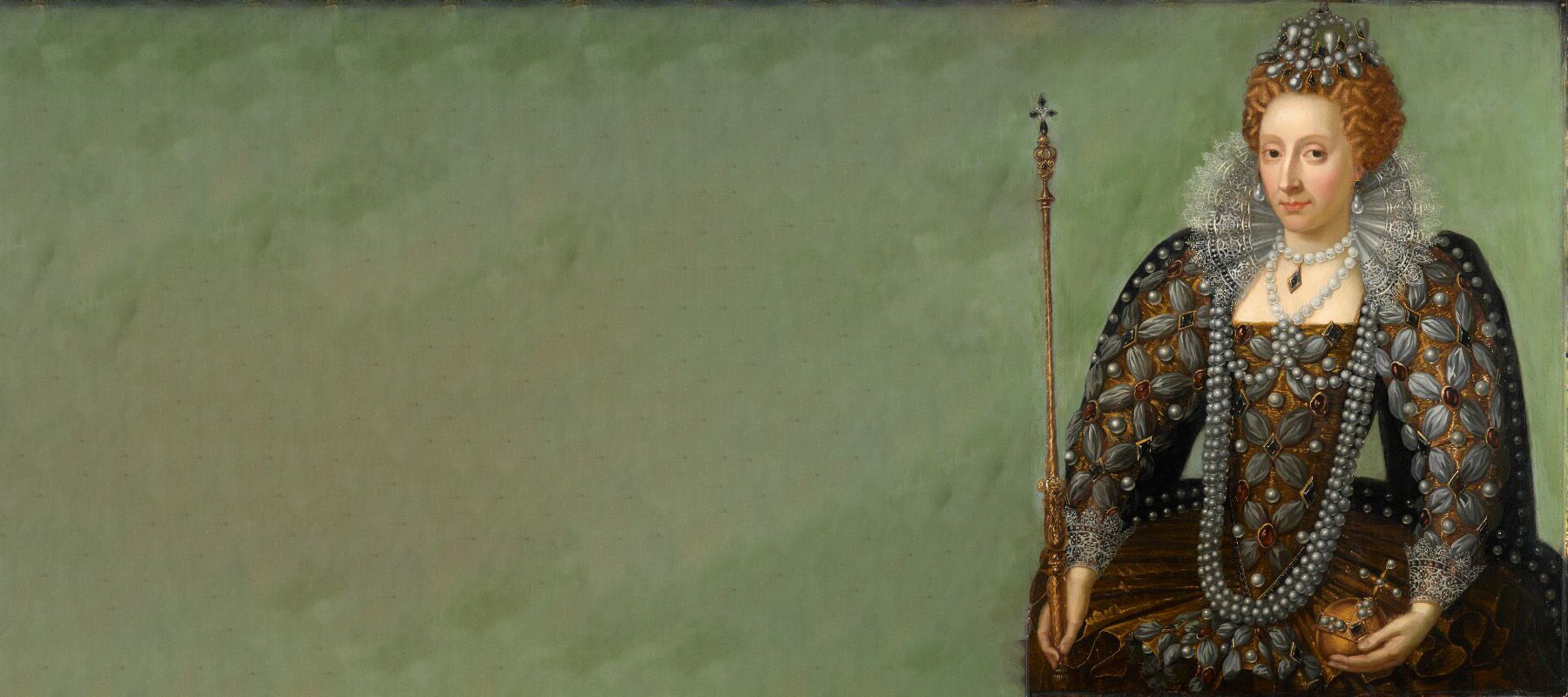
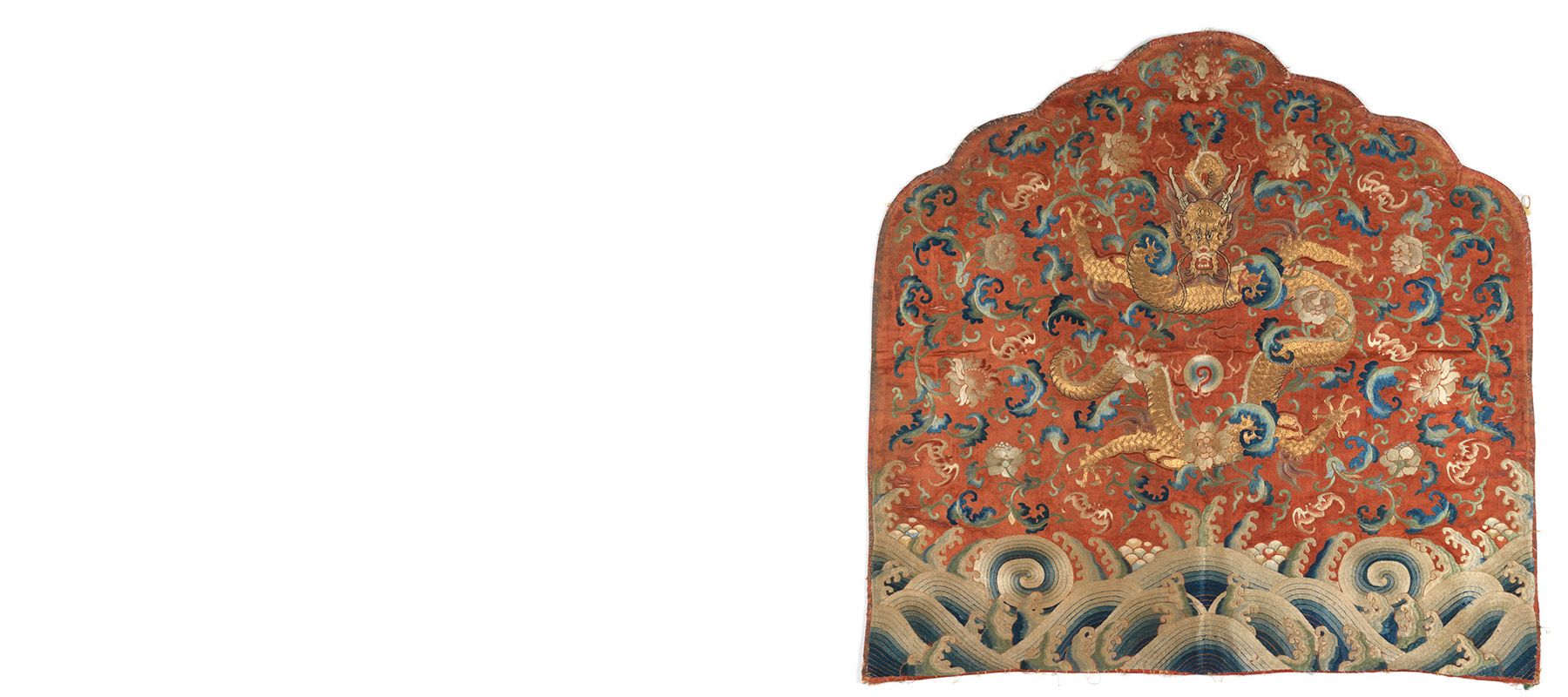
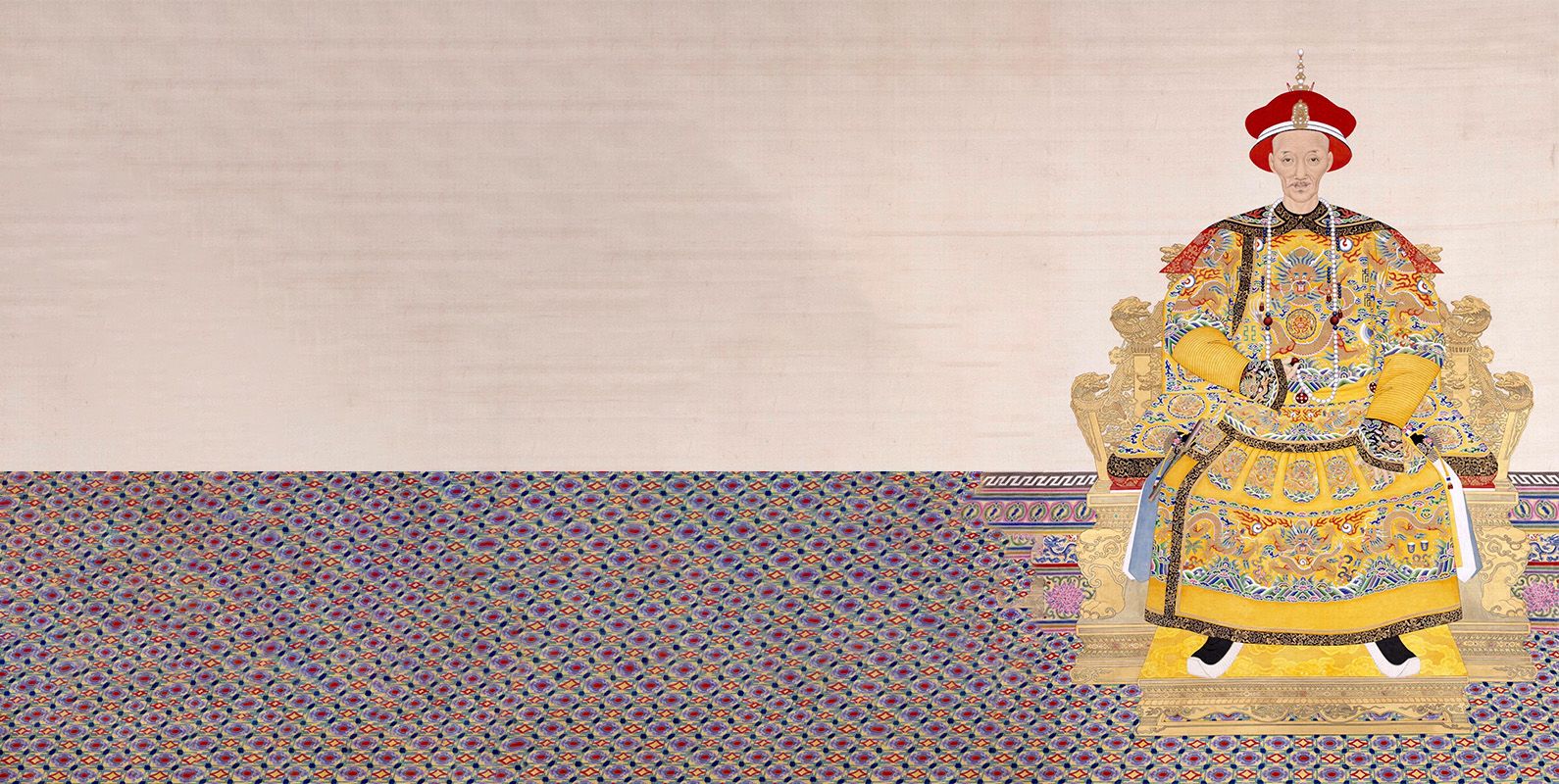
Transforming Colour
Colour has the power to transform people and things. A remarkable example is tapirage, the technique of changing the colour of feathers on living birds, practiced by numerous Amazonian groups.
For many Amazonian peoples there is a close affinity between parrots and human beings. Young birds are captured from their nests and brought back to the village when they are carefully nurtured. Parrots live in the household and when they die they are buried inside the house under their perch.
The golden feathers produced by tapirage are associated with the sun. They are used in headdresses worn during communal ritual dances. While the style of headdresses and the details of belief systems vary between different Amazonian groups, there is a shared notion that dancing is like flying, and that parrots, like humans, have souls that are destined for the celestial world.
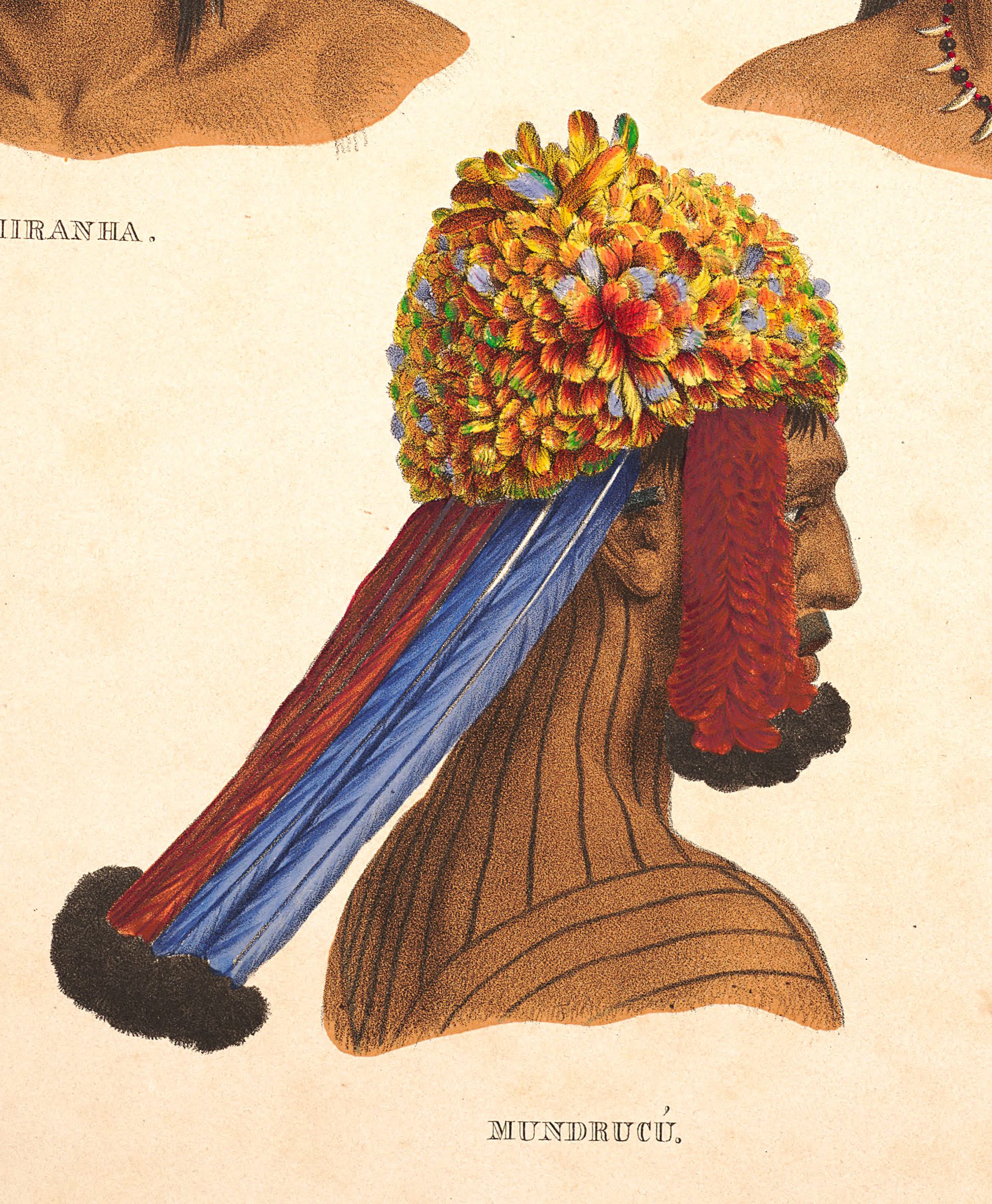
Coloured lithograph of a man wearing a distinctive Munduruku headdress with a tapirage crown. In the early nineteenth century Munduruku community members described tapirage to Carl Friedrich Philipp von Martius (1794-1868), a German botanist and explorer. Spix and Martius, Reise in Brasilien, 1823-1831, pl. 32
Coloured lithograph of a man wearing a distinctive Munduruku headdress with a tapirage crown. In the early nineteenth century Munduruku community members described tapirage to Carl Friedrich Philipp von Martius (1794-1868), a German botanist and explorer. Spix and Martius, Reise in Brasilien, 1823-1831, pl. 32
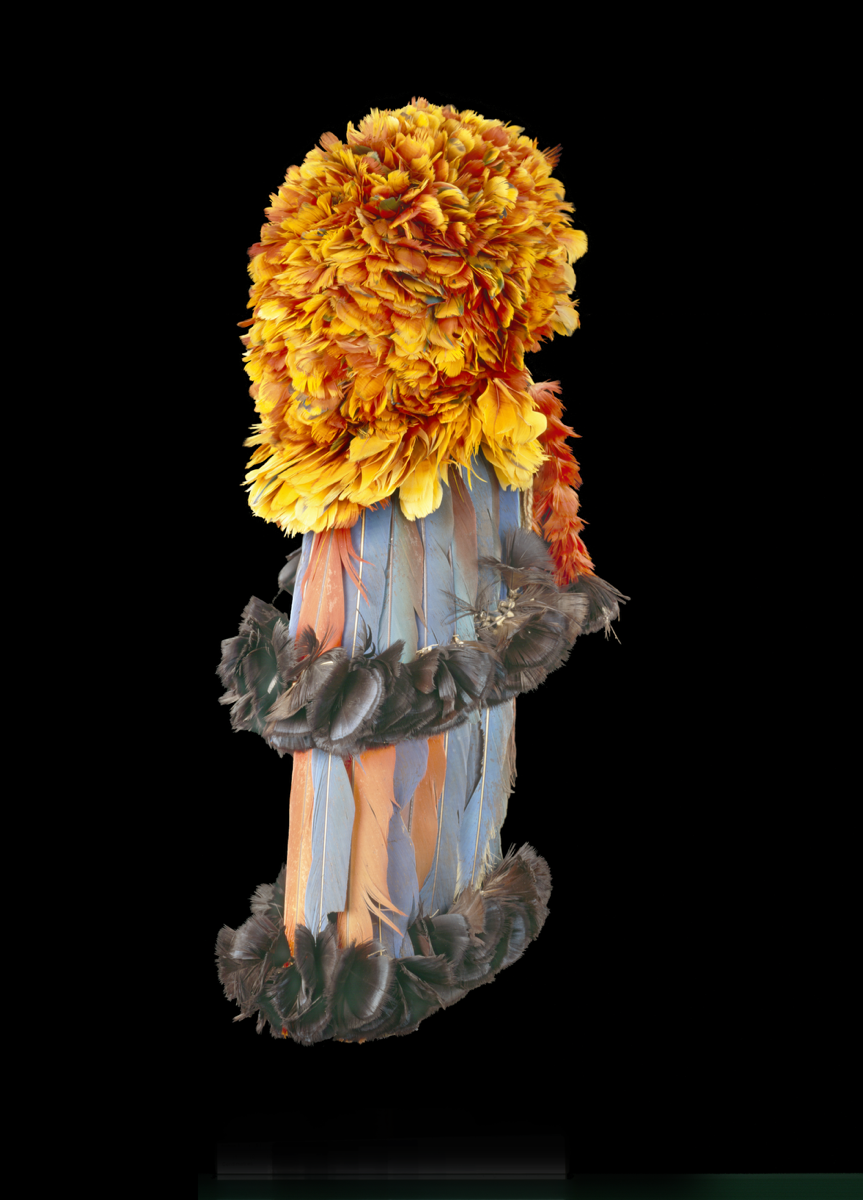
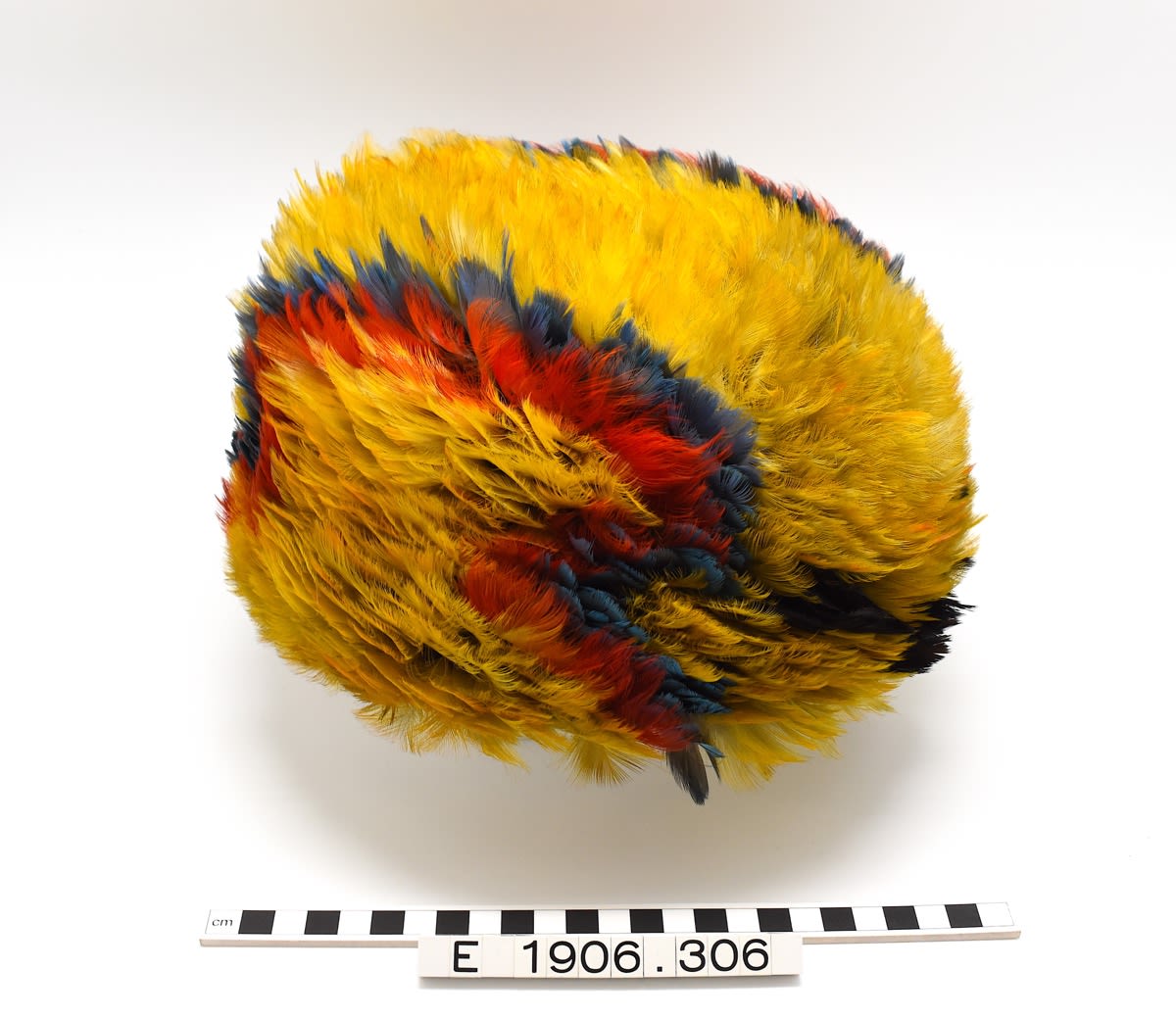

The feathers on the crown of this headdress don't reflect the natural colours of the species of parrot they came from. In the wild the feathers would have been green or blue; the golden feathers with bursts of red were produced by tapirage. Feathered headdress, Munduruku people, Rio Cadereyta, Brazil, 19th century. Donated by Enrico Hillyer Giglioli, MAA E 1903.442
The feathers on the crown of this headdress don't reflect the natural colours of the species of parrot they came from. In the wild the feathers would have been green or blue; the golden feathers with bursts of red were produced by tapirage. Feathered headdress, Munduruku people, Rio Cadereyta, Brazil, 19th century. Donated by Enrico Hillyer Giglioli, MAA E 1903.442

The colours on this eye-catching headdress are typical of the natural feathers of the macaw. The extraordinary range of brightly coloured feathers found in the Amazon is used to create a variety of beautiful and powerful ornaments. Combinations of different coloured feathers were used for spiritual and aesthetic reasons as well as to express individual and group identity. Feathered headdress, Brazil, probably Munduruku, 19th century. Donated by Anthony Bevan. MAA E 1906.306
The colours on this eye-catching headdress are typical of the natural feathers of the macaw. The extraordinary range of brightly coloured feathers found in the Amazon is used to create a variety of beautiful and powerful ornaments. Combinations of different coloured feathers were used for spiritual and aesthetic reasons as well as to express individual and group identity. Feathered headdress, Brazil, probably Munduruku, 19th century. Donated by Anthony Bevan. MAA E 1906.306
Iridescence
Iridesence has the power to enchant and captivate. Chinese connoisseurs' desire for shimmering kingfisher feathers goes back millennia. Victorian butterfly collectors were obsessed with the dramatic flash produced by the wings of the Purple Emperor butterfly. For some Aboriginal groups, sparks of brilliance were equated with ancestral power. Iridescence can seem unpredictable, exciting and potentially dangerous.
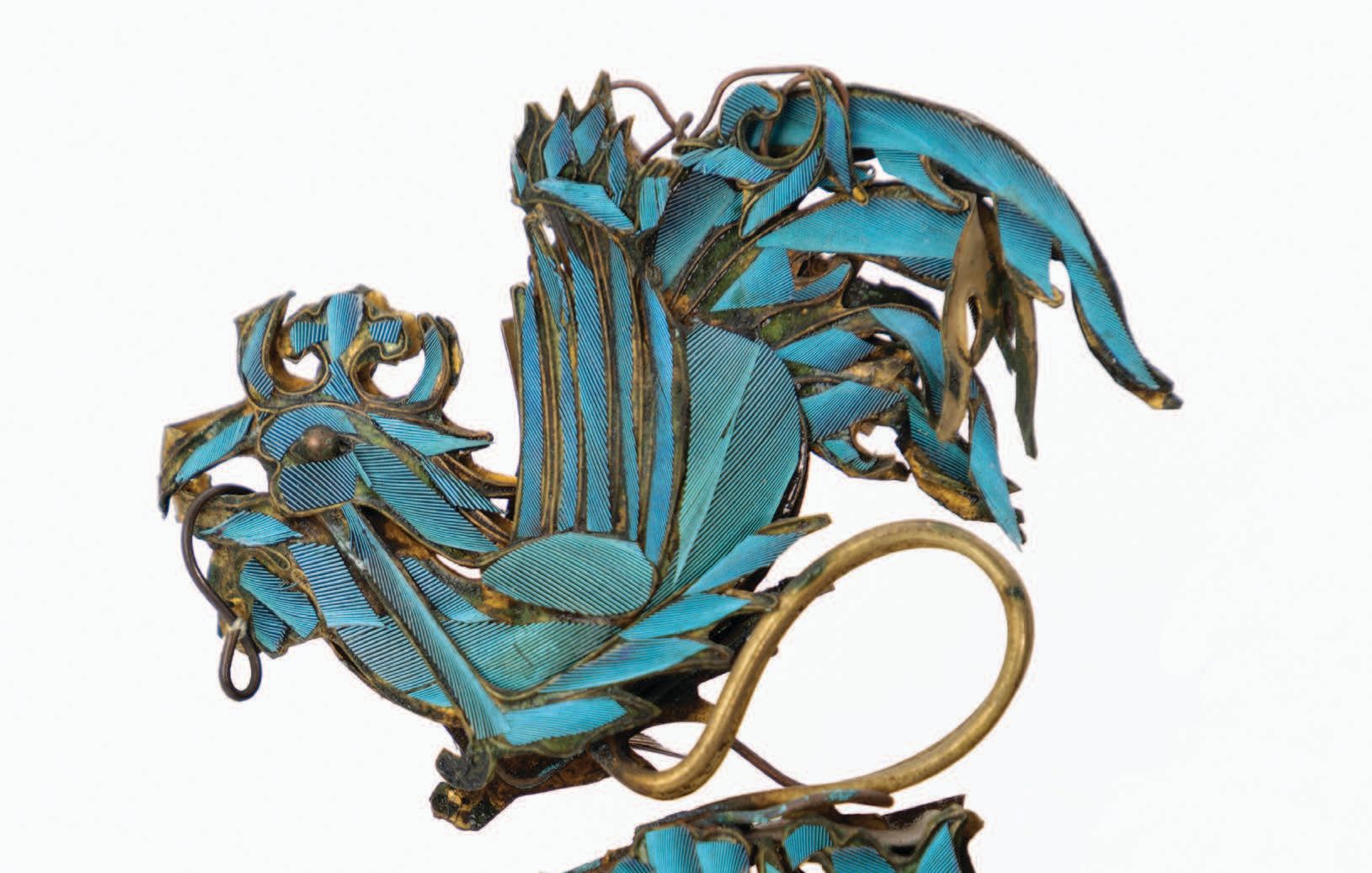
Detail from a kingfisher headdress, decorated with sections of iridescent blue kingfisher feather inlay. The phoenix is a symbol reserved for the highest-ranking women. China, late 19th century. MAA Z 42505.1
Detail from a kingfisher headdress, decorated with sections of iridescent blue kingfisher feather inlay. The phoenix is a symbol reserved for the highest-ranking women. China, late 19th century. MAA Z 42505.1
'And halcyon kingfisher [plumes] and pearl-studded coverlets glisten in equal splendour'
The effect of iridescence is produced by the relationship between the movement of the viewer and minute variations in the surface structure of things. These microscopic changes make light waves bouncing off the surface interfere with each other. Discover some of the wonderful effects from across the world below.
Kingfisher headdress, China, late 19th century
The right to wear this headdress was conferred upon its owner by the imperial court. It is decorated with sections of iridescent blue kingfisher feather inlay. This style of decoration, called diancui, was popular in China for over 2000 years.
Pearl shell set into fishhooks catch the light as they are dragged through the water, making them look like small fish to bigger fish.
'Ahu 'ula Hawaiian Feather Cloak
'Ahu 'ula means red ('ula) garment, referencing the association of red with mana (divine power) as well as the 'i'iwi feathers used in their construction. Red conveys many meanings, including warmth, kinship and political power. 'Ahu 'ula were worn by the chiefs and priests of the ali'i class as an expression of prestige and veneration. Worn on formal occasions and on battlefields, they were also used as honorific gifts and to mark strategic alliances between ali'i and with foreign dignitaries.
This medium sized 'ahu 'ula cloak is composed of hundreds of thousands of red and yellow feathers from the 'i'iwi (Vestiaria coccinea) and 'ō'ō (Moho nobilis) birds. The feathers were bound into tiny bundles ('uo) and attached to an olonā (Touchardia latifolia) netted fibre backing.
The great effort needed to accumulate the feathers in making an 'ahu 'ula displayed the 'ali'i's political and economic prowess as well as their spiritual power. The interweaving of high chiefly lineages and political action and entwined in the materials and processes that bind feathers to cordage.
No two 'ahu 'ula are alike. The cloaks were created by experts and their manufacture was highly regulated by strict kapa (taboo). Individual families passed down the knowledge of making 'ahu 'ula, which is used in leatherwork today.
Making 'ahu 'ula
Kawika Lum-Nelmida is an award-winning hulu (feather) artist from Pūpūkea, O'ahu. He positions himself within a genealogy of contemporary leatherwork. He apprenticed with Paulette Kahalepuna in 1997 at the University of Hawai'i at Mānoa.
Since 2012 he has been an active participant in MAMo: Maoli Arts Movement, a programme of the PA'I Foundation. In 2013 he was awarded a Master's Apprenticeship with Kahalepuna through the Hawai'i State Foundation on Culture and the Arts.
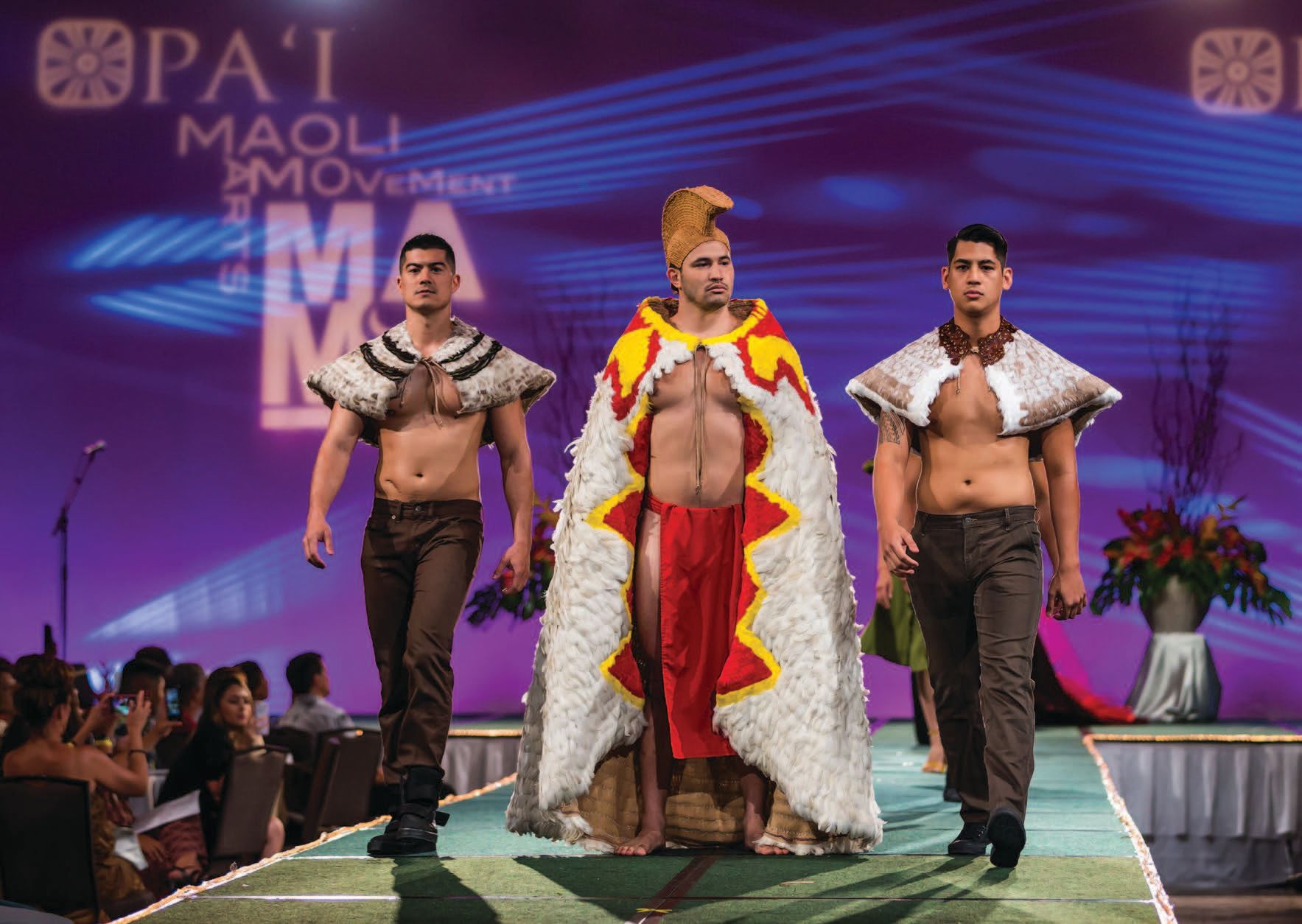
Display of contemporary featherwork at the MAMO Wearable Art Show. The central figure is wearing the large 'ahu 'ula feathered cloak made by Kawika Lum-Nelmida along with a manhole (helmet), flanked by two men earring kipula (short shoulder capes). Photo courtesy of the Pa'i Foundation, 2019.
Display of contemporary featherwork at the MAMO Wearable Art Show. The central figure is wearing the large 'ahu 'ula feathered cloak made by Kawika Lum-Nelmida along with a manhole (helmet), flanked by two men earring kipula (short shoulder capes). Photo courtesy of the Pa'i Foundation, 2019.
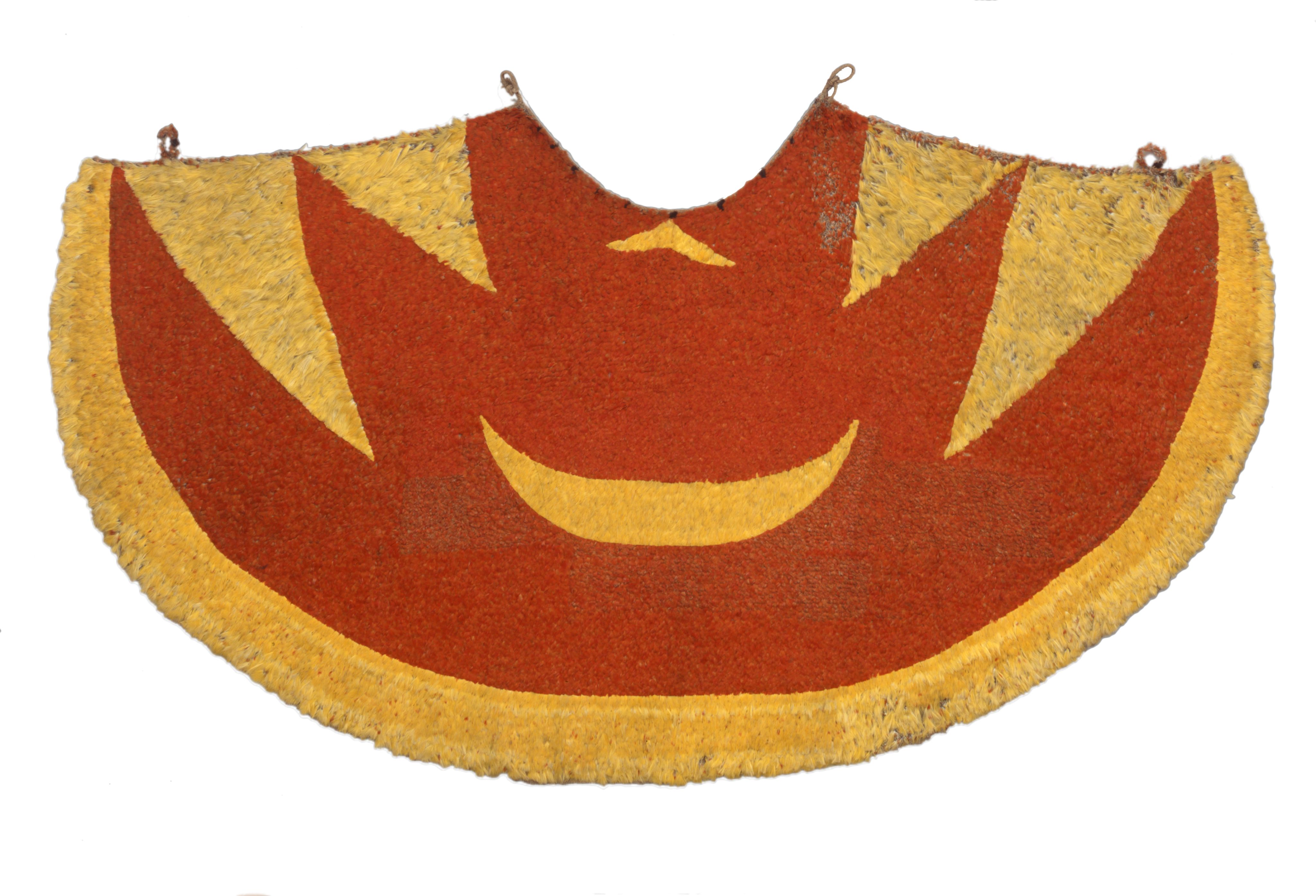
'Ahu 'ula, feather cloak. Hawai'i, 19th century. Collected by Cuthbert Peel, donated by Louis Clarke. MAA Z 6140
'Ahu 'ula, feather cloak. Hawai'i, 19th century. Collected by Cuthbert Peel, donated by Louis Clarke. MAA Z 6140
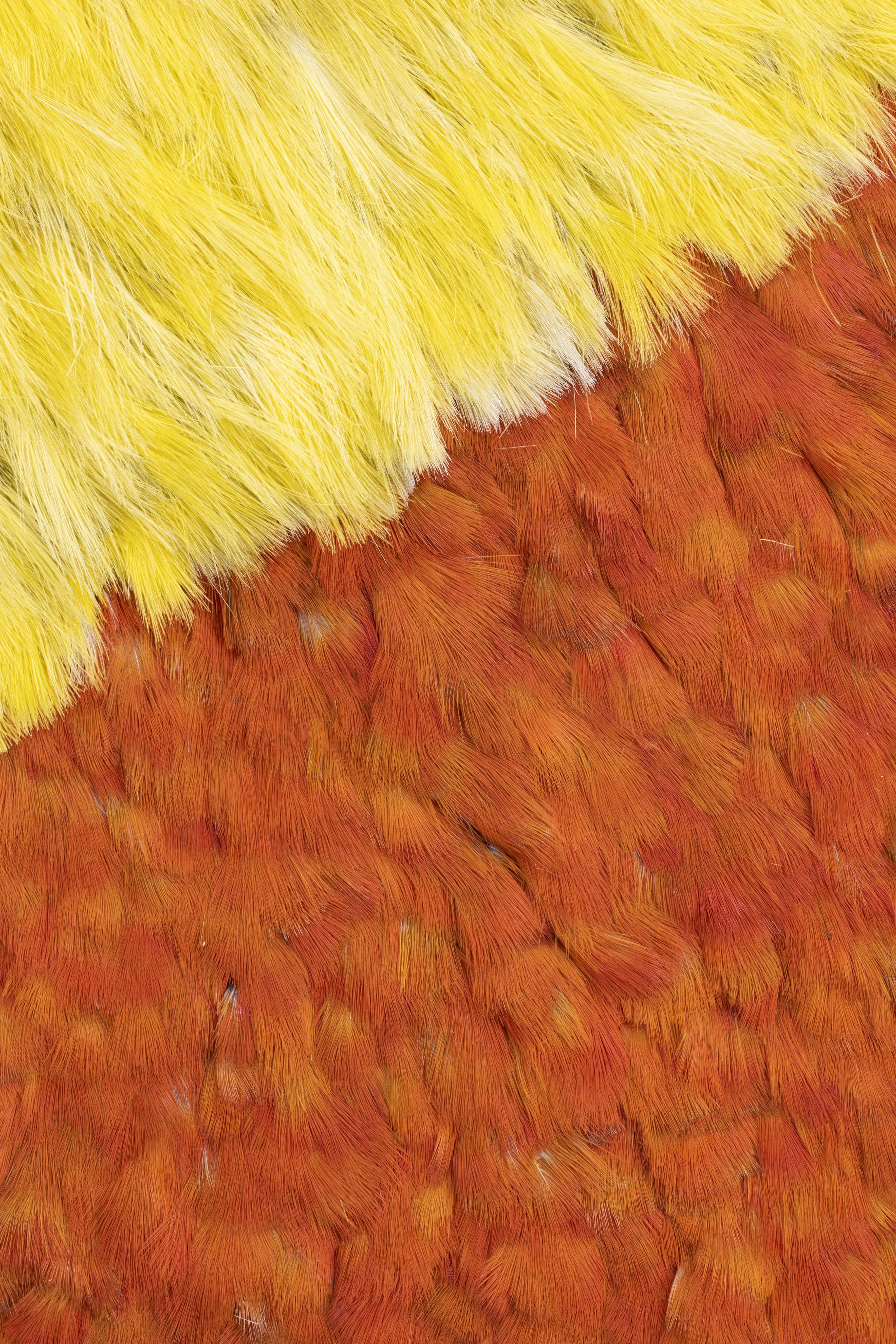
Detail of the feathers on the front of the cloak.
Detail of the feathers on the front of the cloak.
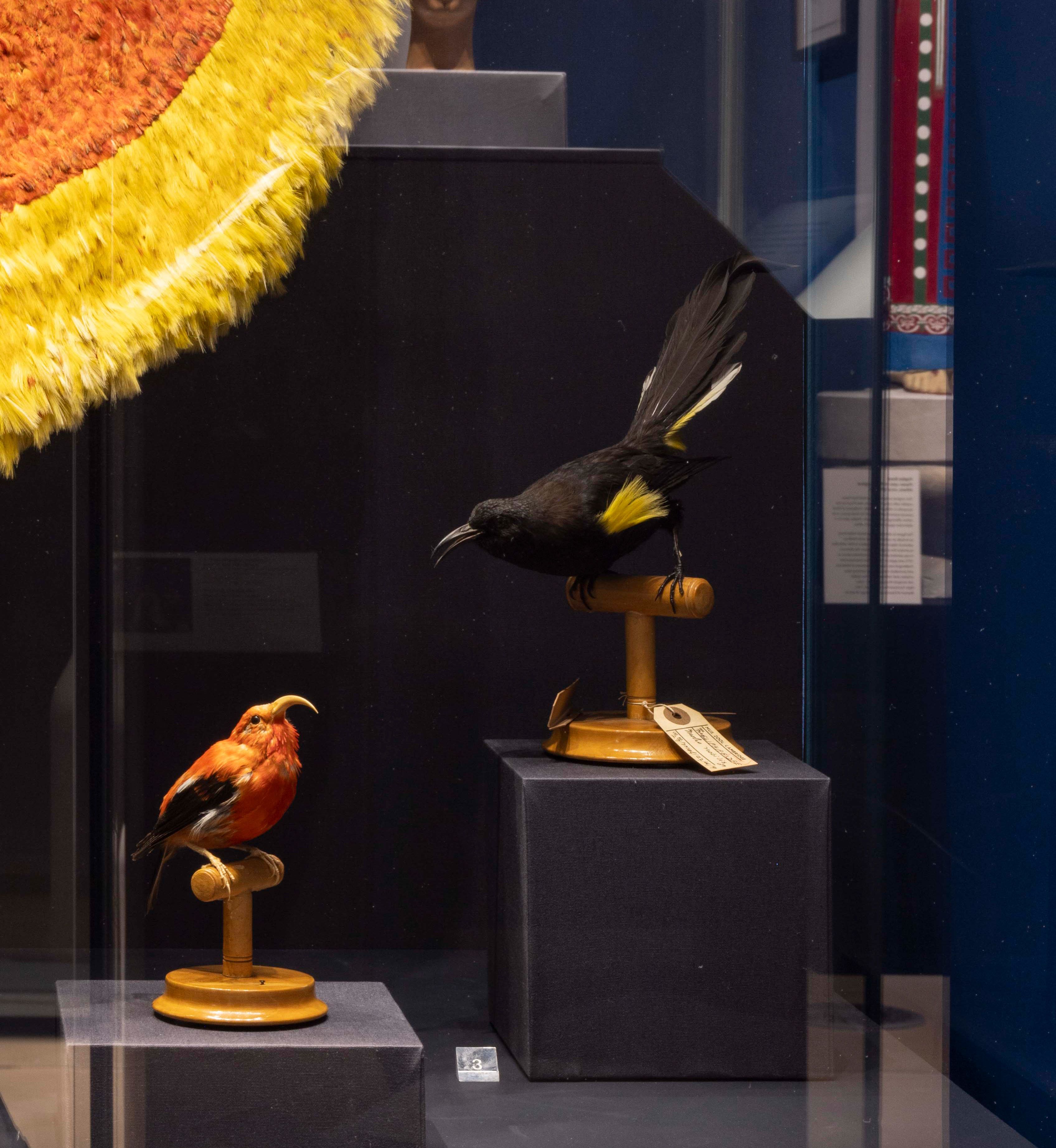
'I'iwi (Drepanis coccinea) and 'Ō'ō (Moho nobilis). Despite having lost over 90% of its range, the I'iwi still survives in the wild, but is listed as a threatened species. The Hawaiian 'ō'ō was once common, but by the twentieth century its numbers were in decline. Its last recorded sighting was in 1934. Museum of Zoology
'I'iwi (Drepanis coccinea) and 'Ō'ō (Moho nobilis). Despite having lost over 90% of its range, the I'iwi still survives in the wild, but is listed as a threatened species. The Hawaiian 'ō'ō was once common, but by the twentieth century its numbers were in decline. Its last recorded sighting was in 1934. Museum of Zoology
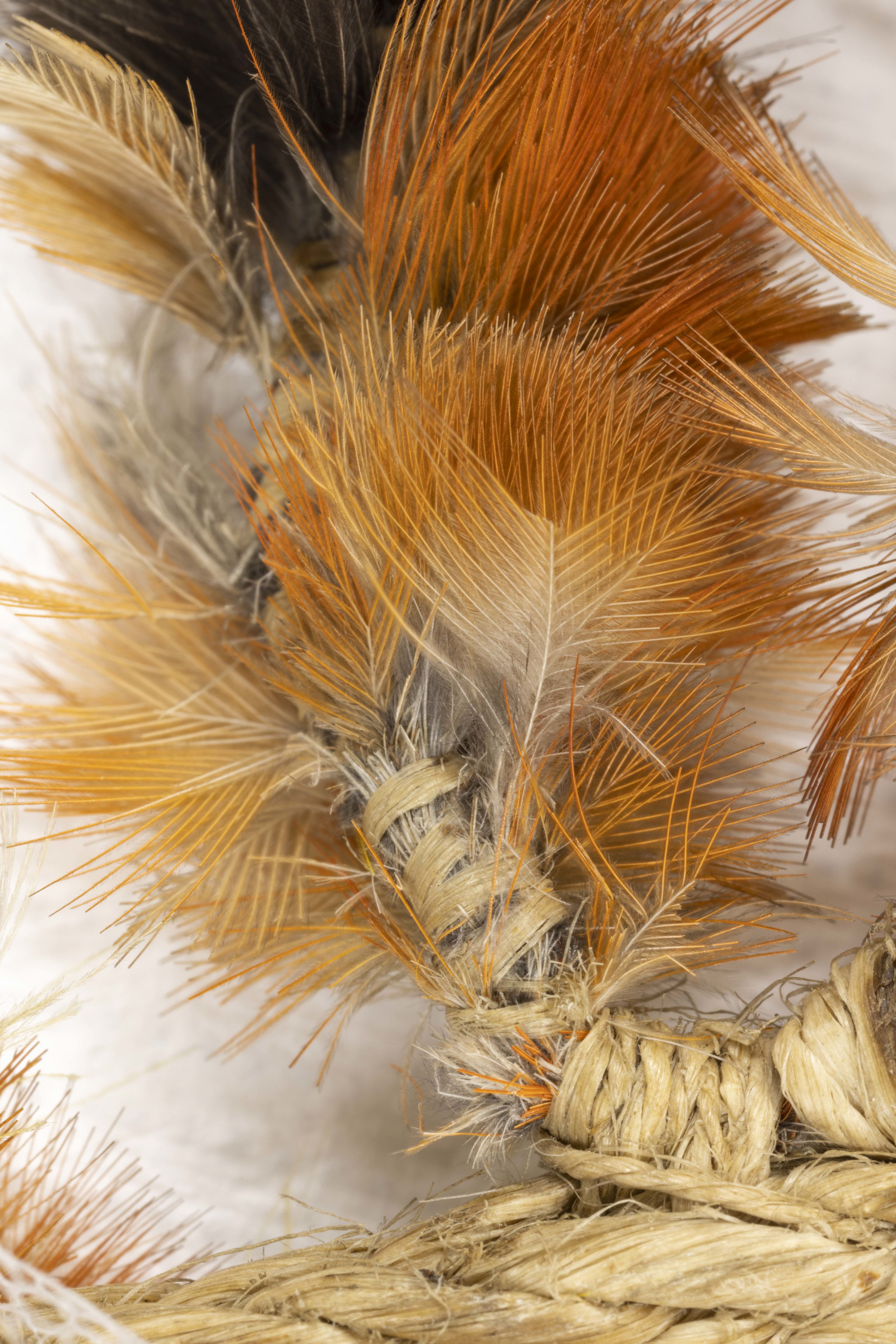
The feathers are wrapped into tiny bundles before being attached to the olonā fibre netted backing.
The feathers are wrapped into tiny bundles before being attached to the olonā fibre netted backing.
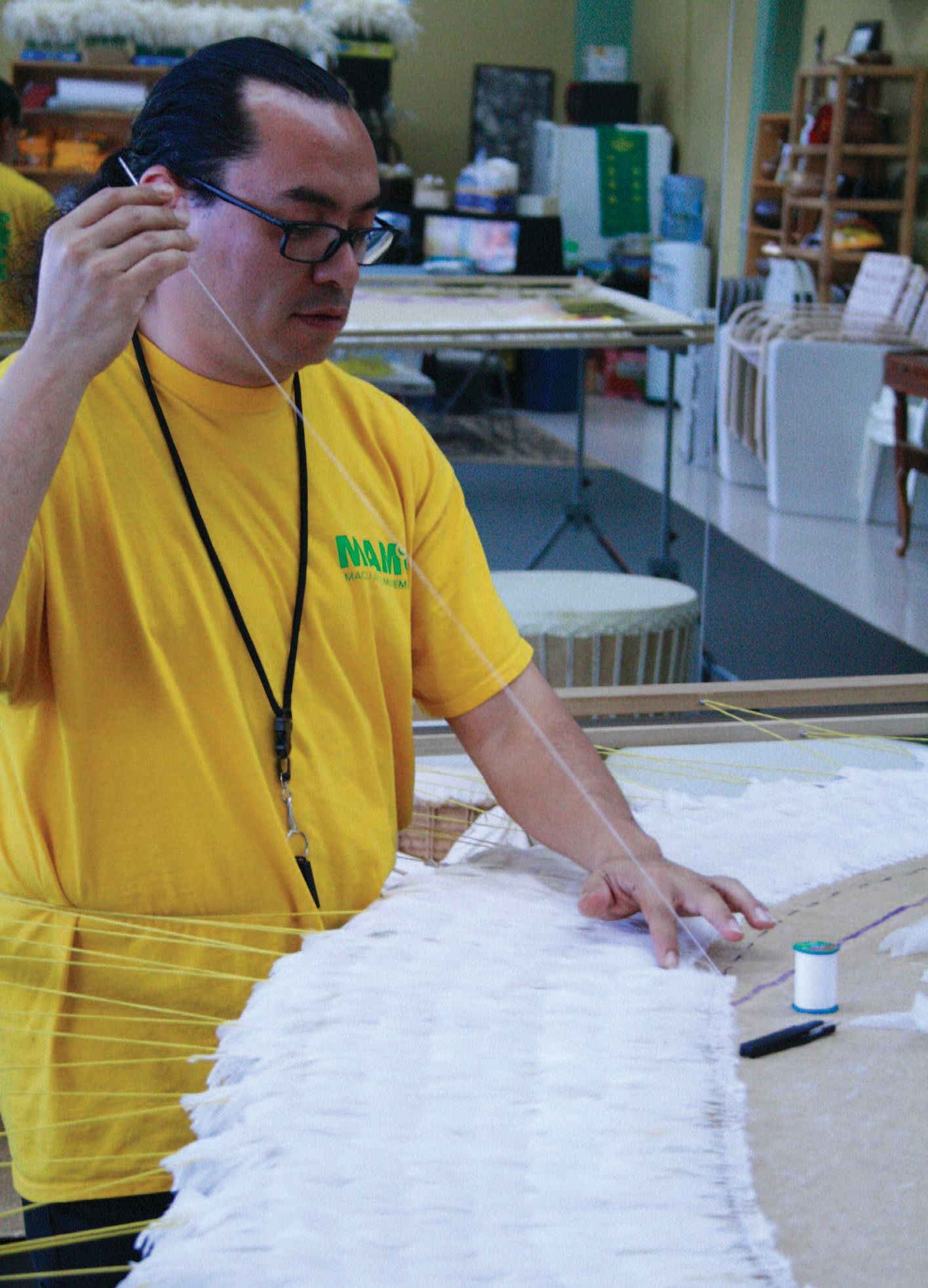
Kawika Lum-Nelmida making a contemporary 'ahu 'ula. He is stitching thousands of white chicken and goose feathers onto a stretched burlap background. Photo courtesy of the Pa'i Foundation, 2016.
Kawika Lum-Nelmida making a contemporary 'ahu 'ula. He is stitching thousands of white chicken and goose feathers onto a stretched burlap background. Photo courtesy of the Pa'i Foundation, 2016.
What do you see?
We don't know how the ancient Greeks would have understood this cup, with one face painted in a dark glaze and the other the colour of terracotta, but we do know that they didn't use 'black' or 'white' to describe people in the way that the terms are often used today.
The idea that people can be classified by the oppositional colours of black and white emerged in Europe and America over the past four centuries. It developed in tandem with the artificial category of race.
Kantharos cup, Athens, circa 470BCE
Purchased by M.D. Abrams in 1999. Fitzwilliam Museum GR.2.1999
Two-handled cups, known as kantharoi, were used by the ancient Greeks for drinking and making offerings of wine. They appear to have been closely associated with Dionysus, who was the god of wine. Often, they are plain, but some are in the shape of human or animal faces as well as those of gods and satyrs. When raising their cups drinkers would come face to face with a host of different characters.
Double-headed kantharoi tend to juxtapose distinct faces, so that the viewer is encouraged to compare and contrast them. Both faces on this kantharos are stylistically typical of the time. While some modern audiences might be surprised to see a Black person represented, depictions of Black people were relatively common on kantharoi and across Ancient Greek art more generally. On other ceramics we see Black people represented as political allies, as co-worshippers, as soldiers, as heroes and as servants.
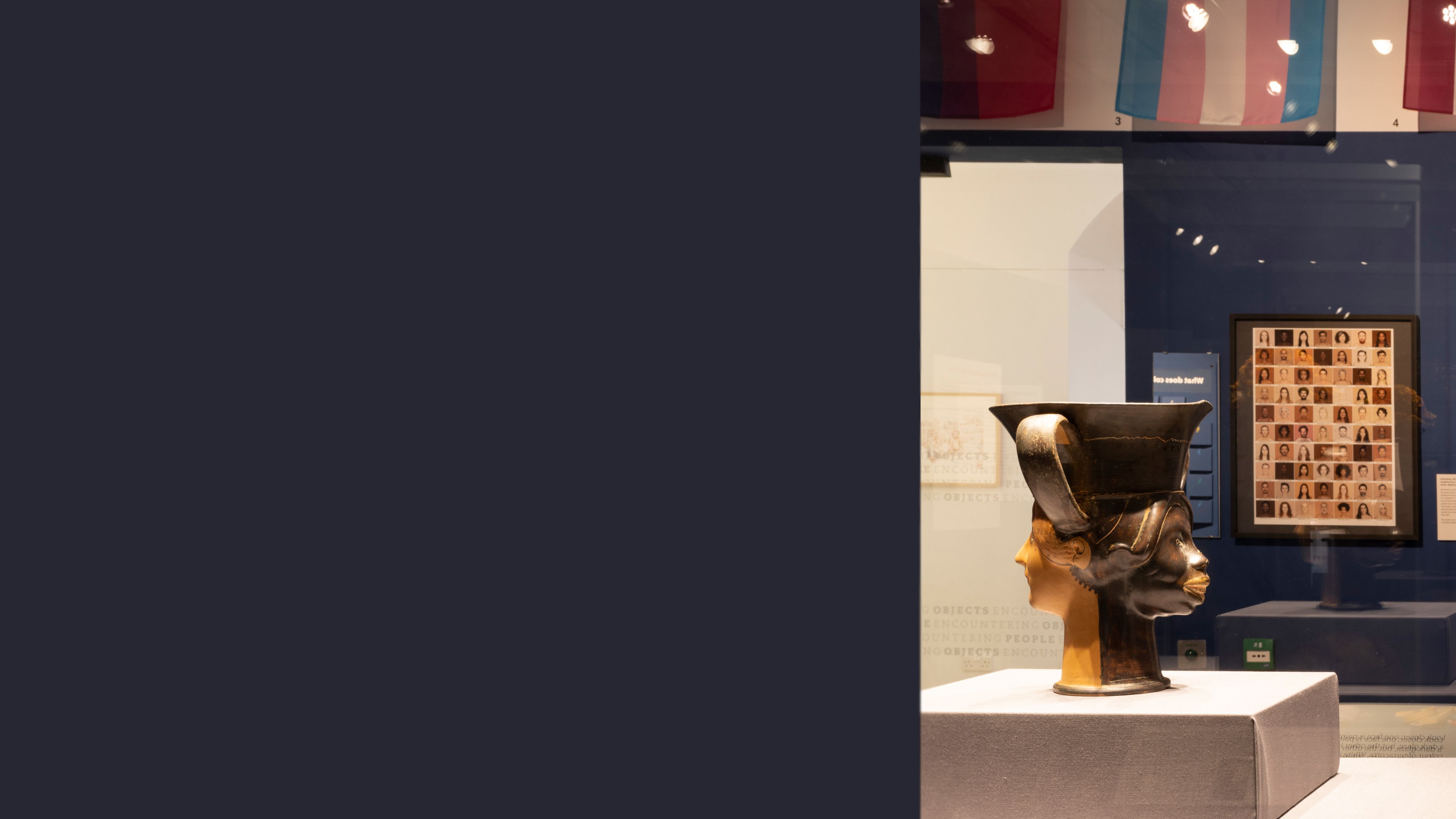
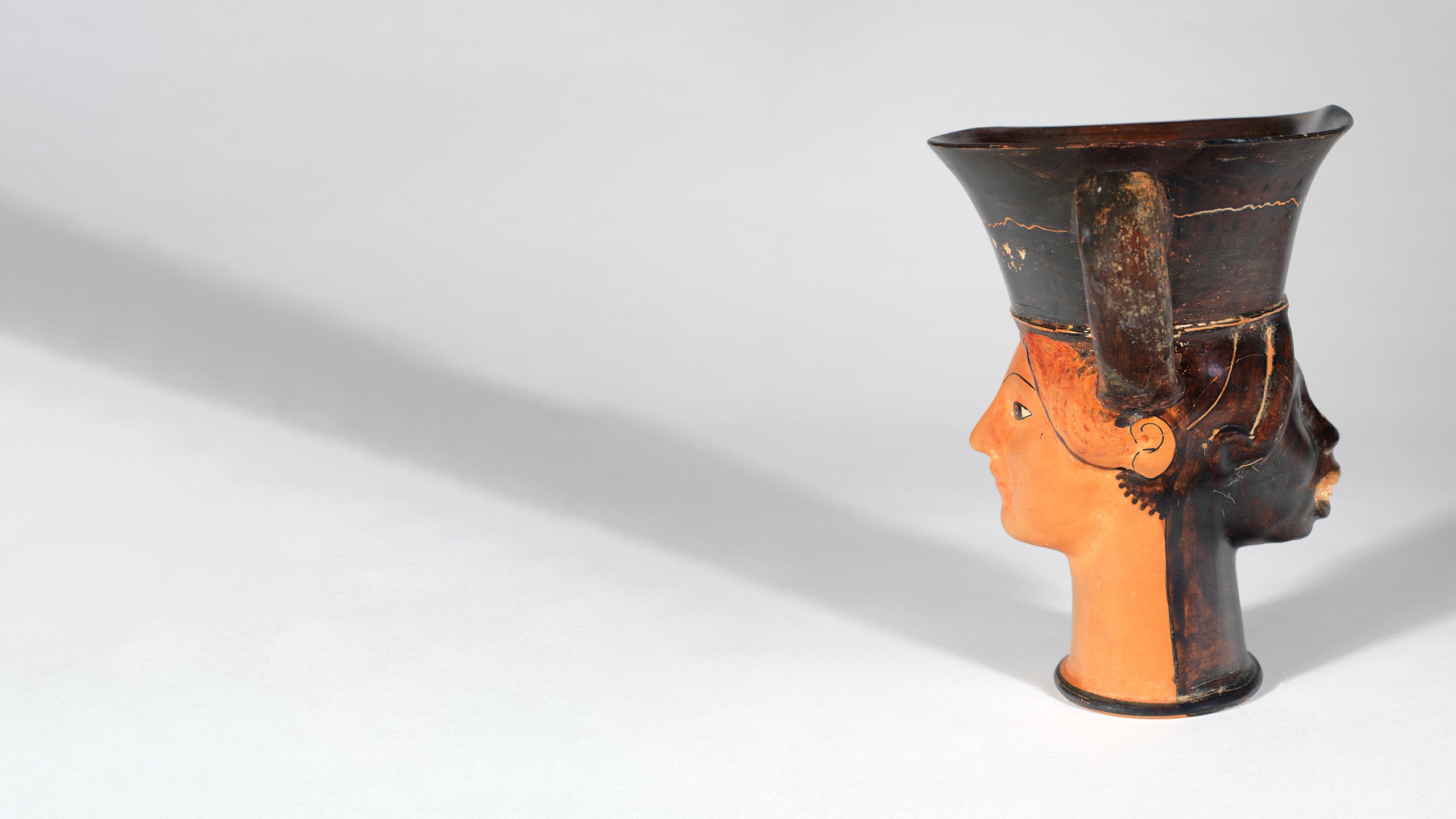
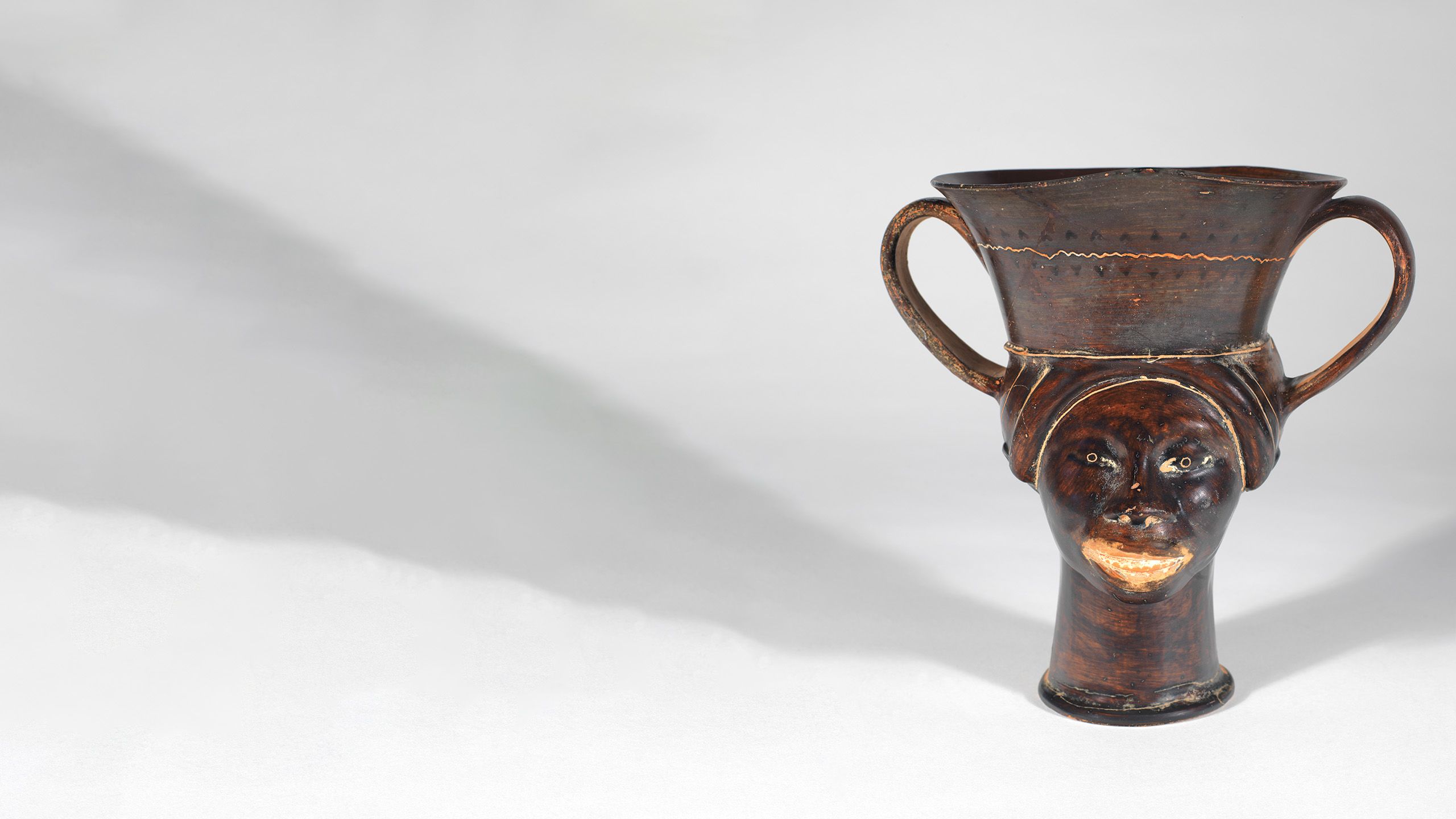
Classical Colour
Greek and Roman 'classical' sculpture has long been regarded as white. Centuries of weathering, deterioration and cleaning has stripped the polychrome from the original sculptures.
Colour is political. The notion that Ancient Greece is the foundation of Western civilisation, and the association of whiteness with European ideas of purity, harmony and beauty have influenced stereotypes about colour and race. The real diversity of people and skin colours in classical antiquity has disappeared from the popular imagination.
This perceived whiteness is challenged by the colour aesthetics of the classical world; yet caution is needed when attempting to restore polychrome to classical sculpture, as it is difficult to know how thickly the paint was applied.
Peplos Kore
Plaster casts of the original
Athens, circa 530BCE
Left: Acropolis Museum, 1889-1922 | Right: Purchased from Dresden, 1975
Museum of Classical Archaeology, University of Cambridge
The original sculpture, carved from Parian marble with traces of paint, was found on the Acropolis in Athens in 1886. Sculptures of Korai (young women) were used to mark graves or as votive offerings to the Gods. Peplos refers to a distinctive type of women's dress.
The figure to the right has been refashioned to include an outstretched arm holding a spherical object and meniskos (a little umbrella) to protect the sculpture from the elements. It was painted with bright primary colours in 1975 and again in 1996.
The reconstruction challenged neo-classical notions of whiteness and provoked controversy among many scholars and members of the public.
Identity, 2006
Emma Amos (1937-2020)
USA, Digital print with hand lithography
Women's Art Collection, Murray Edwards College
'Every time I think about colour it's a political statement'
Identity draws together a multitude of colours to represent a single person. Her face can be perceived as a whole or as two halves, each with a different eye colour and skin tone. The work raises questions about how we perceive and experience difference, both within ourselves and as a wider society.
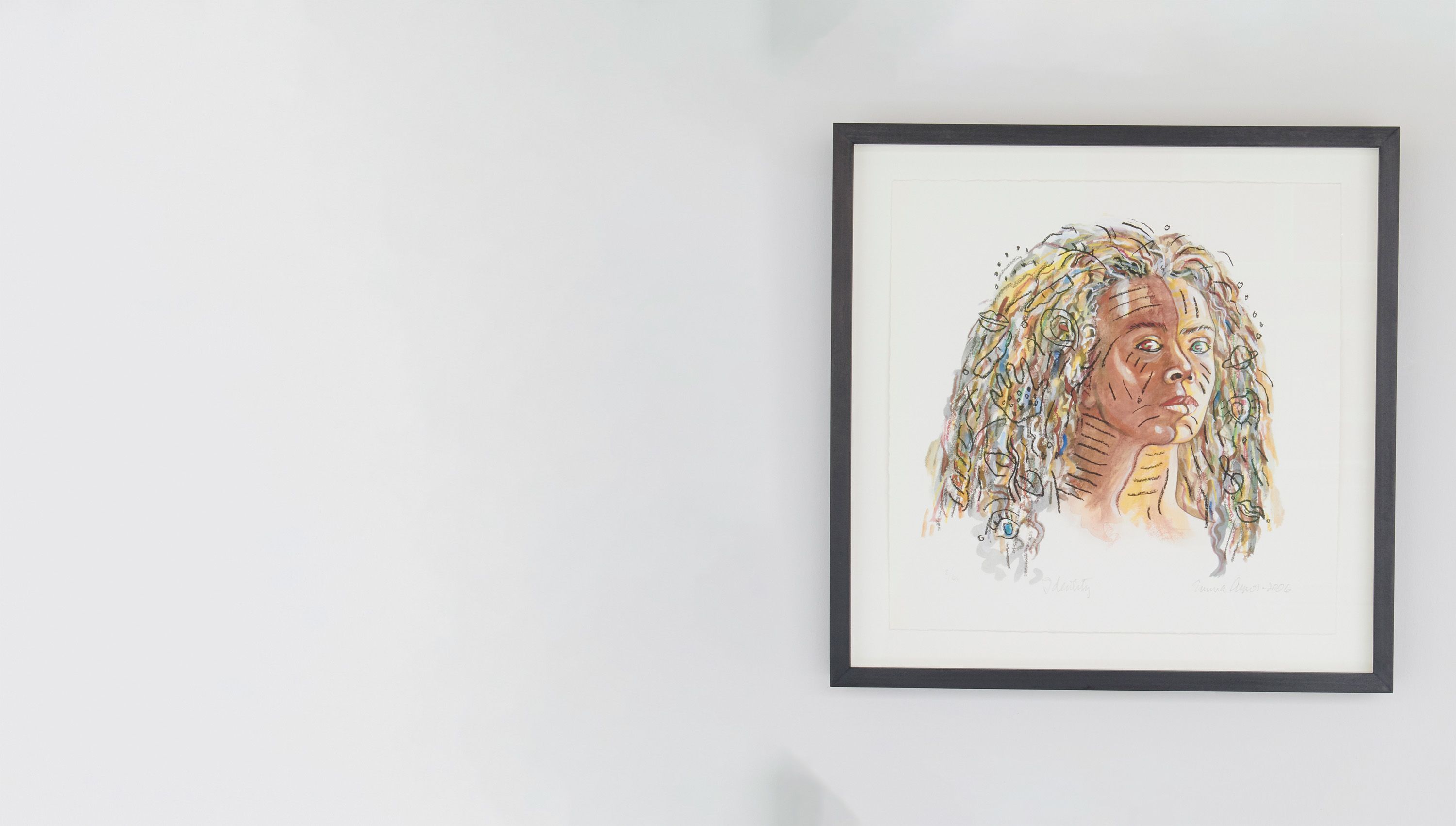
White Comedy, 1996
Benjamin Zephaniah (b.1958)
This poem plays with the binary opposites of black and white to reveal how racist stereotypes and ideology and embedded into language. The substitution of white for black in phrases such as whitetail, white sheep and white economy prompts the reader to consider how words like these influence the way we think about other people and the world around us. It was published in Benjamin Zephaniah's book of poems Propa Propaganda, issued by Bloodaxe Books.
Benjamin Zephaniah is an award-winning British-Jamaican poet who continues to have a considerable influence on contemporary poetry. His style of writing blends lyrical poetry and reggae rhythm, which is highlighted in his poetry performances.
Content warning: This poem contains a racial slur.
White Comedy
Benjamin Zephaniah
I was whitemailed
By a white witch,
Wid white magic
An white lies,
Branded by a white sheep
I slaved as a whitesmith
Near a white spot
Where I suffered whitewater fever.
Whitelisted as a whiteleg
I waz in de white book
As a master of white art,
It was like white death.
People called me white jack
Some hailed me as a white wog,
So I joined de white watch
Trained as a white guard
Lived off the white economy.
Caught and beaten by de whiteshirts
I waz condemned to a white mass,
Don't worry,
I shall be writing to de Black House.
The Colours we Share
Humanæ, 2022
Angélica Dass (b.1979)
Spain, digital print
Humanæ is a photographic work in progress, focusing on the colours we share. The background for each portrait is colour matched to a sample of 11 x 11 pixels taken from the nose of each participant. So far over 4,500 people have volunteered to be included.
The project, including this poster, eloquently demonstrates the impossibility of dividing people into categories based on the colour of their skin.
This poster was produced especially for the COLOUR exhibition.
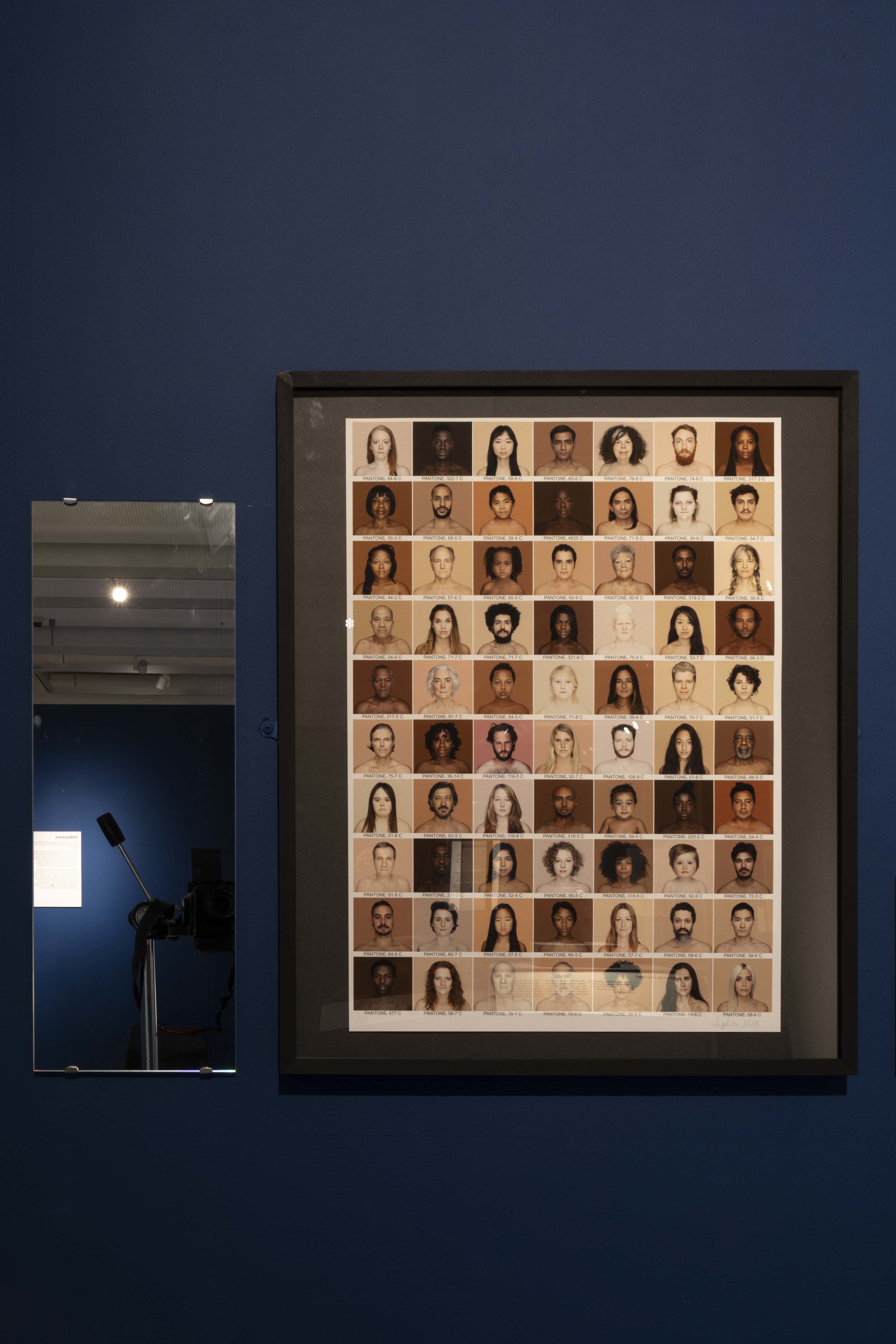
Pride flags
In 1978 Gilbert Baker designed a rainbow flag to represent the gay community. Uptake of the flag explored following the murder in the same year of Harvey Milk, the first openly cis - someone whose personal identity and gender corresponds to their sex at birth - gay man to be elected to public office in California.
The rainbow flag has remained popular, but as groups within the LGBTQ+ community advocated for their specific rights, separate flags were created. Today as new and evolving iterations of Queer gender and sexuality flourish, flags continue to diversify.
The colours in these flags have strong symbolic meanings. The black and brown stripes in the Philadelphia flag, for example, represent the long-overlooked contributions of Queer People of Colour to freedom struggles including LGBTQ+ liberation. The purple in the lesbian flag references the writings of the Ancient Greek poet Sappho. In the asexual flag the grey stripe represents the grey area between asexuality (represented by black) and sexuality (represented by white).
"As competing and at times intersecting aspects of my identity call for more or less attention depending on the social context, I find myself drawn to using more than one flag to represent myself in these varying contexts. This experience is shared by close members of my community."
These flags, displayed on the closing wall of the exhibition, were chosen by Rosa Colaço, Ange La Furcia and Jade Pollard-Crowe, Cambridge-based Queer People of Colour.
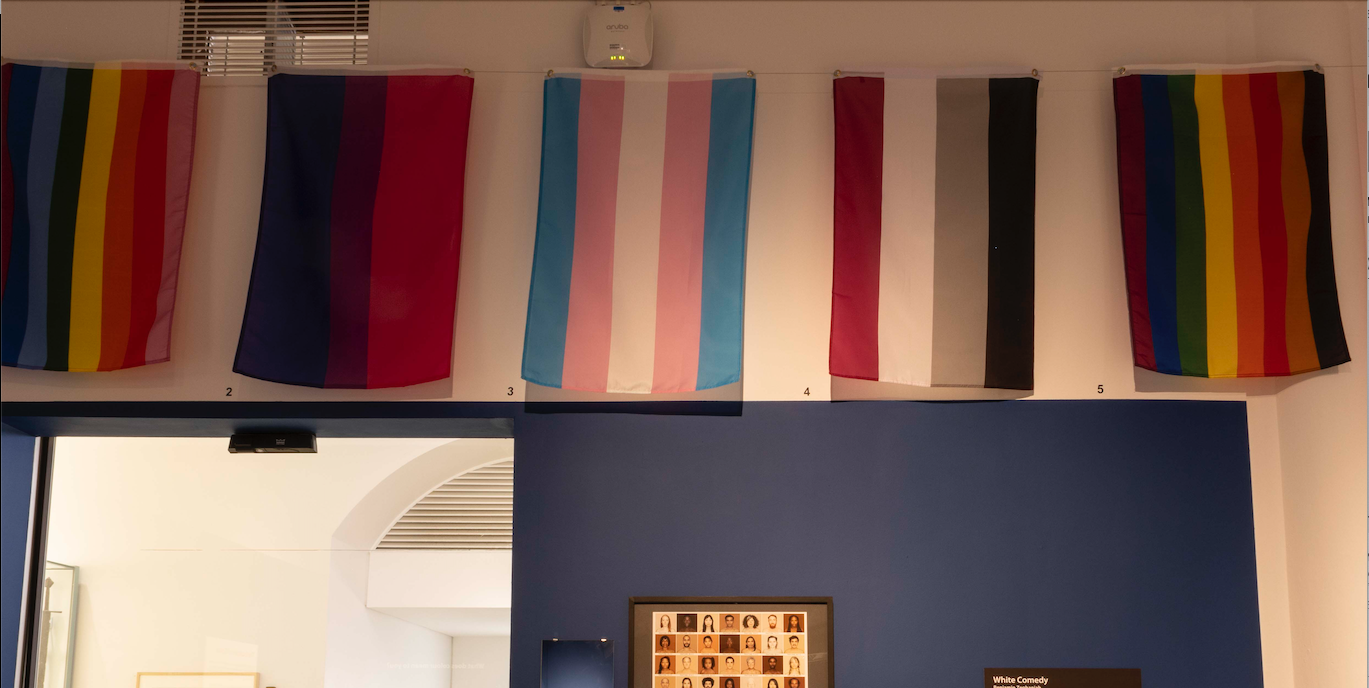

Original rainbow flag, Gilbert Baker, 1978
Original rainbow flag, Gilbert Baker, 1978

Bisexual flag, Michael Page, 1998
Bisexual flag, Michael Page, 1998

Transgender flag, Monica Helms, 1999
Transgender flag, Monica Helms, 1999

Asexual flag, Asexual Visibility and Education Network, 2010
Asexual flag, Asexual Visibility and Education Network, 2010

Philadelphia pride flag, Philadelphia's Office of LGBT Affairs and the design agency Tierney, 2017
Philadelphia pride flag, Philadelphia's Office of LGBT Affairs and the design agency Tierney, 2017

Sunset lesbian flag, Emily Gwen, 2018
Sunset lesbian flag, Emily Gwen, 2018

Black Lives Matter pride flag, circa 2020
Black Lives Matter pride flag, circa 2020
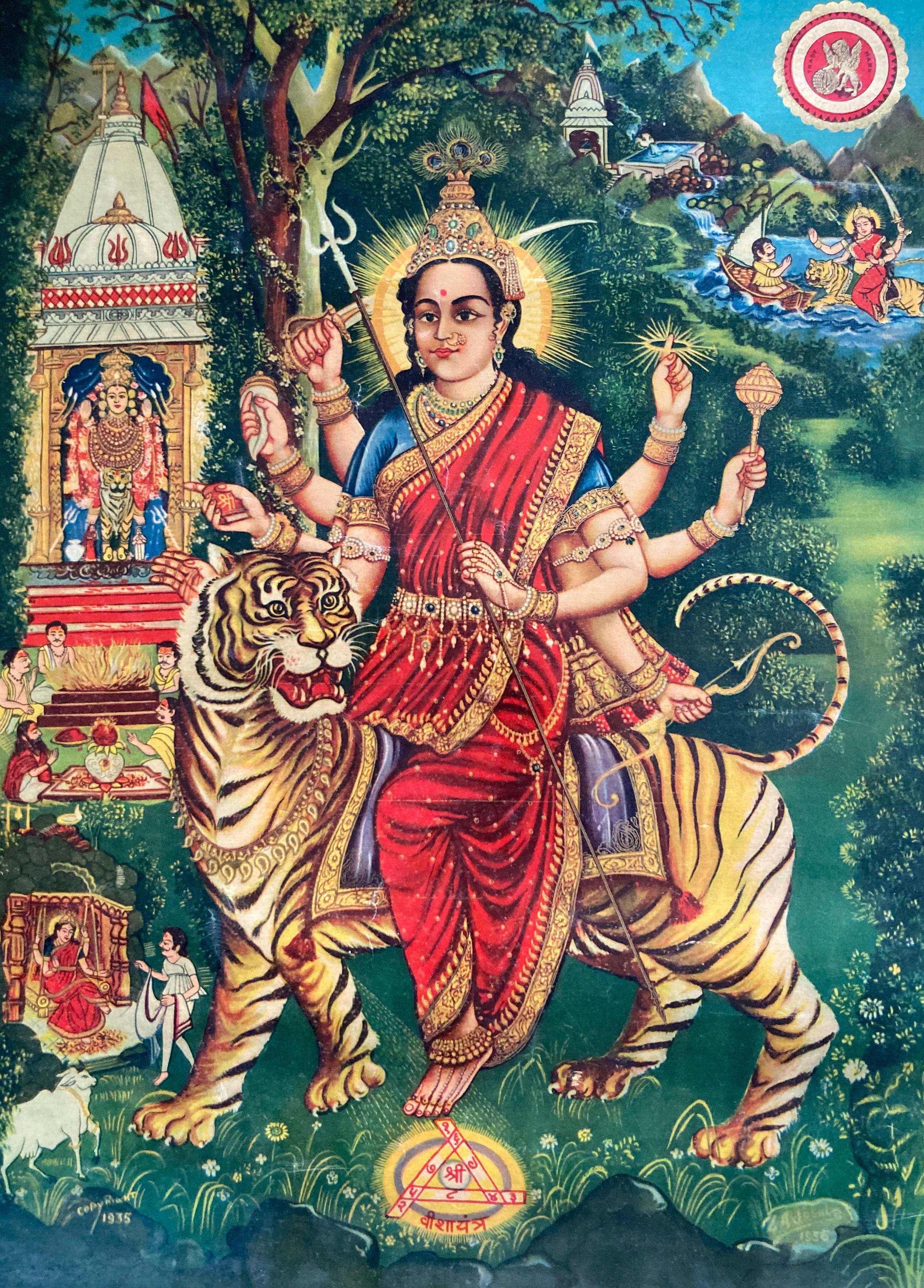
Calendar advertisement for the German colour manufacturing company Bayer. The poster features a painting of the goddess Durga/Ambaby the commercial Gujarati artist L.A. Joshi, and reproductions of some of the labels used to market Bayer’s chemical colours in India. Printed in Bombay by the Pravin Colour Company. Loan from Christopher Pinney
Calendar advertisement for the German colour manufacturing company Bayer. The poster features a painting of the goddess Durga/Ambaby the commercial Gujarati artist L.A. Joshi, and reproductions of some of the labels used to market Bayer’s chemical colours in India. Printed in Bombay by the Pravin Colour Company. Loan from Christopher Pinney
The Explosion of Colour
In 1856 William Perkin, an aspiring London chemist, accidentally produced a rich purple dye when experimenting with aniline, an oily liquid found in coal tar. Patented as mauve, it soon became a fashion craze.
The race to develop new aniline colours marked the beginning of the chemical dye industry. Colour production developed alongside other industrial applications from fertilisers to explosives. A growing range of colours was marketed worldwide by competing chemical companies. New colours were quickly embraced by artists and textile designers for their own uses and aesthetics.
Today most people have access to a seemingly infinite range of colours produced cheaply and sold globally. In some ways colour has become democratised, but it has also become systemised for reproduction according to industry standards. New colours are continuously created to influence fashion and stimulate sales.
What does colour mean to you?
This exhibition encourages visitors to explore different ways that colours are perceived, experienced and given meaning. The displays only represent a fraction of the complex meanings and uses of colour in different times and places. At the end of the exhibition we encourage visitors to add their own reflections.
Responses have been amazing, each day our 'feedback face' fills up with new thoughts and ideas. We're documenting some of the most beautiful, intriguing, or thought-provoking on our Instagram account. Every few weeks we'll add new images.
Let us know what colour means to you using #MAAColour on Twitter or Instagram.
